It’s time we pull together to farm, with less harm.






1 Page 1 inside Vol 21 No 25, July 3, 2023 View online at farmersweekly.co.nz $4.95 Incl GST
The way we farm, is causing too much harm.
On-farm accidents are bringing far too much cost to rural communities. We pay in lost earnings. Time off work. Long-term rehabilitation. Reduced productivity. And then, there’s the costs that can’t be measuredlike failed businesses, devastated families, and lives that may never be the same again.
When one of us is seriously injured, the effects ripple through everyone who depends on us, works with us, supplies us or buys from us. Which is why it’s time for us all of us to draw a line - and play our part in cutting farming’s human cost.
And from the back blocks, to the boardrooms, to the breakfast tableit’s up to all of us.
It’s time we all take it on - and all play a part. Because taking chances or cutting corners doesn’t just come down to the person on the tools - but to the attitudes, pressures and systems that shape what they do, and how they do it.
Farming has its dangers. But far too much harm, is preventable. And the biggest thing stopping us from getting better outcomes... can be our willingness to get involved, call out complacency, and set new standards.
So it’s time for all of us to look at the roles we can play... and the changes we need to make to protect ourselves, those who work for us, and rely on us.
So
JOIN THOSE WHO HAVE ALREADY PLEDGED TO WORK TOGETHER, TO FARM WITHOUT HARM.
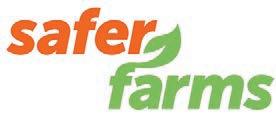
• Colin Glass, Dairy Holdings
• Ben & Libby Tosswill, Birch Hill Station
• Andrew Olsen, Rural Contractors
• Mark Leslie, Pāmu
• Andrew Beijeman, Atihau Whanganui Inc.
• Peter Conley, ANZCO Foods
• Stephen Guerin, PGG Wrightson
• Tanya Houghton, Farmlands
• Tony Coltman, Datona Ltd & Rahi Partnership
• Lee-Ann Marsh & Nick Pyke, AGMARDT
• Sam McIvor & Justine Kidd, Beef + Lamb NZ
• Tim McKay, Fortuna Group
• Terry Copeland, Federated Farmers
• Lindy & David Nelson, Ratahiwi Farm
• Rob Hewett, Silver Fern Farms
• Prem Maan, Southern Pastures
• Garry Diack, Ravensdown
• Jenna Smith, Pouarua Farms
• Pattie & Tony O’Boyle, Marainga Farm
• Will Noble, Farm IQ
• Stu Taylor, Craigmore
• Mavis Mullins MNZM, Hou Tatara Ltd


• Jo Loe, Growing Future Farmers
• Grant Watson, Synlait
• Kat Scott, Rural Leaders & Landpro
• Sam Inglis, Ngāi Tahu Holdings
• David & Doug Turner, Rakaia Island Dairies
• Andre Syben, Ag Drive
• Pat McEvedy, Alliance Group
• Lynda Coppersmith, NZ Young Farmers
• Tony Egan, Greenlea
• Mark & Devon Slee, Melrose Dairy
• Delwyn Pring, BakerAg
• Derek Daniells, Wairere Stud
• Doug & Tom Turner, Woodstock Farming
• Michelle & Leighton Pye, Pye Group
• Jim Lee, Farmright
• Karl Grandon, Miraka
• Glen Jackson, Oha Honey
• Nick Robinson, Sustainable Dairy
• Adam Heath & Nicky McKay, FMG
• Simon Le Heron, Grasslands
bit half-arsed.
Help us start a new conversation - about how we can all farm, with less harm. Looking clearly at our risks. Talking about the solutions that work for us. And helping set new expectations... not just for ourselves, but for anyone who works alongside us. SIGN
• Miles Hurrell & Anne Douglas, Fonterra
• John Nicholls, Rylib Group
• Meg Weatstone, Farmer, Tinui
• Jules Benton, Dairy Womens Network
• David Chin, LIC
• Scott Armer, Armer Group
• Phil Holden, TAMA & Shearing Contractors Assoc.
• Frano Staub, Theland
• Laurie Paterson, Groundswell
• Terry Kilday, Camden Group
• Alison Stewart, FAR
• Trevor Hamilton, TH Enterprises
• Innes Moffatt & Mandy Bell, Deer Industry NZ
• Murray Turley, Turley Farms
lets call it out, if we’re being a
THE PLEDGE.
VOICE.
JOIN THE CHANGE.
ADD YOUR
AND
AT farmwithoutharm.org.nz
Reset may open doors to China
Mānuka saga shows up gap in law
the words “mānuka honey” to reference honey products originating outside of New Zealand.
MĀNUKA honey will remain a lost opportunity to tell and sell a truly New Zealand story unless there are significant changes made to this country’s rules on indigenous ownership and identity.
James & Wells Taurangabased trademark and intellectual property (IP) lawyer Tonia Brugh said the recent decision by NZ’s Intellectual Property Office (IPONZ) to support Australian honey producers’ claim to use the term “mānuka honey” was as disappointing as it was inevitable. This is because NZ trademark law does not recognise the exclusive association of Māori trademarks with Aotearoa New Zealand.
Brugh brings a distinctive perspective to her take on the decision, having spent her formative years living in Rarotonga and working as an advocate for Pasifika and Māori entrepreneurs.
Her pro-bono work also includes supporting the Te Aka Māori Dictionary and working with Māori-owned television and content company Long White Cloud Productions.
The Mānuka Charitable Trust has announced it will not be appealing IPONZ’s ruling that Australian producers can use
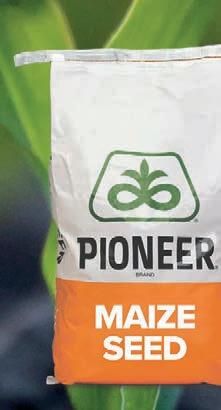
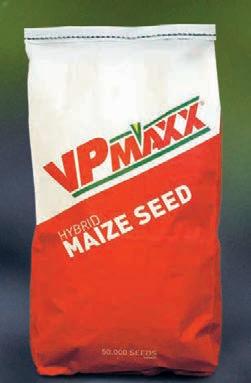

Brugh said to do so may have been a case of throwing good money after bad, given NZ trademark law provides little recognition for indigenous IP.
In her ruling on the use of the phrase, IPONZ Assistant Commissioner Natasha Alley noted with sympathy that while tikanga principles were relevant, they could not override the Trade Marks Act, which makes no allowance for such cultural definitions.
This use of our taonga by others is not going to go away. You can argue the morality of it, but the Australians clearly saw an opportunity and took it.
Her ruling essentially noted the phrase “mānuka” had been in use for so long it lacked the distinctiveness of a trademark.
Brugh said any re-working of trade mark law needs to incorporate the intentions of the Wai262 claim, one of the most complex in the history of the Waitangi Treaty settlements.
Continued page 3
New SATE takes his seat at the






table
Humbled to be offered the agricultural trade envoy role, Hamish Marr says he believes he had a responsibility to ‘give it a crack’.


PEOPLE 20
The day the earth opened in Ongaonga
Matt Holden was quick to search for positives when a huge crevasse suddenly appeared on his Hawke’s Bay sheep farm after the region’s latest downpour.


NEWS 7


Agricultural leaders say some significant Freshwater Farm Plan issues remain unresolved.
NEWS 13
LIC and CRV question the need for a new breeding worth index as proposed by DairyNZ.

TECHNOLOGY 13

A new study looks into the market and capacity for harvesting pasture to feed people.
TECHNOLOGY 21
FAR_10906 Order your Pioneer or VPMaxx Maize through Farmlands this winter, and get a $50 Farmlands Chem Card for every 10 Bags of Pioneer or 16 Bags of VPMaxx maize seed you buy* Talk to your TFO or agronomist today, or head into your local Farmlands store. *Terms and Conditions apply. This deal only lasts until July 31st 2023. Find out more by visiting farmlands.co.nz. Grab your
1
Maize & Bag a Bonus
Vol 21 No 25, July 3, 2023 View online at farmersweekly.co.nz $4.95 Incl GST
6
Richard Rennie MARKETS Regulation and policy
Tonia Brugh James & Wells
Advertise Get in touch
EDITORIAL
Bryan Gibson | 06 323 1519
Managing Editor
bryan.gibson@agrihq.co.nz
Craig Page | 03 470 2469
Deputy Editor craig.page@agrihq.co.nz
Claire Robertson
Sub-Editor claire.robertson@agrihq.co.nz
Neal Wallace | 03 474 9240
Journalist neal.wallace@agrihq.co.nz
Gerald Piddock | 027 486 8346
Journalist gerald.piddock@agrihq.co.nz
Annette Scott | 021 908 400
Journalist annette.scott@agrihq.co.nz
Hugh Stringleman | 09 432 8594
Journalist hugh.stringleman@agrihq.co.nz
Richard Rennie | 027 475 4256
Journalist richard.rennie@agrihq.co.nz
Nigel Stirling | 021 136 5570
Journalist nigel.g.stirling@gmail.com
PRODUCTION
Lana Kieselbach | 027 739 4295 production@agrihq.co.nz
ADVERTISING MATERIAL
Supply to: adcopy@agrihq.co.nz
SUBSCRIPTIONS
0800 85 25 80 subs@agrihq.co.nz
PRINTER
Printed by Stuff Ltd
Delivered by Reach Media Ltd
SALES CONTACTS
Andy Whitson | 027 626 2269 Sales & Marketing Manager andy.whitson@agrihq.co.nz
Steve McLaren | 027 205 1456 Auckland/Northland Partnership Manager steve.mclaren@agrihq.co.nz
Jody Anderson | 027 474 6094 Waikato/Bay of Plenty Partnership Manager jody.anderson@agrihq.co.nz
Palak Arora | 027 474 6095 Lower North Island Partnership Manager palak.arora@agrihq.co.nz
Omid Rafyee | 027 474 6091 South Island Partnership Manager omid.rafyee@agrihq.co.nz
Debbie Brown | 06 323 0765 Marketplace Partnership Manager classifieds@agrihq.co.nz
Grant Marshall | 027 887 5568 Real Estate Partnership Manager realestate@agrihq.co.nz
Andrea Mansfield | 027 602 4925 National Livestock Manager livestock@agrihq.co.nz
PUBLISHERS
Dean and Cushla Williamson
Phone: 027 323 9407 dean.williamson@agrihq.co.nz cushla.williamson@agrihq.co.nz
Farmers Weekly is Published by AgriHQ PO Box 529, Feilding 4740, New Zealand Phone: 0800 85 25 80 Website: www.farmersweekly.co.nz
ISSN 2463-6002 (Print)







ISSN 2463-6010 (Online)
New Zealand’s most trusted source of agricultural news and information
News in brief
Top ethical butter
Lewis Road Creamery’s 10 Star ethical grass-fed butter has been judged Product of the Year at the Sofi Awards in the United States.
The awards are presented by the notfor-profit Specialty Food Association, the leading membership trade association in the $175 billion specialty food industry. A panel of food experts selected the winners from nearly 2000 entries across 53 product categories.
Training review
The Waipoa Station Farm Cadet training course will not have an intake of firstyear cadets in 2024 as the governing trust completes a strategic review of the need and the sponsorship.
A pending change of ownership of the station is a factor, but not Cyclone Gabrielle and any recent storms, floods and damage, trust chair Tim Rhodes said. Existing cadets on a two-year residency will not be affected by the temporary suspension.
Compliance issues
Environment Southland’s first aerial compliance inspection of the winter grazing season has identified 21 sites of interest. The flights were conducted on June 13.
Resource management manager Donna Ferguson said it is now following up on the sites, checking consents, and identifying if further action needs to be taken.
Bank satisfaction
MISSES: Federated Farmers board member and Tairāwhiti farmer Sandra Faulkner says the local government report may be a victim of bad timing, with Gabrielle having changed much for rural councils.
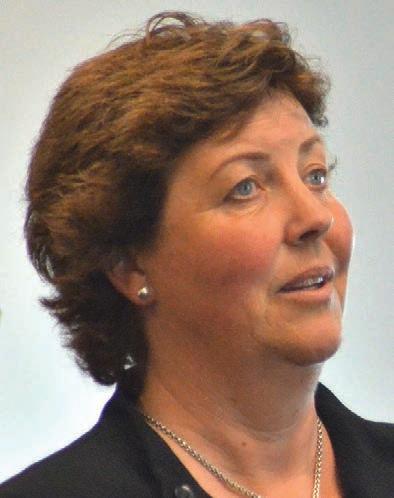
Farmers’ satisfaction with their banks continues to slip, and more feel they are being placed under undue pressure, the latest Federated Farmers Banking Survey shows.
Although the majority of the 1017 respondents in the May survey remain satisfied with their banks, with 56% very satisfied or satisfied, this was down three points from the previous survey in November 2022 – and is the lowest since the biannual surveys began in May 2015.
Back in 1860, exporting meat to the other side of the world seemed about as easy as nailing gravy to the ceiling. But a few determined kiwis took the bull by the horns and now our grass-fed beef and lamb is sought-after all around the globe.
At AFFCO, we see the same pioneering spirit alive and well in farmers today. We’re playing our part too – exploring every opportunity to take New Zealand’s finest farm-raised products to the world.
WWW.AFFCO.CO.NZ 0800 233 2669
WAVE200472 AFFJ200472 NZ Farmers Weekly Strip Ad FA.indd 1 24/08/22 3:22 PM 2
our pioneering spirit tells us nothing’s out of reach
Contents
P12 News . . . . . . . . . . . . . 1-13 Ag & Ed � � � � � � � � � � 14-15 Opinion . . . . . . . . . 16-19 People . . . . . . . . . . . . . 20 Technology . . . . . . . . . 21 Real Estate . . . . . . 22-25 Marketplace . . . . . . . . 26 Livestock . . . . . . . . . . . 27 Markets . . . . . . . . . 28-33 Weather . . . . . . . . . . . . 34
STORY
N Island finance support package laid out
Craig Page NEWS Weather
GROWERS and farmers impacted by recent cyclones and flooding will get cheaper and improved access to finance as part of a new government support package.

Finance Minister Grant Robertson announced the North Island Weather Events (NIWE) Loan Guarantee Scheme to provide relief to affected businesses seeking lending. The government will underwrite 80% of the credit risk on covered loans, allowing banks to reduce interest rates and offer more flexible terms.
“The government’s underwrite will support loans of up to five years agreed by businesses and their banks of up to $10 million from the scheme, including refinancing of existing loans,” Robertson said.
The package includes the NIWE Primary Producer Finance Scheme, providing capital for affected growers and farmers unable to access lending. The funding will target businesses that have been severely affected by the weather events and have a reasonable likelihood of being commercially viable, but cannot currently access commercial finance.
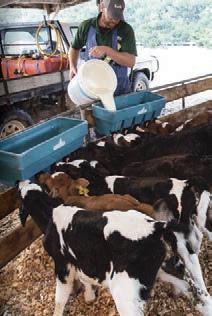
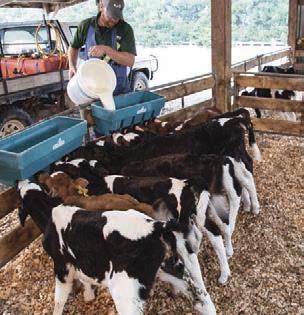
Continued from page 1
Sometimes known as the “flora and fauna” claim, it addresses ownership and use of Māori cultural expressions, species and taonga, and demands the reexamining of policy areas under existing law of over 20 government agencies. It was announced over a decade ago.
“The government will claim it has made inroads, but really that is only in limited areas. These include having a Māori Advisory Committee for trademarks, and one for patents, but in either case
“This scheme enables the government to provide concessionary loans and equity finance for land-based primary sector producers up to $4m per business from a pool of up to $240m set aside in total,” Emergency Management Minister Kieran McAnulty said.
“It will provide a way for businesses to fully re-engage with lenders at a later date, once we have helped them get back on their feet. This will in turn contribute towards their recovery, and provide better regional, social and economic outcomes in cyclone-
they do not go far enough and won’t until the legislation itself is changed to recognise Wai262,” Brugh said.

Her concerns echo those expressed by Mānuka Charitable Trust chair Pita Tipene after the ruling.

He expressed disappointment that iwi’s role in protecting taonga species including mānuka was not contestable under NZ law.
Another option to protect such indigenous brands could be through geographic indications (GI)s.

These offer protection on


affected regions.”


Robertson said the government is not able to pay the full cost of the recovery and rebuild but the package will ensure banks continue to play an integral role in the recovery.
“We are committed to helping affected regions recover. Around $2 billion of support has already been committed so far, including $74m in grants to farmers and growers and a $1bn flood and cyclone recovery package as part of Budget 2023. Another $6bn in initial funding has been committed for a National Resilience Plan to
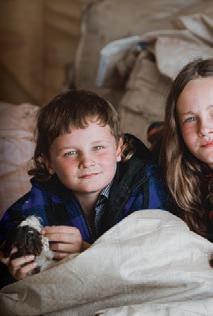
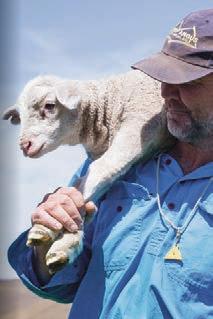

specific food and beverages from specific regions, such as Parmesan cheese from Parma in Italy, Champagne from Champagne in France, or balsamic vinegar from Modena, also in Italy. NZ wines and spirits have GIs for regional protection.
“Geographical Indications can be created, but you have to be prepared to put in some effort and spend money to put them in place, and if you do not have good law supporting them, then they can be weak too,” Brugh said.
Having GIs in place will require significant gathering of evidence

focus on building back better from the recent weather events.”
More details will be released in coming weeks but the scheme should be operational by the end of July. Businesses can register interest in the scheme with their banks.
Industry groups have welcomed the announcement.
Horticulture New Zealand chief executive Nadine Tunley said the package is the result of crosssector involvement.
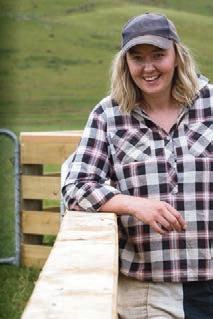
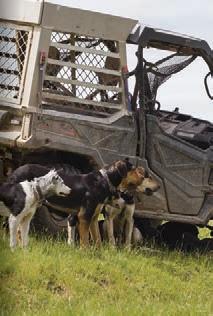

“This package will hopefully provide vital help to businesses across the areas affected by the weather events in the North Island, including horticulture businesses. We know many businesses are still grappling with funding repairs and rebuild efforts. We hope this package and announcement will help relieve the pressure and stress people are facing, so they can get on with the recovery and provide jobs for people in regional New Zealand.”
LeaderBrand chief executive Richard Burke said it is a “win-win”.

“Businesses like ours provide hundreds of thousands of jobs for people in the regions. In our case, we also supply the whole country with healthy, fresh food. Being supported in this way to get on with the recovery is a win-win for everyone involved.”
over the entire mānuka honey production process.
The Italian GI “bible”, for example, has risotto rice from the Po River area defined by a specific product description, production method (including seed sourcing), appearance, flavour, and its sharply defined production area.
“GIs are not cheap, but we do have them for wines and spirits, and could have them for other products.”

Brugh finds it ironic at a time when NZ is being told to market its “story” and food’s provenance that
The government’s underwrite will support loans of up to five years agreed by businesses and their banks of up to $10 million from the scheme, including refinancing of existing loans.
Grant Robertson Finance Minister
The cabinet has also announced a government inquiry under the Inquiries Act 2013 to review the response to the North Island severe weather events.
“It is normal practice for local Civil Defence to review the response to a severe weather event, regardless of size. Given the significance of Hale, the Auckland floods and Gabrielle, it is appropriate that a government inquiry is set up. It will be led by former governor-general Sir Jerry Mateparae,” McAnulty said. “Affected communities, including rural, Māori and Pacific communities, have raised concerns about communication and support during the response.
“There are lessons to be learnt. It is important we incorporate these into our systems so we can continue to improve.”
the unique aspect of indigenous taonga lacks protection.
“This use of our taonga by others is not going to go away. You can argue the morality of it, but the Australians clearly saw an opportunity and took it.
“We are happy to amend legislation like the Resource Management Act.
“Perhaps the government could stand behind the recommendations set out in Wai262 and make important amendments to our current legislation to protect indigenous IP.”
6–7 JULY INSTORE DAYS 2023 RURALCO.CO.NZ 0800 787 256 RURALCO@RURALCO.CO.NZ Check out the great Instore Days deals at www.ruralco.co.nz/instoredays SHOP WITH YOUR RURALCO CARD AT PARTICIPATING SUPPLIERS IN STORE OR ONLINE FROM 1 JUNE TO 9 JULY TO BE IN THE DRAW* *TERMS & CONDITIONS APPLY 3 FARMERS WEEKLY – farmersweekly.co.nz – July 3, 2023 News 3
HELPING HAND: Finance Minister Grant Robertson says the government is not able to pay the full cost of the recovery but the package will ensure banks continue to play an integral role in it.
Dairy an FTA obstacle in key markets
Neal Wallace MARKETS Trade
DAIRY will prove an obstacle in any free trade negotiations between New Zealand and two of the world’s largest economies, India and the United States.
Vangelis Vitalis, the Deputy Secretary for Trade and Economics with the Ministry of Foreign Affairs and Trade, told the South Island Dairy Event in Invercargill that, in an example of how those two nations protect their own dairy producers, the sector was excluded from a trade deal Australia recently negotiated with
India. That deal, however, provided significant gains for wine, barley and rock lobster.
Vitalis said should the NZEuropean Union free trade agreement (FTA) be ratified, NZ will supply 60% of imported butter into the EU, a market that has been dominated by the UK.

He told several hundred people at the conference that the primary sector needs to be more vocal in its support for FTAs. The wider public support for such agreements that existed up until five years ago is no longer, he said.
He said the global trade environment has changed from what he called the golden era of 1995 to 2018.
Then, the World Trade
Alliance, Silver Fern ink China deals
NEW Zealand’s two largest meat companies have signed new agreements to increase their retail presence in China.
Alliance Group and Silver Fern Farms (SFF) were part of last week’s business delegation to China, led by Prime Minister Chris Hipkins.
He attended the ceremonial signing of memorandum of understanding agreements between the NZ exporters and Chinese partners in Beijing.
SFF is working with Chinese partner Paradise Garden to achieve $18 million in additional annual sales by accessing new retailers such as Olé Supermarket, Walmart, Ding Dong Maicai and Sam’s Club to sell chilled and frozen meat.
Alliance Group and its longtime Chinese partner Grand Farm committed to a significant push of the cooperative’s grass-fed lamb,
mutton, beef and venison into new parts of China.
AGL and Grand Farm have been partners for almost 25 years and the agreement will see Alliance lamb, mutton, beef and venison, including its premium branded products, marketed in southern China and cities such as Shanghai.

The agreement will enable Alliance to promote its Pure South, Silere, Lumina and Handpicked product ranges to a broader base of Chinese consumers across multiple channels.
Grand Farm owns and operates 105 specialty retail butcheries and supplies products to more than 2000 meat counters in selected supermarkets, minimarts and hypermarkets and a wholesale distribution network extending beyond 2400 outlets supplying retail in China.
– Neal Wallace
Organisation (WTO) acted as a court for trade disputes, governments were reducing domestic subsidies and trade barriers, and in NZ there was bipolitical and public support for free trade agreements.
Those conditions have changed.
Despite the wishes of 164 WTO members, the US has refused to endorse a new tranche of judges, leaving the global trade court unable to function.
Some of the largest economies are increasing support for their domestic producers and imposing barriers for imported products.
For example, US cotton producers will this year receive $US100,000 (about $165,000) in subsidies. Five years ago that number was less than $US40,000.
Recently, NZ successfully rejected a move by one country that required dairy tanker drivers to test negative for covid before starting their shift even though they don’t have contact with milk.
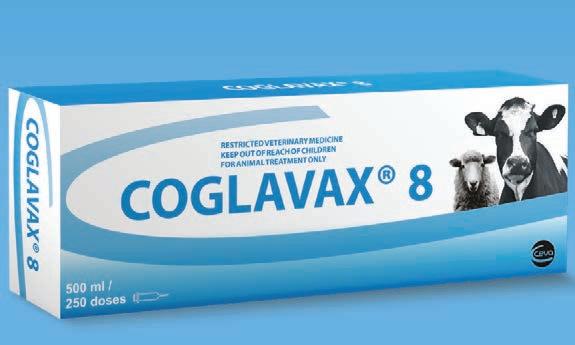
Domestically, the Labour Party voted against the 10-nation Comprehensive and Progressive Agreement for Trans-Pacific Partnership (CPTPP) and there was a mass public protest against the agreement.
Vitalis urged farmers and the primary sector to be more vocal in their support of FTAs.
“Don’t assume everyone supports FTAs. We need producers and businesses to show their support, to tell how it will benefit them and the economy.”
Countries are requiring exporters to meet environmental and climate change standards.
Vitalis said a survey in 2018 revealed world governments had imposed 986 new environmental measures.
That same survey in 2022 put that figure at 3842.
The EU FTA is still to be ratified by the bloc’s 27 individual parliaments, a step that has previously halted FTAs with Canada and four South American
countries due to environmental concerns.
Vitalis said during initial negotiations with the EU, politicians asked him 200 questions, of which 91% related to environmental issues.
NZ’s answer to these challenges is to negotiate FTAs that include agreed rules and disputeresolution processes.
The benefits are worth pursuing, he said.
Should the EU FTA be completed, 74% of NZ’s trade will have protected access.
The China-Hong Kong FTA is worth about $23 billion – but the CPTPP is worth $26bn, and should the United Kingdom join, as it has indicated it wants to, it will elevate to $28.5bn.
Membership of the CPTPP has progressively expanded since December 30 2018 and now includes NZ, Singapore, Mexico,
Japan, Canada, Australia, Vietnam, Peru, Malaysia and Chile. The potential for further FTA deals could increase the CPTPP’s worth to NZ to as much as $42bn, Vitalis said.

Don’t assume everyone supports FTAs. We need producers and businesses to show their support, to tell how it will benefit them and the economy.
Vangelis Vitalis Ministry of Foreign Affairs and Trade
However, two major economies are missing from these multicountry agreements: the US and India, and he doesn’t see any desire from the US in particular to discuss an FTA.
Changing
to Coglavax8 increased the survival rate of our lambs. Now we only use Coglavax8 across all our sheep and cattle.
Ceva Animal Health (NZ) Limited. P: 09 972 2853 ACVM No. 7528 References: 1. JS Munday, H Bentall, D Aberdein, M Navarro, FA Uzal &S Brown, Death of a neonatal lamb due to Clostridium perfringens type B in New Zealand, New Zealand Veterinary Journal 2020. 2. West, Dave M., Bruere, A. Neil and Ridley, Anne L. The Sheep, Health, Disease and Production. Auckland: Massey University Press, 4th ed., 2018. Print.
Waipuna Maternal and
clostridrial diseases
in New Zealand.
UP TO 8 IN 1 PROTECTION ONLY AVAILABLE FROM YOUR VET coglavax8.co.nz PROTECT YOUR LIVESTOCK BY STEPPING UP TO COGLAVAX8 VACCINE 4 FARMERS WEEKLY – farmersweekly.co.nz – July 3, 2023 News 4
Donald Polson Owner – Waipuna Farms
When you’ve built a reputation for outstanding genetics you don’t want to take unnecessary risks with clostridial disease. That’s why Waipuna Farms have stepped up from 5 in 1 to Coglavax8 vaccine to protect their unique
Terminal breeds against 8
present
STEP
LESS POPULAR: Vangelis Vitalis told a South Island dairy meeting that the global trade environment has changed from what he called the golden era of 1995 to 2018. Photo: Wikimedia Commons/Olly Coleman
EU mulls its own farm gas payment plan
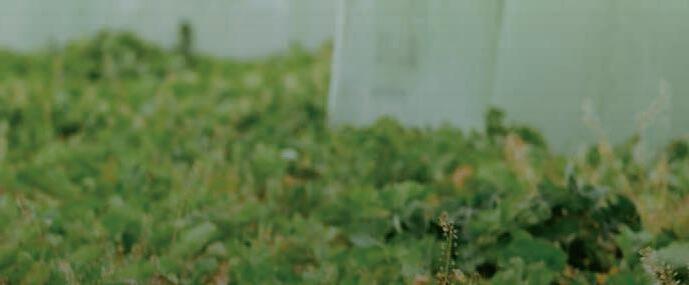
 Richard Rennie MARKETS Emissions
Richard Rennie MARKETS Emissions
NEW Zealand farmers grappling with the costs of farm greenhouse gas emissions may be sharing that load with European farmers as the EU assesses a “polluter pays” principle for agricultural emissions similar to NZ’s. The move was prompted by a 2021 report that noted that, since 2013, climate action had been the main objective of the EU’s Common Agricultural Policy (CAP). This was to the extent the CAP spent £100 billion (about $178bn) or a quarter of its total budget on mitigating and adapting to climate change from 2014-2020.


Yet despite the enormity of that spend there was little impact of agricultural emissions, which did not significantly alter for over a decade.
The report found livestock emissions account for half the EU’s agricultural gas emissions, and even though four methods of reducing emissions were identified, the CAP failed to incentivise their uptake.
There was no limit on livestock numbers and no incentives offered to reduce them.
Meantime, as livestock emissions remained static, emissions from fertiliser increased between 2010 and 2018, again with no incentives through the CAP to reduce their use.
The report’s authors recommended that tougher action

be taken to reduce emissions and that pricing them was one way to achieve that.
It suggested member countries be invited to establish a target for reducing gas emissions from their agricultural sectors and ensure the CAP provides more effective incentives to reduce greenhouse gas emissions from livestock and fertilisers.
The report backing the survey also took aim at the impact that draining organic soils has had on agricultural emissions. This included a recommendation to incentivise landowners to restore drained peat soils.
Like NZ, the EU has an emissions trading scheme (ETS) and, also like NZ, it does not capture agricultural greenhouse gases.
The proposal has been put to
the industry for feedback. The EU study proposal is aiming to look at how a separate ETS covering only gas emissions from the agri-sector could be designed.
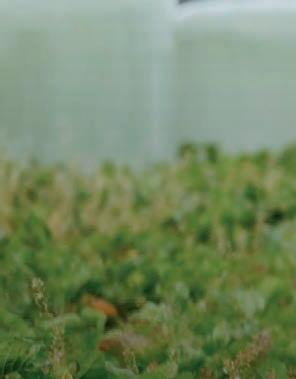

With echoes of NZ’s He Waka Eke Noa, the plan would require

farmers to surrender emission allowances equivalent to their gas emissions, and these allowances could be purchased from the government, generating revenues to reward farmers and foresters who remove carbon.
East Coast Angus have record bull price to chase
broke $1 million for the third time.
The average price paid was $11,297, very close to last year’s average.
on June 22 with strong commercial support from across the country.
value for money opportunities across the catalogue.”

62 bulls were sold for $9000 average.
STERN Angus will know this week whether it still holds this season’s beef bull sale record of $98,000 when the postponed auctions of the pace-setting East Coast Angus studs finally get underway.
James Fraser, of Stern Angus at Pleasant Point, South Canterbury, said the record price was paid in the June 22 sale by Oregon Angus in Wairarapa and the secondhighest price of $85,000 was from Black Ridge Angus, Taumarunui. Both prices were higher than Stern’s previous record $64,000 three years back.

Two-year-old Stern 21521 was sired by Taimate Lazarus and second-placed Stern 21603 was by Black Rock of Stern.
Ninety bulls were sold out of 99 offered and the gross achieved
Fraser said it was an amazing day
“Commercial bulls averaged $9300 and 33 bulls sold from $4500 to $8000 providing great


The usual sale calendar was for East Coast studs to sell from June 23 to 28, along with the prospect of Stern’s price being quickly bettered.
Widespread flooding and road closures forced postponement by a week, with the sales now due to have started on Friday, June 30, and set to run until Wednesday, July 5.
Attention will be focussed on Kaharau on Monday, July 3, Whangara and Turihaua the following day and Kenhardt and Turiroa on Wednesday.
Near Stern neighbour, the Meadowslea Genetics Company at Fairlie, had a top price of $20,500 for an Angus bull sold to Mt Possession Angus, followed by $18,500 paid by Glen R Angus and $18,000 paid by Turiroa Angus.
In the Helmsman auction system
Seven Hills Angus, Pahiatua, had a top price of $16,500 for Seven Hills S52 paid by a commercial buyer and the clearance was 50 of 55 offered with an average price of $8270.
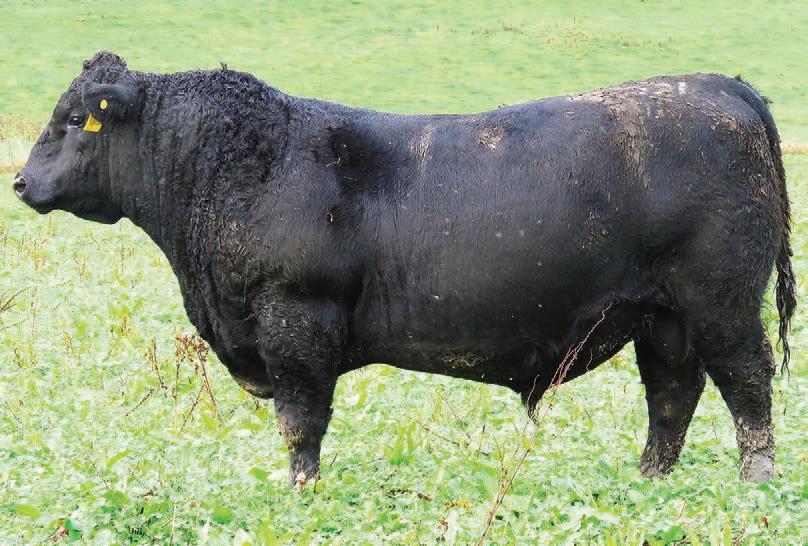
Both prices were higher than Stern’s previous record $64,000 three years back.
Transfers went to Waitangi Angus at $13,000 and to Ngāputahi Angus at $15,000.
Te Mania’s large Angus sale saw 113 bulls sold out of 122 offered with an average of $9300. Top price was $44,000 paid for Te Mania S460 by Ranui Angus, Whanganui, in conjunction with John Woods.
Good wintering is great farming Our critical source areas are intact We’re doing daily checks We’ve still got wet weather options Let’s finish winter as
as we
dairynz.co.nz/wintering 5 FARMERS WEEKLY – farmersweekly.co.nz – July 3, 2023 News 5
well
started.
NO CHANGE: European Union agricultural emissions did not signi cantly alter for over a decade, an EU report said.
Photo: Wikimedia Commons
Hugh Stringleman MARKETS Livestock
PACE-SETTER: Stern 21521 set a season price record for two-year-old beef bulls, holding onto it while East Coast Angus sales were postponed.
Get tough on trade red-tape, MIA urges
Nigel Stirling MARKETS Trade
AMEAT industry leader says New Zealand should not be afraid to sue its trading partners if that is what is needed to stamp out non-tariff measures costing exporters $1.5 billion a year.
The plea came after new research commissioned by the Meat Industry Association (MIA) and Beef + Lamb NZ (BLNZ) calculated the cost of non-tariff measures to the NZ meat industry for the first time.
The $1.5bn identified in their research dwarfed the annual cost of tariffs to the industry of $193m last year.
Non-tariff measures hindering trade include everything from restrictive shelf-life limits for chilled meat exports to the costly but unnecessary rubber-stamping of documentation at local consulates before exports can leave the wharves.
When converted to a tariff-rate equivalent, the study found, the cost of these non-tariff measures to the NZ meat industry is equal to a tariff of 18.7% on all meat exports – double the global average.
MIA chief executive Sirma
Karapeeva said NZ’s numerous free trade agreements weren’t just designed to cut tariffs on exports – they also contained the means to tackle non-tariff barriers to trade.
“There are a whole bunch of other provisions that set up administrative or bureaucratic systems to bring these issues to light and compel agencies and governments to work together to resolve them.”
Those agreements also often include the right to sue trading partners should they use nontariff measures to block trade.
NZ recently became the first country in the 11-country Comprehensive and Progressive TransPacific Partnership trade agreement to sue another member country, when it launched a case against Canada for failing to uphold its obligations to increase access to its consumer market for NZ dairy products.
Karapeeva said NZ should not be afraid of escalating disputes this way more often if that is needed to unblock trade.
“I am not suggesting we jump to that straight away but what I am suggesting is that we need to have a good look at are we using all the mechanisms that we have negotiated in those trade agreements to shift some of
these trade barriers?”
BLNZ chief executive Sam McIvor called on the government to “leverage all aspects” of its trade agreements “to the fullest extent”.
He said the proliferation of nontariff barriers should be seen in the same light as the recent surge in farming costs.
“With on-farm inflation almost double that of general CPI, and
Routine reset may open new door to China
Nigel Stirling MARKETS Trade
A ROUTINE re-registration of processing plants has opened the door to a long-awaited expansion in market access for high-value meat exports to China.

If the new access can be secured it would represent the biggest advance for meat exporters in their single largest market since China rubber-stamped 10 processing plants for chilled meat exports six years ago.
More were to have been added by the Chinese but nothing eventuated and chilled exports have been slow to get off the ground. Last year a mere 1% of sheepmeat sales to China were chilled, although chilled beef exports were higher.
Market access for high-value byproducts such as tripe and casings, which last year fetched $14 per kg in China compared to the global average of $4 per kg, also continue to be restricted for many plants.
“The opening premise of the chilled trial was that China would expand access in time but they haven’t,” ANZCO general manager of sales Rick Walker said.
“There is no good reason for them not to [grant new access] but it has been a low priority for them.”
However, an overhaul of systems used by the General Administration of Customs for the People’s Republic of China (GACC) currently underway could open the door once again.
Every one of the more than 60 processing plants currently registered for exports to China must re-apply as the GACC works its way through a shift from a paper-based to an electronic certification system.
As part of that process exporters have been able to apply for certification of products they are restricted from selling to China in addition to re-applying for those they already had access for.
“One of our plants is not registered for tripe for China –we are going to be putting down tripe,” Walker said.
“Likewise if you are not approved for chilled you are allowed to put down chilled.
“It does not mean that you are going to get access but it does mean that China will consider all of those registrations and in theory be in a position to approve all of those products.”
Farmers Weekly understands plants completely sidelined from selling to China will also have an opportunity to apply for registration.
Among these is understood to be Silver Fern Farms’ (SFF) Te Aroha plant, which never regained
There is no good reason for China not to [grant new access] but it has been a low priority for them.
Rick Walker


registration following significant fire damage in 2010.
Greenleas Premier Meats chief executive Tony Egan is hopeful the Hamilton-based beef exporter will add to its existing one plant registered for chilled exports to China, but he said more access is not guaranteed.

“We see it as an important opportunity but it is always an uncertain pathway [with China] and you have just got to do the best you can.
“China is an important market for us all and the more access we can secure the better.
“That is particularly so in the context of the global environment where other countries are gaining access as well.”
Egan said Prime Minister Chris Hipkins’ meetings with China’s leadership in Beijing last week are seen as an important step in getting top-level support for more access.
The chief executive of SFF, Simon Limmer, and Alliance


average farm profits in the sheep and beef sector forecast to fall 30% this year, these are not insignificant costs that can be ignored.”
The research, carried out by economics consultancy Sense Partners, showed the cost of tariffs to the meat industry fell from $366m in 2010 to $193m last year as more trade agreements came into force.
OBSTRUCTION:
Non-tariff measures include everything from restrictive shelf-life limits for chilled meat exports to the costly and unnecessary rubber-stamping of documentation at local consulates before exports can leave the wharves.
There are a whole bunch of provisions to bring these issues to light and compel agencies and governments to work together to resolve them.
Sirma Karapeeva Meat Industry Association
Group’s head of marketing, Shane Kingston, were also on the PM’s plane.
Three more delegations of industry players and officials from the Ministry for Primary Industries are understood to be due to visit China before the end of the year.
Egan said China is “very relationship-driven” and the increased contact augurs well for NZ’s chances of winning more access.
Walker said while he is still to be
convinced such a breakthrough is imminent, ANZCO is keen to add to the two plants it currently has registered for chilled exports to China.
“There is only one direction with China and that premium end of the market is going to continue to grow.
“NZ in the chilled premium space is a pimple on the backside of that market.
“There is a huge opportunity for us to do more but unfortunately we are being held back currently.”
6 FARMERS WEEKLY – farmersweekly.co.nz – July 3, 2023 News 6
KEEN: ANZCO general manager of sales Rick Walker says ANZCO is keen to add to the two plants it currently has registered for chilled exports to China.
ANZCO
The day the earth opened in Ongaonga

quite unique really. I said to Hamish, ‘We’ve now got a tourist attraction’.
“It was actually quite exciting to look at it,” Holden said.
MATT Holden was quick to search for positives after a huge crevasse suddenly appeared on his Hawke’s Bay sheep farm during the region’s latest downpour.

Holden, who owns the property southwest of Ongaonga on Blackburn Rd along with business partner Hamish Bibby, said Cyclone Gabrielle and months of wet weather had prepared them for landslips on their farm.

But the pair were taken aback when they discovered that the land, drenched by more than 200mm of rain recently, had given way and created an estimated 20m by 80m crevasse in a paddock.
“Obviously we are all pretty aware of what slips look like after rain,” Holden said.
“This is nothing like it. It’s
“It looks more like a crevasse and it looks more like something triggered by an earthquake, rather than just rain.
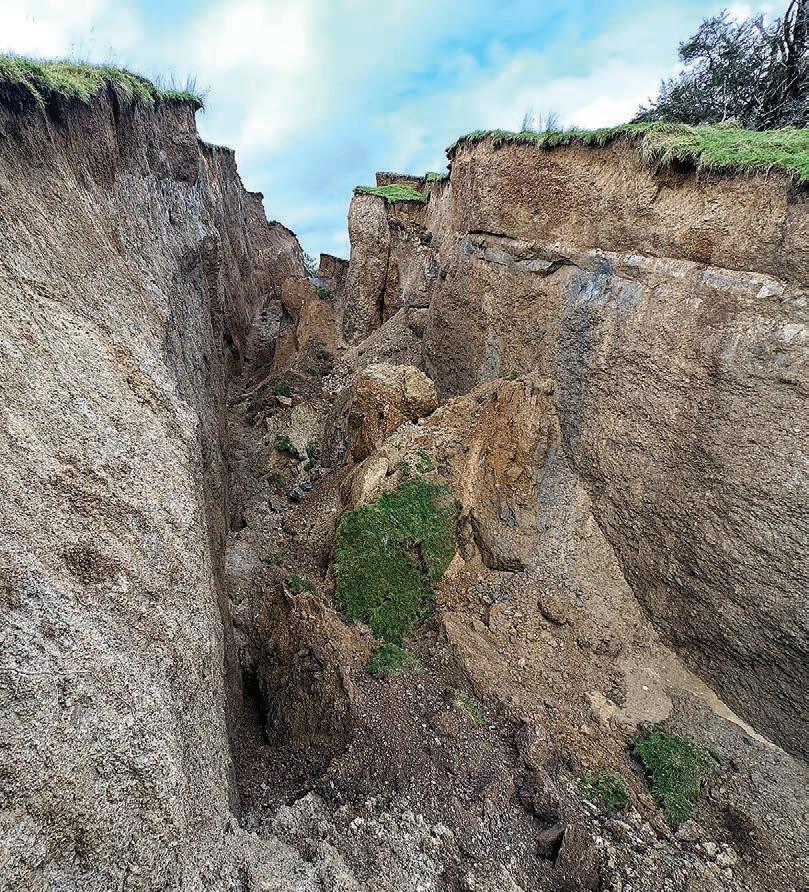
“The chunk of land has actually gone down and sideways. It’s extraordinary. It’s almost like it’s been cut with a knife and prised apart.”
“Some of these poor farmers have had their farms decimated with slips. This is almost like ‘Cool, now we’ve got this amazing natural feature.’
“It’s huge. You could probably fit two truck and trailer units in it.”
Holden said they were fortunate there was no stock in the area when the land gave way, particularly as it is an area where stock traditionally congregate.
The crevasse will be fenced off until they decide what can be done with the land.
“I’m sure it will spark some interest from the regional council or someone in the geotech space ... just curious to come and have a look.”

Bibby discovered the crevasse on Saturday, June 24 as he inspected the property during heavy rain. The pair went for a closer look on Sunday.
Holden said the crevasse is just a continuation of what has been a tough few months since Gabrielle.
“It’s been pretty unforgiving for all farmers in general.”
One of the biggest difficulties has been getting around the
property to carry out necessary repairs. He has heard of farmers who have built new fences and tracks since the cyclone, but all that work has been undone
with the most recent rain.
“May was a relatively kind month weather wise, thank God. But June has just undone everything.
“What farmers know is that there is still a lot of winter to go.”
The Holden, Bibby and Marshall families make up Kelso Genetics, one of New Zealand’s leading sheep genetics companies.


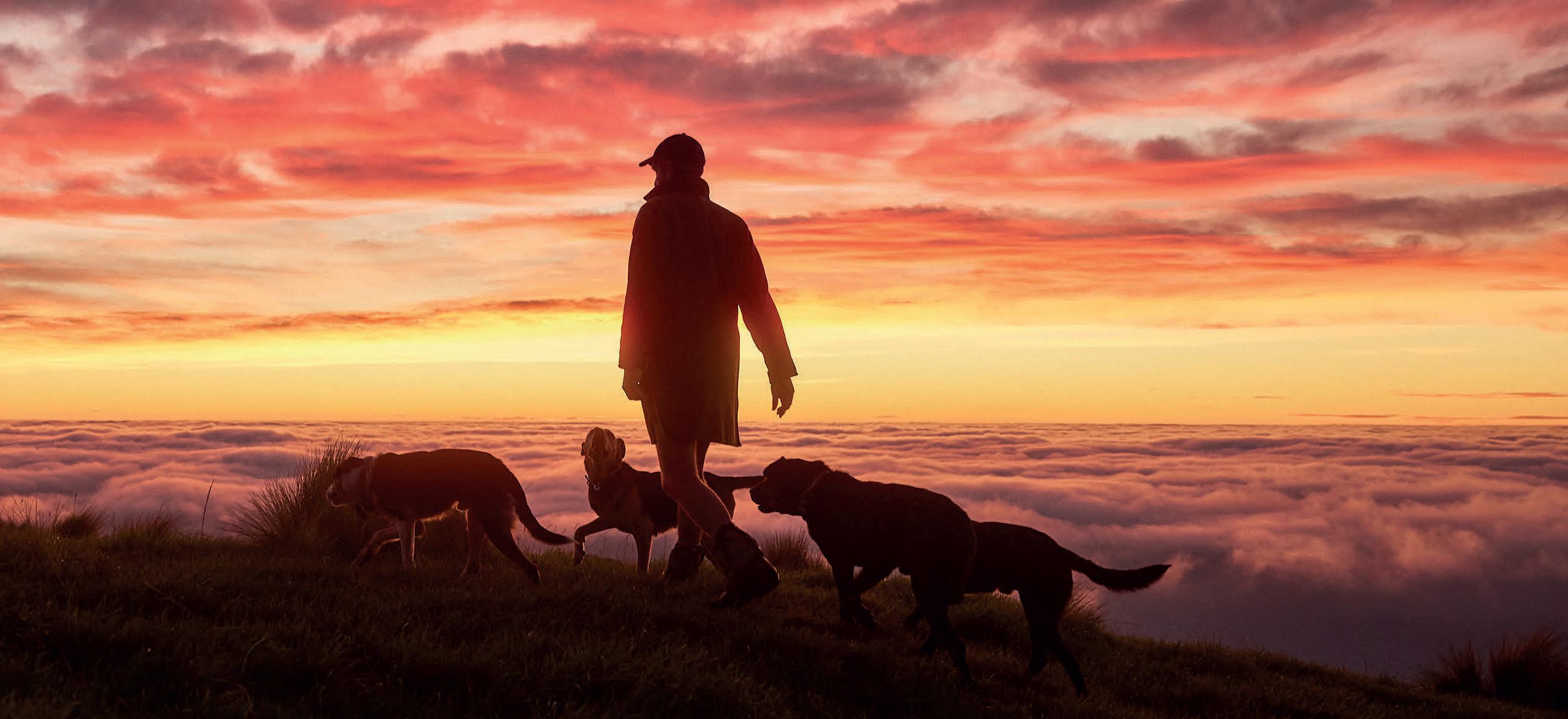
Holden said his job title at the company is “people” – and in difficult times like this it is important farmers look out for each other.

“What I’ve learnt is that in these times how important communication is.
“Just picking up the phone and getting in touch with people, checking in, even just with an email, to ask ‘How are you getting on?’
“There is a lot of winter to go so it’s going to get even more important to keep in contact with clients, with farmers, with mates.
“And aways remember that a smile is really infectious.”
18-20 July 2023 | Te Pae Convention Centre, Christchurch Free to attend for suppliers and shareholders. View the full agenda and register now at silverfernfarms.com/conference
GUEST SPEAKERS RT HON SIR BILL ENGLISH Former Prime Minister & Minister of Finance
Special Guests RICHIE &
GEMMA
MCCAW Kiwi Sporting Legends
7 FARMERS WEEKLY – farmersweekly.co.nz – July 3, 2023 News 7
PETER GORDON ONZM International Chef & Restauranteur
Craig Page NEWS Weather
SCARRED: This photograph shows the full extent of the crevasse.
WAIT AND SEE: The crevasse will be fenced off until a decision is made about what to do with the land.
It looks more like a crevasse and it looks more like something triggered by an earthquake, rather than
just rain.
Matt Holden Kelso Genetics
SHAKEN: Matt Holden says the ‘chunk of land has actually gone down and sideways’. Photos: Matt Holden
‘Half-Arsed’ drive tackles on-farm safety
their lives on New Zealand farms and more than 2,000 of us suffered serious injuries that forced us off work for a week or more.
APROVOCATIVE new health and safety campaign has been launched to help reduce injuries and fatalities on farms and address the human toll from producing food in New Zealand.
The Half-Arsed Stops Here campaign and Farm Without Harm strategy are taking the health and safety message straight to the heart of rural communities.

As part of the initiative, industry leaders and farmers from across New Zealand are signing a pledge, committing to keeping those working on farms healthy and safe.
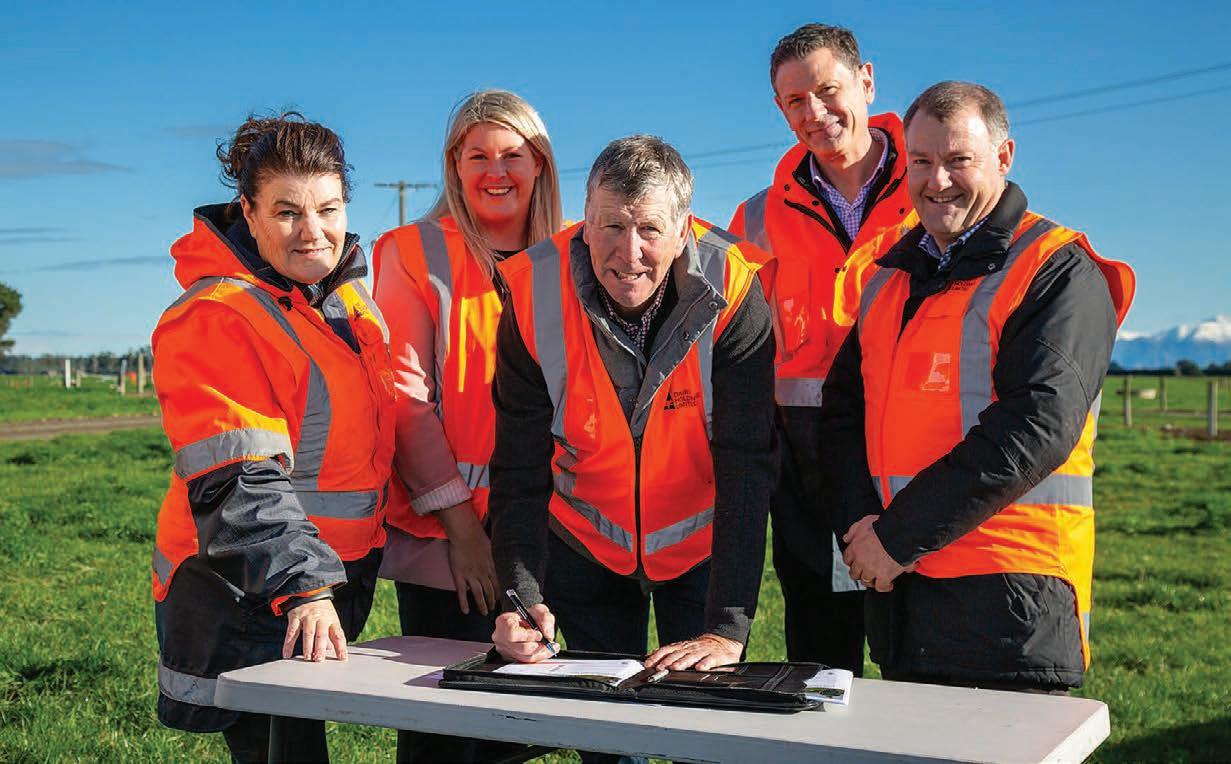
The programme was launched at a dairy farm near Dunsandel in mid-Canterbury on June 29 and a sheep and beef farm near Carterton in Martinborough in the Wairarapa on June 30.
It has been developed by the Agricultural Leaders’ Health and Safety Action Group (Safer Farms), the organisation dedicated to leading, redesigning and inspiring a safer farm culture throughout New Zealand.
Safer Farms chair Lindy Nelson said Farm Without Harm is a bold, system-wide strategy and action plan developed by the agricultural sector for the agricultural sector in response to the concerning and persistent rates of harm on farms.
“Collectively, we proudly produce billions of dollars worth of world-class food annually destined for consumers across the globe. Yet last year 13 farmers lost
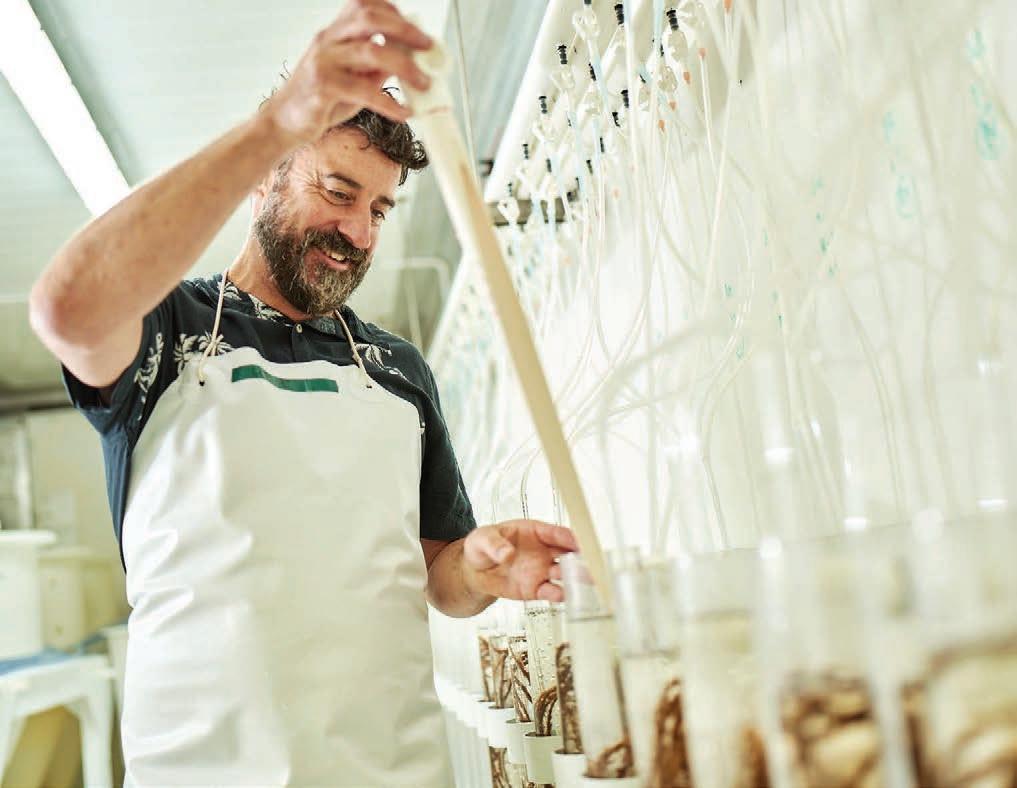
“The cost of producing food in New Zealand is too high – the injuries, deaths and mental harm as a result of accidents on our farms is hurting families, workers, and rural communities.”
Developed over two years, the Farm Without Harm strategy was co-designed with farmers and their communities, iwi, Māori, industry leadership bodies and primary sector organisations.
“This strategy represents a fresh approach to wellbeing on our farms,” Nelson said.
“It involves gaining a deeper understanding of different forms of harm, redesigning our farming systems to prevent harm, and fostering a caring culture among us.
“To address these harms, we have identified ways we need to work differently and four highharm areas that need an urgent focus – risks to mental health resulting in reduced wellbeing, harm experienced while working with vehicles and machinery, physical stress and injuries from handling livestock, and harm caused by exposure to agricultural chemicals and airborne risks.
“Instead of relying on high vis vests or helmets, we are looking to eliminate harm from the system wherever we can by working and learning together to find solutions, understanding that safety starts with a culture of care and continuing to invest in new approaches.
“This is our line in the sand, it’s
a recognition that we need to do things differently.
“Ultimately, it’s about coming together as a sector to find and share solutions that work best for us, while rejecting anything that puts ourselves or others at risk.”
The Half-Arsed Stops Here campaign is a provocative message to start changing attitudes and a key component of the Farm Without Harm strategy, Nelson said.
“It will get people’s attention and that is the aim. ‘Half-arsed’ is a language farmers recognise and use.
“This is about farmers having

everyday conversations that lead to safer outcomes. This is not a judgment about when things have gone wrong.
“When things go wrong, it’s a tragedy. Every farmer knows someone who has been injured or lost a loved one.
“This is a recognition that we have to find solutions and be focused and committed in finding these. We can’t be half-arsed about the problem or finding solutions.”
Kate Acland, chair of Beef + Lamb New Zealand and a Mount Somers sheep, beef and dairy farmer said: “Looking after people is central to the success of our
sector, it just makes sense. “Healthy and safe farms are attractive places to live and work and this is vital so we can attract the best people to our fantastic sector. Safer Farms, the Farm Without Harm strategy and the pledge is a great example of an industry-led solution that we’re excited to support.”
Wayne Langford, president of Federated Farmers, said every farmer should be coming home safely to their family after work each day.
“We need to be taking health and safely on New Zealand farms seriously, but solutions and systems need to be designed by farmers if they’re going to work in a practical sense.”
Andy Elliot Aquaculturalist Nutrition Champion Nuffielder Applications
Nuffield Scholarships close 13 August. The future of Food and Fibre is in the hands of our bold and grounded people. Sound like you? Register your interest in a Nuffield Scholarship at Ruralleaders.co.nz/application-nuffield 8 FARMERS WEEKLY – farmersweekly.co.nz – July 3, 2023 News 8
for the 2024
Staff reporter PEOPLE Health
Instead of relying on high vis vests or helmets, we are looking to eliminate harm from the system wherever we can.
Lindy Nelson Safer Farms
BOTTOMS UP: The Half-Arsed Stops Here campaign is launched by, from left, Safer Farms chair Lindy Nelson, Sarah Perriam-Lampp of Safer Farms, arable farmer Stu Wright, Safer Farms chief executive Stephen Esposito and Colin Glass of Dairy Holdings.
ACHIEVE GREATER OUTCOMES WITH OUR SUSTAINABLE FARM LOAN
With our new whole of farm Sustainable Farm Loan you can accelerate on farm sustainability.
• You have two years to implement the Westpac Sustainable Farm Standard
• Rewards you with a financial incentive on term lending for your farm
• Recognises your existing farm assurance activities. Find out more: westpac.co.nz/sustainable-farm

Eligibility criteria and lending criteria, terms, conditions and fees apply. A fee from our independent verifier AsureQuality will apply. Westpac New Zealand Limited.
9
FTAs will open doors to sheepmeat growth
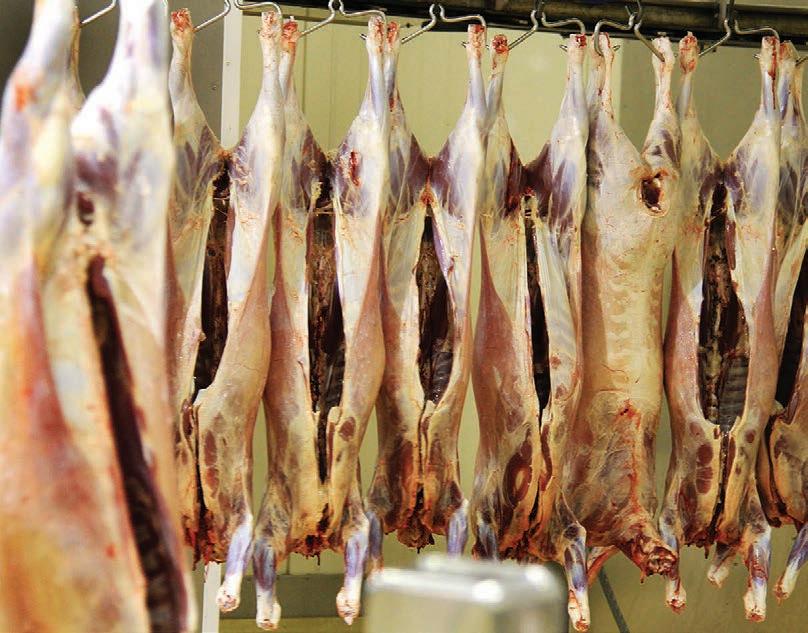 Wallace NEWS
Wallace NEWS
Sheep and beef
THE importance of European and United Kingdom sheepmeat markets will only be enhanced by the looming free trade agreements, according to the Meat Industry Association.
Recent demand has been tempered by an economic slowdown and food inflation in these markets, which peaked in the UK at 17%.
“The respective free trade agreements will provide opportunities for growth in those markets, particularly the UK,” the Meat Industry Association (MIA) said.
While China has grown in importance as a volume market, NZ has very limited market access for chilled sheepmeat, making up less than 1% of NZ exports to the market last year.
Even with disrupted logistics in the last couple of years, the UK and EU in 2022 accounted for more than 50% of NZ chilled sheepmeat exports measured by volume and value.
A Ministry of Foreign Affairs and Trade (MFAT) spokesperson said the FTAs with the UK and EU could start in the first half of next year.
“The UK and EU FTAs deliver useful flexibility to the New Zealand sheepmeat industry to export additional sheepmeat duty free to both markets on top of existing World Trade Organisation [WTO] quota in the future, should there be a commercial interest in doing so,” said the MFAT spokesperson.
The FTA with the EU allows access for an extra 38,000t of sheepmeat at zero duty seven years after the agreement comes into force.
Similarly access to the UK will increase in two stages, by 35,000t a year from year one to four and 50,000t a year from year five to 15, with access completely duty free from year 16.
“Despite the drop in exports in recent years, the WTO sheepmeat quota is still extremely valuable for NZ,” the MIA statement said.
“If NZ’s exports of sheepmeat in 2022 had been subject to the full out-of-quota rates, the tariff cost would have been more than $300 million.”
RESTRICTED: While China has grown in importance as a volume market, NZ has very limited market access for chilled sheepmeat.

The big winner from the FTA has been beef.
Currently WTO high quality beef quotas are relatively small, 1102t to the EU and 198t into the UK, with both incurring a 20% tariff.
In the first year of the UK FTA, NZ will have a duty-free beef quota of 12,000t increasing to 38,820t in year 10, after which exports
will be subject to a tariff of 20% if the quota is exceeded. It becomes tariff free after 15 years.
When the EU FTA begins, the tariff on the WTO beef quota will fall from 20% to 7.5% and NZ will have access to a new FTA beef quota, which starts at 3333t and increases to 10,000t after seven years, also with an in-quota tariff
Less than half EU sheepmeat quota filled
FOR the past five years New Zealand has filled only half of its duty-free sheepmeat quota to the United Kingdom and European Union, until recently the country’s most valuable markets in both volume and value.
Last year NZ exported about 90,000t to the two markets, well below the 228,254t allowed by the quota.
Data supplied by the Ministry of Foreign Affairs and Trade shows the growing significance of China which, since 2013, has been NZ’s most significant market by volume.
The data shows that in the early 2000s the EU and UK represented 60% of the value of NZ’s sheepmeat export. Today it is about 30%.
In 2009, UK sheepmeat exports were valued at $723 million and the EU $1.06 billion. By 2022 the value into the UK had fallen to $407m, or 10% of total value,
and it is now NZ’s fourth largest market. In the same year EU exports were worth $948m or 20% by value, ranking the market second.
They both remain high paying markets.
“We know these markets well, they are well established, we have mature relationships and we understand how they operate,” she said.
“We can’t say they are no longer important.”
Since 1974 NZ has had preferential access to the UK and Europe, but that quota was split when the UK left the EU in January 2020: 125,769t to the EU and 102,620t to the UK.
from China, which was still in lockdown, and a revitalised UK and EU foodservice sector.
They are also significant chilled markets, but this has been impacted in recent years by global shipping delays.
China still has an insatiable appetite for sheepmeat, however.
In 2021-22 it accounted for more than 40% of NZ’s lamb exports and around 80% of mutton by volume, equating to 28% by value.
MIA
rate of 7.5%. The MIA notes that quotas are calculated on carcase weight equivalent and 99% of NZ exports are in boneless form, reducing the useable quota volume.

An MFAT spokesperson said NZ’s duty-free WTO quota access to the EU and UK for sheepmeat has been critical for NZ.


“In the 2000s, the EU and UK were responsible for upwards of 60% of New Zealand’s overall sheepmeat exports by value.
“Today, they continue to account for a combined 30% of sheepmeat exports by value, notwithstanding strong growth in the overall value of trade, from $2.5 billion to $4bn and significant growth in exports to China, up from 3% to 40% by value.”
Last year the average free-onboard value of products sold in the UK/EU was $15.80/kg, double the $7.92/kg of China, but both were dwarfed by sales to the United States, which averaged $20.36/kg.
In 2021-22 the US took less than 30,000t.
Meat Industry Association chief executive Sirma Karapeeva said the UK and EU remain important markets.
Beef + Lamb NZ figures reveal that in the year to March 2023, the EU took 26% of NZ’s lamb and 7% of mutton, the UK 9% of our lamb and 1% of our mutton. China accounted for 31% of our lamb and 75% of our mutton.
Karapeeva said the UK and EU markets take premium cuts.
“We can’t discount those markets, they are still very important but different to the products that go to markets in China and Southeast Asia.”
For example, in 2021-22 the UK was NZ’s third largest destination for lamb, accounting for 13% and the EU 16%, due to lower demand
Karapeeva said while that appetite has been growing, so has the quality of meat it seeks – which poses a challenge for companies.
“It’s a commercial, economic rationale decision to place product in the markets which pay the most,” she said.
Some of those decisions are based on logistics, shipping times, access to ports and the volumes they can handle along with the speed of processing, which are features in China and make it appealing.

“Big ports can manage massive volumes.”
IMPORTANT: MIA CEO Sirma Karapeeva said longestablished connections and an understanding of the markets means the UK and EU remain important markets.

Despite NZ not filling its dutyfree quota in recent years, the free trade agreements with the UK and EU are valuable.
“If the world changes, we’ve got it and if we need it, it will save $300m in tariffs to the EU alone,” said Karapeeva.
10 FARMERS WEEKLY – farmersweekly.co.nz – July 3, 2023 News 10
Neal
Neal Wallace NEWS Exports
If NZ’s exports of sheepmeat in 2022 had been subject to the full outof-quota rates, the tariff cost would have been more than $300 million.
It’s a commercial, economic rationale decision to place product in the markets that pay the most.
Sirma Karapeeva
Meat Industry Association
Sow the seeds of success



Features
• Leading spring barley in FAR CPT trials with great yields and consistency.


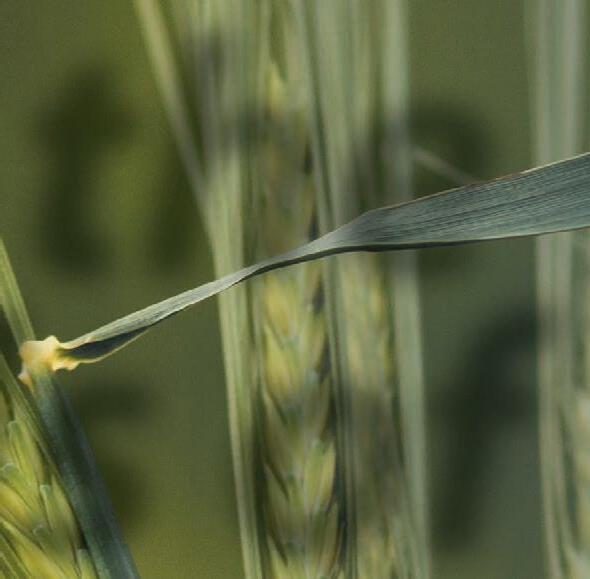

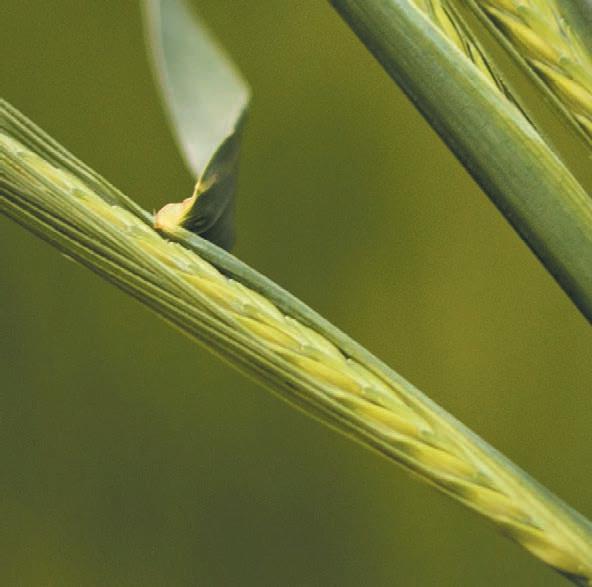

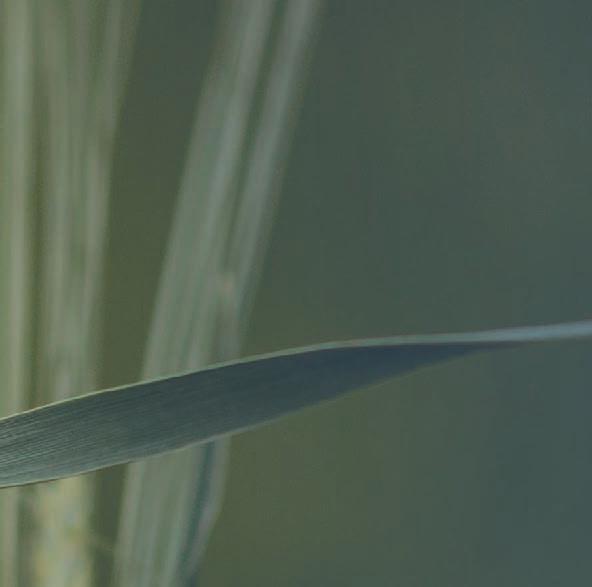
• Suited to all sowing times and conditions in both spring and autumn.





• Good all-round disease resistance profile especially powdery mildew and net blotch.














Contact your local PGG Wrightson Seeds Arable Representative or seed merchant today. 0508 GRAINS (0508 472 467) pggwrightsongrain.co.nz
cerealseeds@pggwrightsongrain.co.nz
11
Cyclone eclipses local government report
Richard Rennie NEWS Governance

ALONG-awaited report on local government reform has been described as a missed opportunity, with little reference to either farming or Cyclone Gabrielle’s impact.
It is, say critics, unlikely to limit its ability to shift the dial on rural communities’ local government challenges.
He piki tūranga, he piki kōtuku, the local government reform report, was two years in the making.
But Federated Farmers board member Sandra Faulkner said she fears it may have been caught out by February’s cyclone, which has had such a devastating impact on rural communities that its full lessons are still to be learnt.
“A couple of things do come out of the report, and the positive is the common theme about finding local solutions for local communities,” Faulkner said.
The report recommended reorganising local government to strengthen and support councils to plan and respond to challenges and opportunities in their area.
However, Faulkner does not agree with the report’s recommendation that a dedicated Crown department be established to enable better working relationships between central and local government.
“Sensible partnerships are already in place. It’s like they [the report’s authors] have come in and said local government don’t know how to do their job. They do, they just do not have the resources to do it as well as they would like.”
She was uncertain whether the financial recommendations in the report would go all the way to improving the cash flow to local councils, now strung out with major post-cyclone infrastructure costs, and grappling with issues such as managed retreat.
property it owns in regions, and that an intergenerational fund for climate change be established by local councils.
In labelling the report a missed opportunity, Faulkner said she is concerned about its preoccupation with requiring local councils to become more focused on community wellbeing.
Sandra Faulkner Federated
The report recommends considering transferring the annual GST take from rates bills to councils, something considered a tax upon a tax.
It also recommends that the central government pays rates on
The report authors say that wellbeing requires a more holistic approach over and above traditional council concerns of water, roading and waste management, to also include cultural expression and democratic participation.
“But wellbeing is completely different between people, how do you measure it? If you can’t measure it, you cannot report it,” Faulkner said.
“For those who rely on
MISSES: Fed Farmers board member and Tairāwhiti farmer Sandra Faulkner says the local government report may be a victim of bad timing, with Gabrielle having changed much for rural councils.


any level of service from their council, central government needs to support local government better to supply those services.”
Jeff McNeill, a Massey University senior academic in environment and planning, said the report is well meaning and well intentioned but doomed to be forgotten, coming after a series of reports on local government reform in the past decade.
“And there are too many unpalatables in it for central government ... coming up to an election year, there is no value for government in it,” he said.
The “unpalatables” include requiring central government to pay rates on property and paying the GST portion of rates back to local councils.
Minister of Local Government Kieran McAnulty gave the report a lukewarm response when it came out, labelling its reform suggestions important but secondary to the current disaster recovery response.
McNeill said while far from
perfect, and needing some sorting out, local government does work on a day-to-day basis for most people.
While issues such as Gore District Council’s dispute have grabbed headlines, they tend to be small issues nationally and far from a constitutional crisis.
“And most other councils are ticking along.”
He agreed with Faulkner’s interpretation of wellbeing as something that could mean “everything and anything for everyone”.
He said the financial solutions are one of the biggest disappointments of the report.
“It seems oblivious of past solutions suggested, as in the Shand Report back in 2009.”
As an academic he is also appalled by the lack of reference to any overseas literature and research on local government.
“You also need to look at form, function and funding simultaneously and that has not been done here, it is piecemeal.”

He was perturbed by the lack of any reference to impending resource management reform, and the latest iteration of Three Waters.
“Those changes are welded in, and no government will reconfigure them out now.”
Wairoa District mayor Craig Little said he felt the report was a good one until the word “reorganisation” was mentioned.
“It is not a good word for a lot of us in Hawke’s Bay, having been through that scenario that was divisive and a waste of time.”
However, he welcomed the focus on funding issues, the crux of many councils’ problems.
Alliance braced for busier bobby season
Staff reporter NEWS Livestock
ALLIANCE Group is boosting its capacity by almost a quarter to handle an expected increase in the number of bobby calves to be processed.
Fonterra last year updated its supply conditions, effectively banning the on-farm euthanising of calves without humane reasons, requiring every calf born to be accounted for. Options for nonreplacement calves include dairy-beef finishing and bobby calf collection for veal production and the petfood industry.

Murray Behrent, Alliance interim general manager livestock and shareholder services, said given a forecast increase in bobby calf volumes, the co-operative is increasing processing capacity at its Levin, Nelson, Smithfield (Timaru) and Lorneville (Invercargill) plants by 24% in the coming weeks.

Behrent said the move is to support farmers during a potential pinch-point when bobby calf processing coincides with lamb processing.
“There will be significantly more bobby calves requiring processing at plants
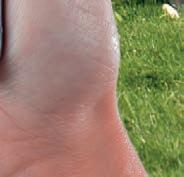
but we are confident the additional capacity provided will enable us to meet the needs of farmers as best as we can over the course of the season without compromising lamb or beef processing volumes,” he said.
Additional lamb and sheep capacity has also been added at its Dannevirke, Nelson and Pukeuri (Oamaru) plants to meet demand. Given the increased demand for calf processing, Behrent is encouraging sheep and beef farmers to draft their animals before the start of the bobby calf season in their region.

“Calf numbers are forecast to be higher this season compared to last year. We encourage farmers to talk to their Alliance livestock representative to forecast the number of lambs they have for processing.”
Alliance is also launching a mandatory app to allow farmers to streamline booking management for bobby calves; it automatically syncs with transport companies.



“Our new app will also save time and effort for farmers, enabling them to delegate booking responsibilities to a calf rearer or another staff member,” said Behrent.

12 FARMERS WEEKLY – farmersweekly.co.nz – July 3, 2023 News 12
A couple of things do come out of the report, and the positive is the common theme about finding local solutions for local communities.
Farmers
Genetics firms opposed to a single BW index
Gerald Piddock TECHNOLOGY Livestock
DAIRYNZ’s proposal for a new animal evaluation breeding index that incorporates genomics is being opposed by New Zealand’s two biggest dairy genetic improvement companies, CRV and LIC.
Consultation on the proposal by DairyNZ and New Zealand Animal Evaluation Limited (NZAEL), under the title A Better BW for the New Zealand Dairy Sector, has wrapped up with both companies saying it will not benefit the dairy industry.
The proposal by DairyNZ and its subsidiary NZAEL is to have one independent source of breeding worth (BW) as well as improved BW accuracy from using genomics and better data.
This new BW would “provide a single trustworthy estimate of an animal’s breeding potential” for farmers looking to improve their herd’s genetics, according to a summary of the consultation document.
Currently, CRV, LIC and NZAEL produce different versions of BW, with genomics not included in NZAEL calculations, the proposal said.
DairyNZ chair Jim van der Poel said in an email to dairy farmers that, during consultations, farmers were largely supportive of the need for one BW.

While many farmers are achieving excellent rates of genetic gain, the genetics experts DairyNZ has worked with through NZAEL believed the industry is not keeping up with overseas competitors.
“We estimate (based on genomic sire use and genetic merit) over the last decade, that farmers have missed out on $1.36 billion in profit. By working together, we can achieve this, or more, over the next 10 years,” Van der Poel said.
“That’s why we see improving genetic gain as an important investment by DairyNZ on behalf of all farmers.
“A change as significant as this to our sector has challenges, but we simply cannot ignore this lost opportunity. Every farmer would benefit from this proposal and we owe it to them to close the gap on our international competitors and improve farm profitability through better rates of genetic gain,” he said.
CRV agreed with DairyNZ’s proposed national animal evaluation concept and the inclusion of genomics, but does not endorse the proposal as it stands.
He also believed DairyNZ’s criticism of the genetic gains being made within the industry are unfair.
Smallwood said he hopes that one of the outcomes of this consultation is a more open playing field when it comes to publishing a cow’s BW.
“At the moment we can’t publish a cow’s BW. The commercial rights to that are owned by LIC and one of the things we believe should happen is that if there is a national breeding objective then there should be equal rights for everyone that’s producing that.”
BW is only one measure of genetic gain, and he argued that a more holistic view is needed.
“If you look at CRV, we have put in polled genetics, A2, resistance to facial eczema and we are doing methane work. All of these things are outside of BW.”
DETAILS: Agricultural leaders say there are still some signi cant Freshwater Farm Plan issues that remain unresolved and important details that need to be worked through.
Sector leaders raise concerns about FFPs
CRV managing director James Smallwood said the tools are already there for the industry to improve its genetic gain in technology – such as sexed semen, DNA testing of females and utilising herd data.
“Where DairyNZ should be encouraged to spend its time is getting farmers to get the confidence in using those technologies. That is where the market failure exists.”
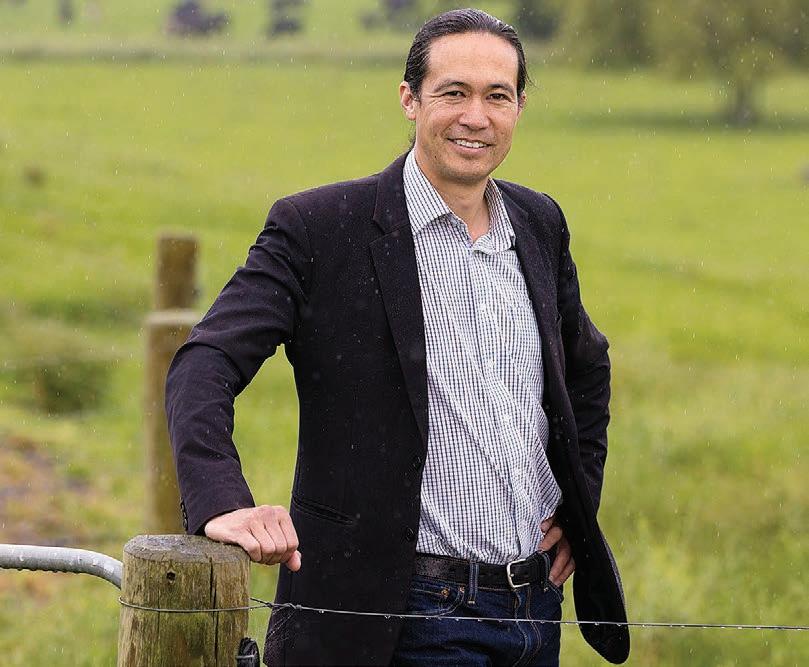
The dairy industry is well serviced by the systems used by LIC and CRV for genomic evaluation, he said, questioning whether a new BW system might not create even more confusion.
“Genetic gain – there are a whole raft of building blocks that go into it. Genomic evaluation is only one of those building blocks, but it’s almost been portrayed as the only one you need to worry about.”
The dairy companies are also incentivising genetics companies and farmers to look more closely at how milk is produced rather than the milk itself. This is reflected in Synlait’s Lead with Pride and Fonterra’s Co-operative Difference programmes.
“I would argue that things like polled and FE are actually genetic gain,” he said.
LIC chief executive David Chin said while his company can philosophically see the merits in a single BW index, he doubts whether the proposal would meet the industry’s needs.
“It’s unclear, and they have some numbers in there and we have asked how they got to those numbers.”
Chin said farmers using LIC products are exceeding the BW gain goals stated by DairyNZ in the proposal.
“We’re already there. We’re using lots of young genomic sires, there’s a big uptake of them in the NZ farming population, they’re getting all of these rates of genetic gain, so what’s the problem they are trying to solve?”
He also questioned the proposed funding model for the new index.
Alongside the milksolids commodity levy funding that NZAEL receives, fees will also apply for new services for bull and cow owners. These include fees for bull owners for screening and enrolling them with NZAEL.
Cow owners will pay fees for enrolling their cows through herd record providers, and for receiving genomic BW predictions for their cows from NZAEL.
A straw levy may also be collected to fund additional services in the system.
“If the industry is going to be incurring extra costs, we have to be really careful.

“Dairy farmers in NZ already own a herd improvement cooperative and have invested tens of millions of dollars into genomic technology and we think the rates of genetic gain are going pretty good.”
Neal Wallace
NEWS Policy and regulation
FARMING leaders are questioning the implementation and tight timeframes of the government’s new Freshwater Farm Plans, which start rolling out in August.
They are questioning the practicality of the process, the low 20ha threshold that requires landowners to have a certified freshwater plan, uncertainty over how these will be integrated with existing regional or sector plans and how the regulations will be implemented by regional councils.
While supportive of the concept, leaders of Beef + Lamb New Zealand (B+LNZ), Federated Farmers, DairyNZ and Deer Industry New Zealand (DINZ) have raised these concerns with politicians and officials.
The long-delayed rollout of Freshwater Farm Plans (FFPs) starts in Southland and Waikato from August 1 and will be implemented in all regions by the end of 2025.

Once implemented, farmers in that region will have 18 months to develop a plan and submit it for certification.
Plans are required for any farming operation with 20ha or more in arable or pastoral use, 5ha or more in horticultural use or any combination equalling more than 20ha.
Farming leaders said plans are a practical way for farmers and growers to identify, manage and reduce the impact of farming on the freshwater environment, but changes have been suggested to ministers and officials that will make them more practical and cost-effective.
They will be closely watching the rollout in Southland and Waikato.
“While partners agree the government has made some improvements to FFPs, there are still some significant issues that remain unresolved and important details that need to be worked
through,” the group said in a statement.
“The key issues include the very low 20ha threshold requiring all farmers to have a certified plan, addressing uncertainty over how existing regional or sector plans will be integrated with the government’s new regulated plans, and details of how the regulations will be implemented by regional councils,” BLNZ chair Kate Acland said.
Federated Farmers president Wayne Langford said while the government has signalled a willingness to address some concerns, he wants certainty that these rules will be fair and practical as they’re rolled out.
The sector needs more detail on how existing regional, industry and sector-led plans will transition to regulated freshwater farm plans over reasonable timeframes.
Jim van der Poel DairyNZ
DINZ chair Mandy Bell said the government’s focus must be to achieve better environmental outcomes in a cost-effective and practical manner, and not simply impose a cost to record compliance.
DairyNZ chair Jim van der Poel encouraged the government to work with industry bodies to achieve reform but also to recognise the planning and investment farmers have already made to improve freshwater outcomes.
“The government has committed to recognising existing plans. However, the sector needs more detail on how existing regional, industry and sector-led plans will transition to regulated freshwater farm plans over reasonable timeframes.”
13 FARMERS WEEKLY – farmersweekly.co.nz – July 3, 2023 News 13
DOING FINE: ‘Dairy farmers in NZ already own a herd improvement co-operative and have invested tens of millions of dollars into genomic technology,’ says LIC chief executive David Chin. ‘We think the rates of genetic gain are going pretty good.’
We’re already there ... they’re getting all of these rates of genetic gain, so what’s the problem they are trying to solve?
David Chin LIC
Educational resources for schools & students
Read, listen to, and watch what is happening in Aotearoa New Zealand’s food and fibre sector by scanning the QR codes or following the links. Answer the questions to complete the exercises.




What is Onside?
New Zealand agritech company Onside has been developing an app to simplify safety, operations, communications and on-farm biosecurity on rural properties.
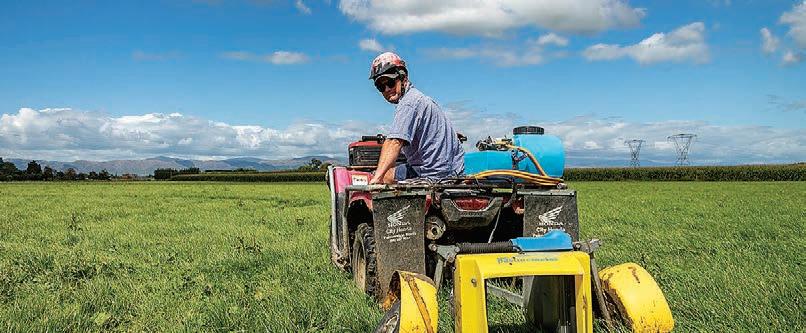

bit.ly/about-Onside
Have a go:
1. What problem was Onside created to solve?
2. How can people’s movements be used to help modelling for biosecurity?
3. What is the arable sector striving to do with the data collected?
Stretch yourself:
4. Ben lists the things that contribute to the success of a start-up business. What are they?
5. Agritech is high value and scalable. What makes it easily scalable?
See more at getonside.com and agritechnz.org.nz
In the news
Why was Macca’s at Fieldays?
McDonald’s (Macca’s) was at Fieldays to give Kiwis an inside look at its food supply chain and to showcase what goes into their shopping basket. bit.ly/fieldays-maccas
Have a go:
1. How much does McDonald’s spend on local ingredients for NZ restaurants?
2. What is the value of NZ produce exported to other McDonald’s markets?
3. How many million kg of NZ cheese and beef was exported to McDonald’s markets in 2022?
Stretch yourself:
4. Why do you think eyebrows were raised when Macca’s was first seen at Fieldays?
5. How many different NZ-grown ingredients used at McDonald’s can you list?

How much feed is needed?
Animal feed demand and pasture supply are looked at in this Agricademy video. After watching the video, complete the online quiz to test your knowledge. bit.ly/break-feed
Have a go:
1. In the New Zealand dairy farming system, the farmer tries to match the amount of grass grown on the farm with the amount of feed needed by the cows at any given time. True or false?
2. What does rotation length mean?
3. As a rule, dry cows need more feed than lactating cows, unless they are pregnant. True or false?
4. A dry cow generally needs how much feed per day?
Stretch yourself:
5. In general, an 8ha paddock would give 400 milking cows, with 200m2 per cow, how much grazing time?
6. What does the farmer usually do if there is not enough grass growing on the farm in winter to feed the cows?
Learn more at agricademy.co.nz

How can an app help farmers with pasture control?

Aimer software is an AI-driven digital assistant and operating system developed by an agritech start-up company, Aimer Farming, to help farmers manage their pasture. bit.ly/pasture-app
Have a go:
1. How will the recent investment boost from Sprout help the company?
2. What other technology does Shane use on his dairy farm?
3. What is meant by a pasture deficit?
4. Why is it important that farmers are able to make informed decisions about pasture?
Stretch yourself:
5. What data does the system use to calculate whether the farm is moving into a pasture surplus or deficit?
6. Why does Shane see new technology being a vital part of attracting and keeping staff?
See more at aimer-farming.com and agritechnz.org.nz
Ag&Ed Volume 140 – July 3, 2023
Brought to you in partnership with
Watch this Watch this In the news 14 Ag&Ed
How can farms improve our freshwater?

Piripi Perry-Smith is a farm environmental consultant. In this Opportunity Grows Here video Piripi talks about how he is helping make a difference to our freshwater. bit.ly/freshwater-enviro
Have a go:
1. Why is freshwater sampling important?
2. What does Piripi love about his role?
3. What other benefits can native riparian planting provide in comparison to just planting fast-growing trees?
Stretch yourself:
4. Another common activity for a farm environmental consultant is looking at nutrient budgets, which is a modelled calculation of nutrient losses from a farm. Why do we need to be aware of nutrient losses on farm? How can this affect freshwater?
5. What skills do you think a farm environmental consultant needs so they can bring lasting benefits to the agricultural industry?
Whose responsibility is animal welfare?
Madison Pannett is an Animal Welfare Sector Liaison. Her day-to-day role mainly consists of helping busy farmers in a way that ensures that they can understand and comply with animal welfare rules.
spoti.fi/43NFOGa
Have a go:
1. Who does Madison work for?
2. What does an Animal Welfare Sector Liaison do?
3. The role involves workshops, talking to farmers, as well as attending what kind of events?
4. Whose responsibility is animal welfare?
Stretch yourself:
5. What is a satisfying part of the job?
6. What skill has been honed the most to use in this role?
Did you know?
...is back!
...is back!
Learn about on farm scenarios, use real life case studies and understand what it takes to work in the ag sector in New Zealand. Students also have the opportunity to apply for our Ag&Ed Innovation Challenge, where 20 lucky students will work in teams to address key issues in the ag sector.
Learn about on farm scenarios, use real life case studies and understand what it takes to work in the ag sector in New Zealand. Students also have the opportunity to apply for our Ag&Ed Innovation Challenge, where 20 lucky students will work in teams to address key issues in the ag sector.
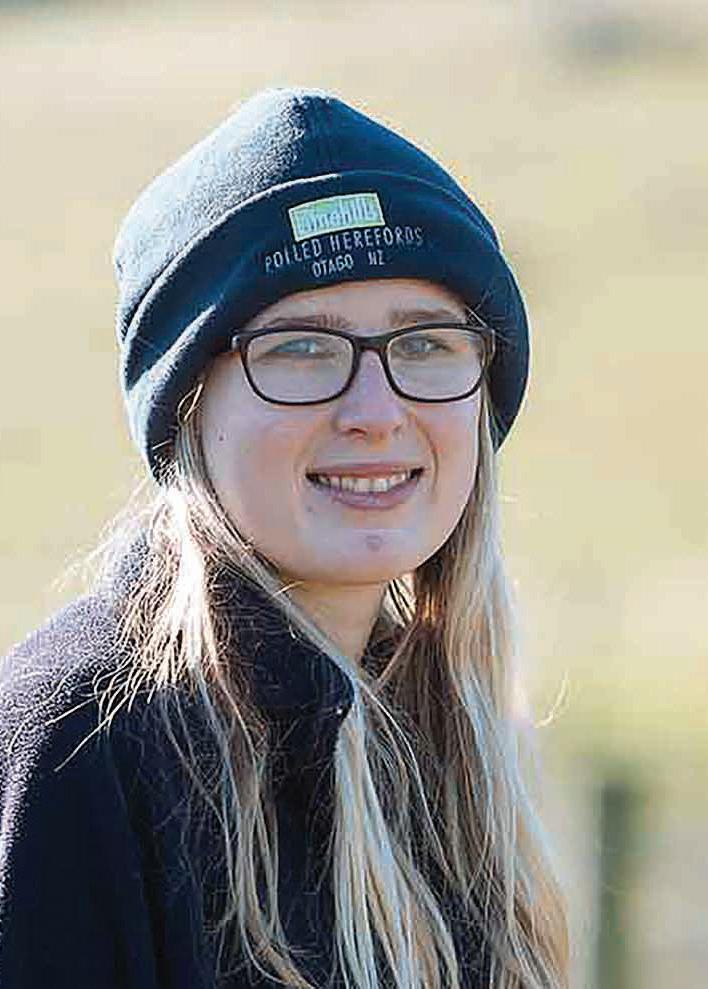
Applications are now open!
Applications are now open!
What makes a successful value chain?
The attributes of successful value chains for enterprises exporting products derived from NZ-grown food and fibre are shown in the poster. Look at why they are important.

bit.ly/value-chain-poster












Have a go:
1. What is a value chain?
2. What is collaboration? How does this help create a successful value chain?
3. Think about a sheep farmer and a wheat grower in New Zealand. What might their products be and who are the consumers? Why is it important to know your consumer?
Stretch yourself:
4. How do you think the running of small and medium-sized businesses differ from large corporations?
5. How might the sheep farmer and wheat grower improve the quality of their products?
Learn more at ourlandandwater.nz
RESOURCES FOR EDUCATORS
Parents and teachers sign up to receive Ag&Ed in your inbox.
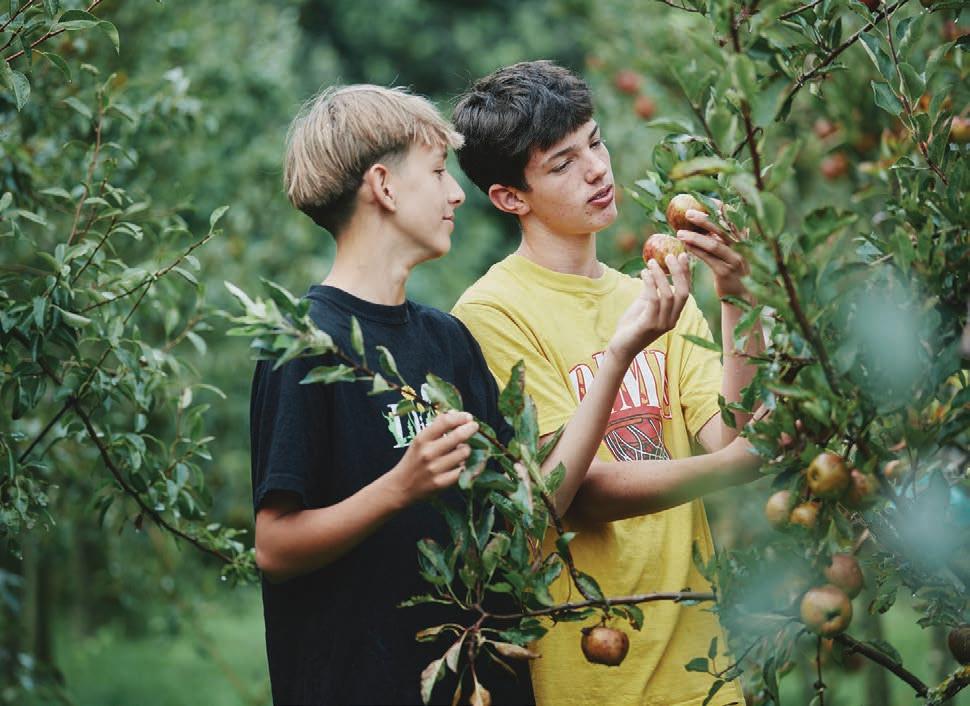



agrihq.co.nz/our-education-resources
Thinking about a career in the primary sector?
Thinking about a career in the primary sector?
Whether you’re just starting out, or looking for that next step, there are education and training options. Some training options are even on the job, which means you’ll upskill and learn while you are earning.
Whether you’re just starting out, or looking for that next step, there are education and training options. Some training options are even on the job, which means you’ll upskill and learn while you are earning.
Other courses are free of charge, or have support options available.
Other courses are free of charge, or have support options available.
Have a listen Watch this
15 FARMERS WEEKLY – farmersweekly.co.nz – July 3, 2023 Ag&Ed 15
Letters of the week Even more praise for radiata pine
Denis Hocking Bulls
GRAHAM West gave a very good summary of why radiata pine is New Zealand’s first choice for production forestry, “Are all trees created equal?” (June 26), but it has a few other virtues that he didn’t mention.
However, let me say that I do like some diversity in life and believe there is definitely room for other production trees and their timbers, as well as trees for numerous other reasons. My farm forestry operation is about 30% alternatives, mainly eucalypts and cypresses, but it is the 70% of radiata pine that does the heavy lifting.
Consider the following:


Radiata pine manages two-thirds the export earnings of sheep and beef from a third of the area, and generally on poorer land.
Its form and growth rate give NZ real advantages over most forestry nations in producing knot-free “clearwood”, a soughtafter commodity internationally. Believe it or not, Norwegians come to NZ seeking clearwood, despite their huge domestic forest resource.
Moving the dial and enriching the kōrero
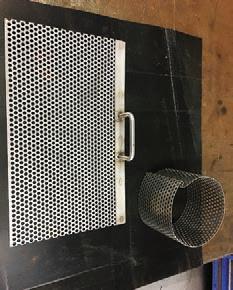

From the Editor
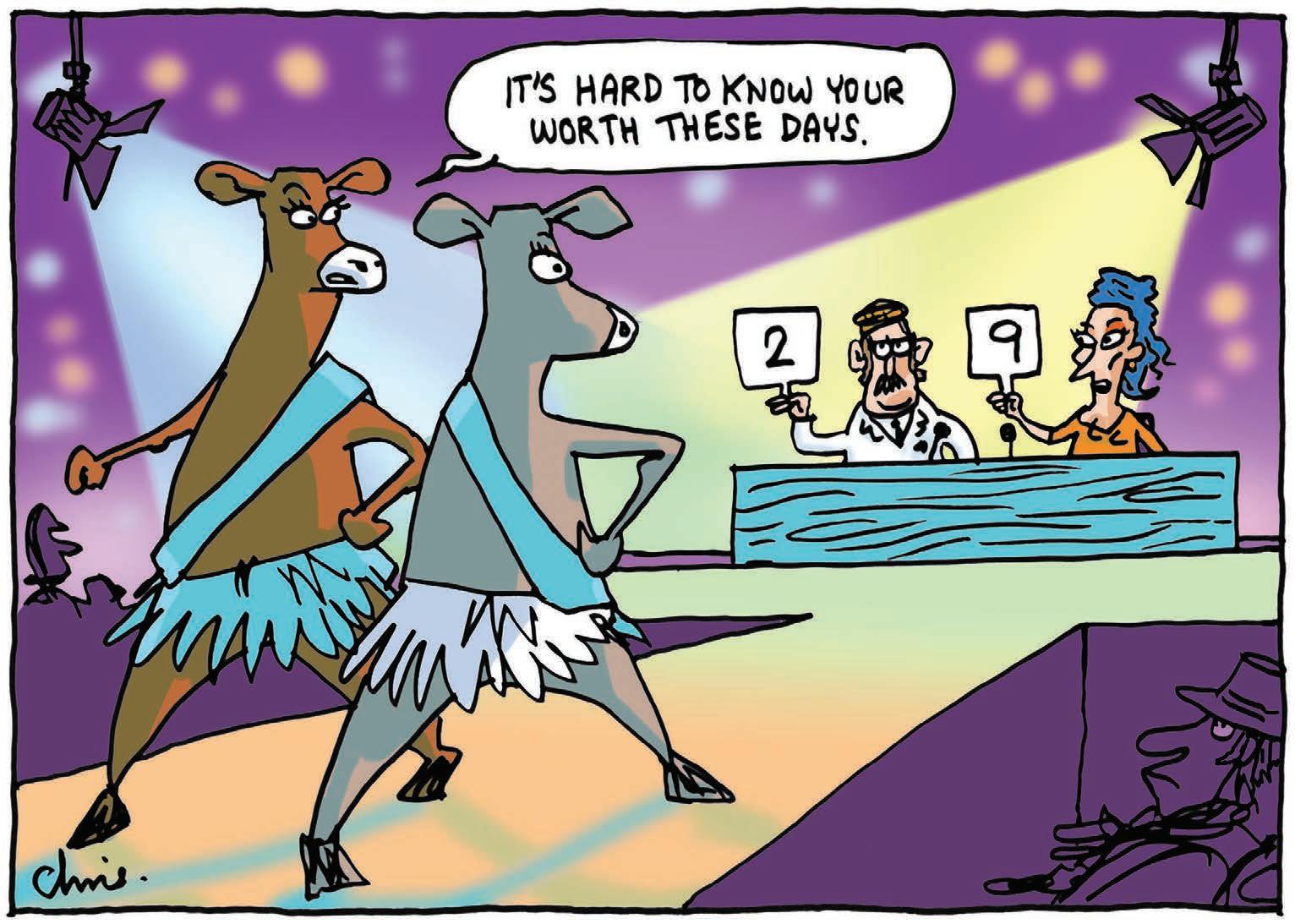
knowledge are also things that can move the dial.
It’s often said, somewhat cynically, that people stop learning once they reach the age of about 50.
TO SUCCEED in farming, the skills we often point to are things like business sense, decisiveness, technology adoption and the ability to lead a high-performing team.
These traits, and others, make up what we consider a good farmer – one who is equipped to roll with the waves of the commodity cycles, the weather, the global economy and the whims of the government. Often, the things that we unfortunately call softer skills are left out of the recipe of success.
These are things like interpersonal or people skills, communication skills, listening skills, time management, problemsolving, leadership and empathy.
Having dedicated themselves to gaining the knowledge they need to succeed in a career, some people are happy to leave it at that.
It’s why you see younger generations groaning about how they have to teach their highly paid bosses how to convert a Word file to a PDF, or how to make sure their grandparents don’t get duped in a phishing scam.
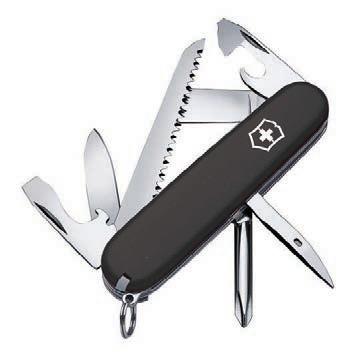
ADVERTISING

Andy Whitson 027 626 2269 New Media & Business Development Lead andy.whitson@globalhq.co.nz


Steve McLaren 027 205 1456 Auckland/Northland Partnership Manager steve.mclaren@globalhq.co.nz
things that change in their environment and wonder what the cause is.
They listen when others speak, rather than spending that time formulating their own speech.
We’ve all been lucky enough to have that curious voice in these pages for almost two decades.
From the ridge has given us an insight into the farming life of Steve Wyn-Harris as he’s battled the elements, the stock, the regulations and the ways of the world.
He’s approached every challenge and quirk of life with empathy, curiousity and a willingness to learn, rather than dismiss.
Radiata pine is one of the easiest timbers to treat chemically. While some of the chemicals may raise doubts, recent developments, notably acetylation – which is effectively vinegar on steroids – can ensure durability and stability and create a timber that the Europeans regard as one of the best substitutes for tropical hardwoods. This is really a top-shelf timber.
Yes, I agree with Graham West, it is difficult to imagine another species that has served us so well.
Colin Williscroft 027 298 6127 colin.williscroft@globalhq.co.nz
Annette Scott 021 908 400 annette.scott@globalhq.co.nz
Possessing these qualities gives a farmer the power to navigate conflict, boost productivity, build community and sustain relationships.
Hugh Stringleman 09 432 8594 hugh.stringleman@globalhq.co.nz
Gerald Piddock 027 486 8346 gerald.piddock@globalhq.co.nz
Jody Anderson 027 474 6094 Waikato/Bay of Plenty Partnership Manager jody.anderson@globalhq.co.nz
But it doesn’t have to be this way and the best remain curious throughout their lives.
Richard Rennie 07 552 6176 richard.rennie@globalhq.co.nz
Donna Hirst 027 474 6095
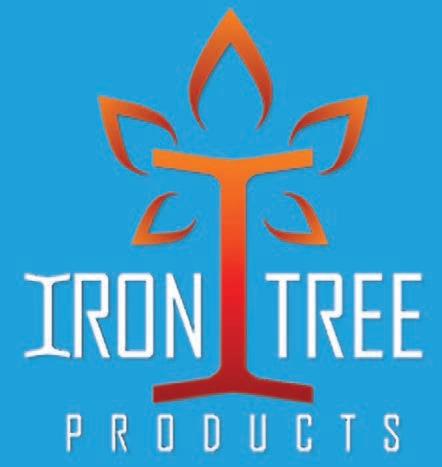
Lower North Island/international Partnership Manager donna.hirst@globalhq.co.nz
It’s harder to pinpoint where these qualities show up on the balance sheet but make no mistake – possessing them can do wonders for a farm business.
Nigel Stirling 021 136 5570 nigel.g.stirling@gmail.com
PUBLISHER
Dean Williamson 027 323 9407 dean.williamson@globalhq.co.nz
Curiosity and a life-long thirst for
They see new technologies and wonder how they can be integrated into their home or business lives.
Grant Marshall 027 887 5568 South Island and AgriHQ Partnership Manager grant.marshall@globalhq.co.nz
They travel and experience the different ways other cultures approach things that are done a certain way back home.
Javier Roca 06 323 0761
Livestock Partnership Manager 027 602 4925 livestock@globalhq.co.nz
They have their eyes open to the little
He doesn’t know everything, but that’s okay as there’s plenty of life left to learn.
ISSN 2463-6002 (Print) ISSN 2463-6010 (Online)

Debbie Brown 06 323 0765 Noticeboard/Word Only/Primary Pathways classifieds@globalhq.co.nz
Grant Marshall 027 887 5568 Real Estate Partnership Manager realestate@globalhq.co.nz
This week Steve leaves the pages of Farmers Weekly, as he leaves the pastures of the farm that has been his life’s focus.
Luckily, that farm has been a base for a much broader life of family, community and the world.
Andrea Mansfield 027 446 6002 Salesforce director andrea.mansfield@globalhq.co.nz
PRODUCTION
No doubt that curiosity will continue into retirement, without the weekly deadline that commands a structure be imposed on it.
Lana Kieselbach 027 739 4295 production@globalhq.co.nz Advertising material adcopy@globalhq.co.nz
SUBSCRIPTIONS 0800 85 25 80 subs@globalhq.co.nz
It’s been a privilege to open that weekly email From the ridge each week. We at Farmers Weekly will miss it.
But there’s more to learn and more to do and the world keeps turning and things keep changing.
All the best Steve.
LK0107425©

0105428 265.02x70 Serious Incinerators - Pulpit page Phone 021 047 9299 • www.irontreeproducts.co.nz Scraper Attachment for leaf blower Spark arrestor & ash guard LK0114369© SERIOUS INCINERATORS • Heavy duty • Long lasting incinerators Three sizes available. Options include: 16 Editorial
FARMERS WEEKLY – farmersweekly.co.nz – July 3, 2023 Opinion 16
Bryan Gibson Managing editor
It’s harder to pinpoint where these qualities show up on the balance sheet but make no mistake – posessing them can do wonders for a farm business. Best letter WINS a quality Victorinox Hiker Knife Send your letter to the Editor at Farmers Weekly P.0. Box 529, Feilding or email us at farmers.weekly@agrihq.co.nz of theWeek Letter Farmers Weekly is published by GlobalHQ, PO Box 529, Feilding 4740. New Zealand Phone: 0800 85 25 80 Website: www.farmersweekly.co.nz Best letter each week wins a quality Victorinox Hiker knife WRITE TO The Editor, Farmers Weekly P.O. Box 529, Feilding EMAIL farmers.weekly@globalhq.co.nz • FAX 06 323 7101 So go on! Stick the knife in EDITOR Bryan Gibson 06 323 1519 bryan.gibson@globalhq.co.nz
Carmelita
EDITORIAL
Mentor-Fredericks editorial@globalhq.co.nz Neal Wallace 03 474 9240 neal.wallace@globalhq.co.nz
Printed by Ovato NZ Ltd Delivered by Reach Media Ltd
HME ryegrass is by no means a no-brainer
a different maturity is enough to impact methane production in the rumen with zero input cost.
Malcolm White Napier
WITH reference to “GM’s time may have come in NZ” (June 19): I have no issue with the tenor of the report that this technology should always be reviewed in the context of protecting our markets. However, I am sceptical that HME ryegrass is a “no-brainer”.
To date GM appears to have been more about patenting seed and funneling royalties to monopolistic seed companies than any agronomic advantage. If the only seed available is GM and if your crop insurance becomes dependent on the purchase of GM seed, then of course lots of hectares of it will be planted.
That is hardly an endorsement of its productivity, simply its politics. GM maize is now triplestacked herbicide resistant as weed resistance takes off on steroids. This is the predictable result of chemical companies becoming monopoly seed suppliers.
HME ryegrass’s benefit is that it is lower in crude protein. But crude protein content can be influenced by the maturity of the grass; ranging from 3% in very mature grass to 30% in highly fertilized young grass. Grazing at
There are also the high sugar ryegrass options here in New Zealand that also boast higher efficiencies and emissions reductions. How much better is the HME ryegrass than these varieties? Which will persist better in different farming systems?
The latest research is showing the benefits of multi-species swards for biodiversity, water quality, animal health, increased soil carbon sequestration and lowering of methane emissions.
The Irish government is so confident in this research they are paying their farmers $250/ha to plant multi-species swards in place of ryegrass/WC.
The Irish government is so confident in this research they are paying their farmers $250/ha to plant these swards in place of ryegrass/WC.
The research has found that monocultures will tend to be compacted, show trace element deficiencies and accordingly have an increased need for inputs, and lastly have an inability to store soil carbon.
Pretty damning if you widen the context from just methane to include carbon. Compacted
soils also give off increased methane from anaerobic biomass decomposition. Just adding chicory and plantain to ryegrass clover begins to accrue the multispecies benefits.
The question remains how will it fare in our environment. Ireland bets on adding complexity and resilience whilst we bet on a monoculture, albeit with technowow factor.
Monocultures do not benefit animal performance because of their inherent nutrient deficiencies.
There have been no animal feeding trials to date on HME ryegrass. How will it fare? What is its palatability? What will it do for stock performance? If the stock won’t eat it, there’s no benefit to planting it.
Even if it was part of a pasture mix, is it any more effective in a methane reduction context than multi-species swards? Would it even persist in such a scenario? Considering one of the most frequent complaints against most new perennial ryegrass cultivars is their lack of persistence, does this HME ryegrass fare any better in that regard in any planting scenario?
Are we to make royalty payments based on an ever decreasing sward percentage? At what point is the presumed methane benefit lost? How often are we to re-sow to claim those benefits? Let alone, how is it
MONOCULTURE: The latest research is showing the benefits of multispecies swards for biodiversity, water quality, animal health, increased soil carbon sequestration and lowering of methane emissions.

meant to be established on hill country? And of course, is the biogenic methane context even valid? The odds on cows causing climate change are lengthening
fast, but that’s a bigger question. So many questions and so little yet known. About as far from a “no brainer” as you could possibly get.
Got a view on some aspect of farming you would like to get across? We offer readers the chance to have their say. Contact us and have yours.
farmers.weekly@agrihq.co.nz
Phone 06 323 1519
An open letter from NZ’s foresters
James Treadwell President of the New Zealand Institute of Forestry
DEAR members of Parliament and members of the media,
We, the New Zealand Institute of Forestry, represent the professional foresters of New Zealand. Our organisation comprises experts trained in the science of forest management across all types of forests and species. We write to you to express our deep concerns about the future of forests and forest investment in our country. It is crucial we bring attention to the cumulative impact of recent decisions, which have far-reaching consequences for all New Zealanders.
Firstly, we are troubled by the government’s disregard of the previous advice of the Climate Change Commission (CCC) regarding Emissions Trading Scheme (ETS) auction settings. This decision has led to a reduced price for NZUs and failed government auctions, creating a significant financial burden of at least $0.5 billion on the government.
Ignoring the CCC’s advice undermined the potential of forestry to contribute to
NZ’s climate change targets. Consequently, we are unlikely to fulfill our commitments, necessitating the costly purchase of overseas units to honour our international pledges, impacting every taxpayer.
Secondly, we are concerned about the CCC’s draft advice to restrict new planting, which appears to be influenced more by the media and political pressure than by sound science.
These proposed actions swing the pendulum too far, resulting in planting rates falling below the required levels outlined in their own budget. This failure to meet our commitments will have significant implications.
Furthermore, both the National Party and the Labour Party have recently introduced measures that will limit new planting and creates an atmosphere of uncertainty.
National proposes afforestation limits of 15,000ha and a three-year moratorium on forestry on farms, while Labour introduces council consenting of afforestation.
Both of these initiatives will lead to reduced new planting, far below the CCC’s minimum requirements. Consequently, we will fail to meet our carbon reduction commitments, requiring additional
expenditure on overseas units by the government.
Our estimate of the cost to the NZ public for the purchase of units overseas which will no longer be grown here will be around $3.5bn over the next three years – money better spent on our education and health vote.
Lastly, the Ministry for the Environment (MfE) has recently released a consultation document on ETS changes with four proposed options. All of these changes will result in decreased planting, particularly options 3 and 4. It is concerning that the MfE aims to address the same subject as the ongoing consultation by the CCC even before the latter’s consultation has concluded.
The cumulative effect of these actions is dire:
• Forestry’s potential to contribute to NZ’s climate change targets has been severely undermined, with projected planting in 2024 and 2025 significantly reduced and approaching zero, leading to job losses throughout the sector.
• Investor confidence in forest investments has plummeted due to the prevailing uncertainty.
• The ability to achieve the Industry Transformation Plan is compromised, resulting in a
failure to add billions of dollars in value to the NZ economy.
• The market for approximately 100 million forestry NZUs currently in the register has been devalued and weakened. The value and tenure of these units are now uncertain, particularly due to the presentation of options 3 and 4 in the consultation document. This uncertainty affects not only investors but also Iwi, thousands of individual NZ investors, farmers, and forest owners.
• NZ falls further behind its climate change targets, necessitating increased spending on overseas carbon credits by the government. This misallocation of taxpayer funds could be better utilised to foster domestic forest investment and a more productive industry, including diversified farming and carbon revenues. Retaining capital within the country should be a priority for any government.
• The need to purchase overseas credits contradicts the CCC’s advice to prioritise gross emission reductions over offsetting. We note planting new forests on farmland provides 75% carbon offsets and 25% gross farming
emission reductions, making it a superior option compared to many other planned emission reduction strategies.
It is crucial to acknowledge that, while NZ should strive for gross emission reductions, our Paris target is net emissions and this must be met in the most costeffective manner possible.
The current political race to limit forest investment and the supply of forestry carbon credits has been remarkably successful, rendering further action unnecessary. Even if immediate steps were taken to improve forest investor sentiment, it will take years to rebuild trust in stable government policies concerning these issues.
The matter of trees on farms has been excessively politicised, with media reporting often lacking in-depth knowledge or being disingenuous.
This overall situation is detrimental to NZ. We urge all politicians and officials to consider the collective impacts of their actions and engage in urgent consultation with the forest industry for the betterment of NZ and global climate change. Let us work together to find sensible and measured solutions that benefit our nation as a whole.
17 In My View
In my view ...
FARMERS WEEKLY – farmersweekly.co.nz – July 3, 2023 Opinion 17
Hail and farewell after 27 years from the ridge
From the ridge
now do a comfortable 50 words a minute, which is a 16-fold increase in productivity.
I entered the dawning age of something called the World Wide Web with a provider in Wellington named Voyager. My email software was called Pegasus.
The only difficulty with emailing in those very early times was that I only knew two other people on the internet. My mate Chris and the editor.
People used to ask me what was the interweb thing like and was it going to be of any use.
Over the subsequent 27 years, I reckon I’ve written about 1300 columns, given that for three years I was doing it fortnightly.
thinking it’s not that great and hopefully the editor doesn’t notice and get a surprising large number of emails.
I’ve learnt I’m no judge of which work of mine will be well received or not.
When I began, we had two small boys and another lad turned up about a year later and that birth would have featured as a column.
He’s 26 now and got married a few months ago.
The eldest is now 30 and he and his wife produced our first grandchild last year and I am besotted with her.
The middle one works and lives in Amsterdam and we miss seeing him.
IN 1995 I bumped into an old mate at the Hawke’s Bay A&P show who I hadn’t seen since 1981. We had been classmates through our years at Lincoln College, as it was called then, doing B Ag commerce degrees.
I’d watched his subsequent progress in the rural media with interest and he had quickly risen to become the editor of the longestablished and respected NZ Farmer.

I congratulated him and he likewise commended me on recently becoming the Hawke’s Bay Farmer of the Year.
“We haven’t done too badly considering our classmates voted us least likely to succeed,” I told him.
Tony Leggett was dumbfounded and couldn’t believe this was the case, but I told him it had happened at a final function he’d missed.
He took the news badly but didn’t seem troubled that I too had suffered the same fate.
His boss at the time, Hugh Stringleman, was highly amused at Tony’s distress.
Some months later I saw that this regular column had suddenly become vacant and rang him offering my services.
“Have you got any examples of your work?” he asked.
“No, I haven’t written anything since sixth form English.”
He gave me the job, perhaps on the grounds that it would show those errant classmates how wrong they were.
Years later I told him I’d made the story up.
That first column in April 1996 was handwritten, taken over to my neighbours’ and faxed to some poor subeditor in Auckland.
Given that the neighbour and subby were going to get sick of me in short measure, I bought a flash computer with an amazing gigabyte of hard drive (this current one has 1000) which ran the transformational Windows 95 software.
Suddenly I was able to pound out a column at about three words a minute, given certain keys seemed impossible to locate. I’ve just checked, out of interest, and can
Seventeen years with Farmers Weekly and this is number 815.
One of the things I’m most proud of in my life is that I’ve never missed a deadline or failed to file. Through sickness, deaths, using iPads, internet cafes and borrowed laptops as I’m still only a PC user.
I’ve seldom found it easy, particularly settling on a topic to write about.
The writing process is not that enjoyable and takes a whole evening, but I love pushing send when emailing the completed column off to my editor and subby. No deadline for another week.
For 40 years I knew what I’d be doing tomorrow, next month and next year, given the rhythm of the seasons. I’ve been saying that I was looking forward to that uncertainty. But now that it is here, I’m feeling slightly anxious if I’m honest.
I’ve had about 10 editors and subbies or so of each and because you know I don’t have to suck up can tell you that this editor, Bryan Gibson, is the best I’ve observed.
The other thing I’ve enjoyed is the interaction with my readers.
The old saying that “You are never a prophet in your own patch” rings true in this game.
Because they know me too well, there is little feedback or even acknowledgement from my own area that I write a column, but the further from home I get the more excited people are to meet me and have a chat.
My email address has probably been under the column for 15 years or so and that has given instant response from all sorts of places, including from overseas online readers.
Sometimes I craft a column that I’m particularly proud of and hear hardly anything from anyone.
Other times I knock one out
Jane has often featured and borne it with good grace.
Farming was tough in 1996. We had been farming in our own right for 10 years with debt and low product prices and it had been a hard slog.
In the early 2000s it suddenly improved and although there have been ups and downs with pricing and weather events since then, our business and the primary sector are in far greater shape than we were in during my first 15 years of farming.
I know it is very difficult out there for many of you and these weather events in recent months up the East Coast of the North Island in particular have made it almost impossible to bear.
We will get through this as we have done in the past with many other challenges.
But you won’t be able to do that if you don’t look after yourselves and those around you.
We are fortunate nowadays with organisations like the Rural Support Trust and Farmstrong, which are full of compassionate, empathetic, and caring people.
And our supporting industries have reps and staff who likewise have a more understanding approach with clients than in the past.
I’m confident that, as producers of quality food and fibre to a world wanting and needing those items, farming here has a wonderful future.
I’m also excited about some of the young people I’ve been meeting from the primary sector.
They see the world differently and are the future. Baby boomers like me need to acknowledge that we have had our time and it is time to trust that future to others.
I finish my 40-year full-time farming career this week with a degree of uncertainty of what lies ahead.
I haven’t had any uncertainty for 40 years as I knew what I’d be doing tomorrow, next month and next year given the rhythm of the seasons.
I’ve been saying lately that I was looking forward to that uncertainty. But now that it is here, I’m feeling slightly anxious
if I’m honest. I won’t miss the deadline, but it will be odd not having that weekly discipline after so long.
Thank you for reading over the years and the many kind messages. Take care.
Steve
• Fans of From the ridge can look forward to a retrospective of some of Steve’s finest columns over the next few months, starting with his first ever piece, “Sheep farming a piece of cake”, published in April 1996. Find a new old column every Monday from July 10 at farmersweekly.co.nz
An eruption of ignorance over emissions plan
Alternative view
Watching Climate Change Minister James Shaw on television reminded me of a possum in the headlights. I thought it was embarrassing.
I did, however, support his comments that “one of the things the government is trying to do is to ensure that landowners who have invested in forestry actually have the value of their assets preserved”.
That told me that the majority of changes going forward will not affect the forestry investments to date.
Alan Emerson Semi-retired Wairarapa farmer and businessman: dath.emerson@gmail.com

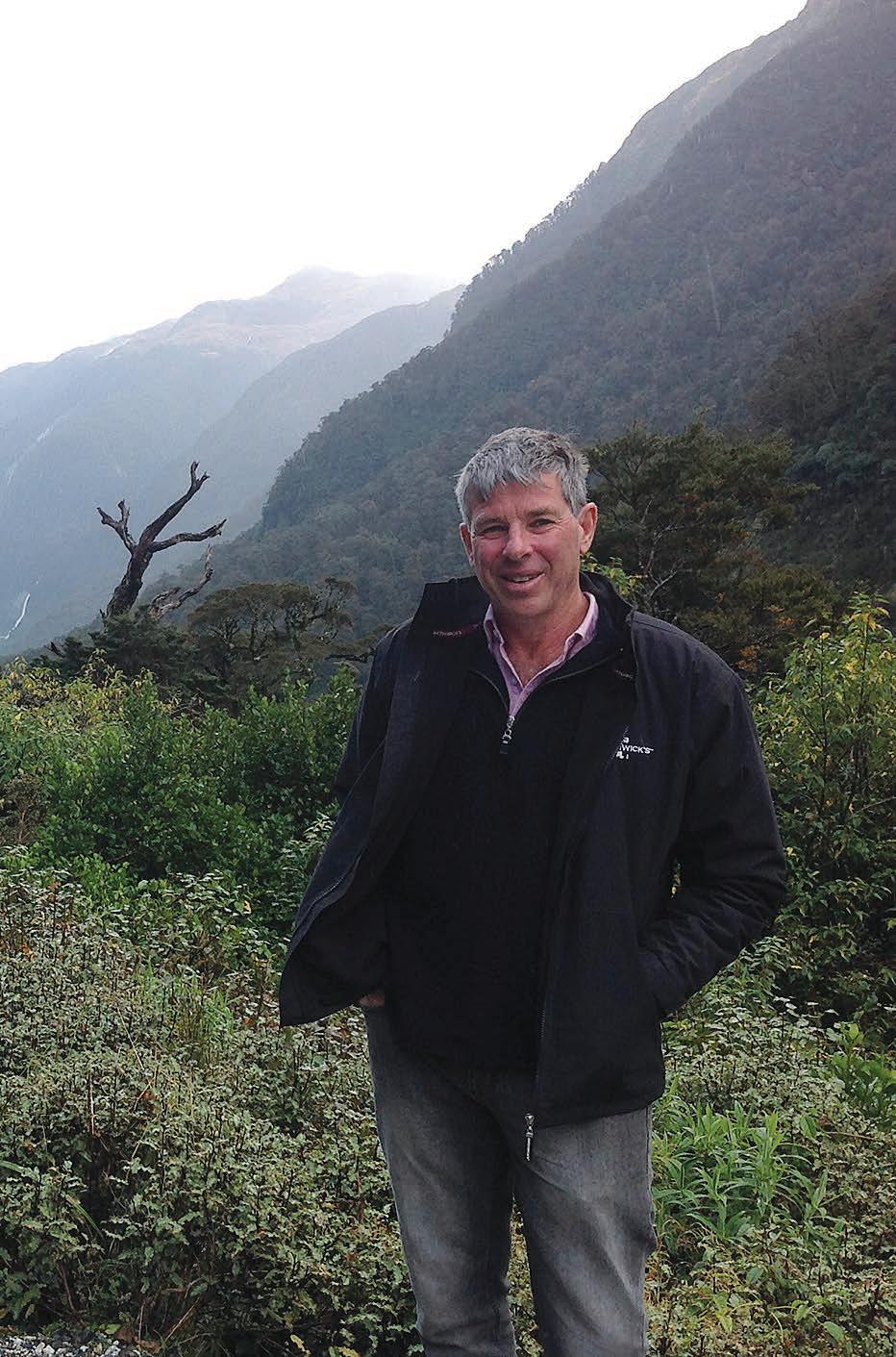
TO SAY the entire ETS debate is irritating would be an understatement. I don’t believe either our politicians or our bureaucrats have the faintest idea.
The Emissions Trading Scheme (ETS) was designed to help offset our carbon emissions but it has been played around with ad nauseum by both Labour and National. Investors need certainty and they’re not getting it. For the record I don’t have a problem with planting the right tree in the right place to sequester
18 Opinion FARMERS WEEKLY – farmersweekly.co.nz – July 3, 2023 Opinion 18
LEAVING THE RIDGE: Steve Wyn-Harris retires his column this week after nearly three decades, 1300 unmissed deadlines and many, many fans.
Steve Wyn-Harris Central Hawke’s Bay sheep and beef farmer: swyn@xtra.co.nz
Continued next page
Narrowing chances of road to deep north
Meaty matters
from Auckland Council for the sediment control practices during the bulk earthworks.
The innovative environmental plan involved different sediment control systems for runoff during construction, managed by chemically treated sediment control ponds, and runoff from the completed motorway, which is passed through planted wetland ponds before being discharged offsite.
AFTER many rumours and many delays the Puhoi-to-Warkworth section of the Ara Tuhono motorway finally opened early morning a few Mondays ago, as did the Matakana link road, which has been patiently awaiting completion of the motorway for several months.
Apart from the joy of a faster journey to reach Warkworth from the south, the other major cause for celebration is the immediate avoidance of the notorious Hill Street intersection with its six streams of traffic meeting at the traffic lights on the old State Highway 1. Driving into Warkworth from Matakana is now an absolute breeze and weekend traffic queues should be a thing of the past.
I was fortunate enough to be taken on a tour of the new motorway a few weeks ago, which gave me the chance to appreciate the design and engineering and learn about the project’s use of waste material to cut and fill as the construction progressed.
The largest cut was a 70m rock face, from which 1.2 million cubic metres were removed – two thirds reused as fill. The erosion control programme was designed in-house by the project team; it won an international award and praise
Continued from previous page
carbon. I do have a problem with companies using trees to mitigate all of their carbon obligations. Surely we can have a simple ETS recognising both natives and exotic forests that can only be used in part by polluting companies. If they can use trees to cancel all of their obligations, nothing will change. We’ll be a heavily polluting economy with endless trees. We now have a consultation document that, like all such papers is a total waste of time. I only wonder why politicians bother with the charade.
The government recently promoted tweaks to land-use regulations that will give local government the ability to restrict trees on good land. As I’ve written, I believe that’s positive.
The four options up for “consultation” are convoluted at best. For the record I agree with
At the narrowest part of the motorway through a mature kauri forest, the fewest trees possible were removed to allow construction to take place. In compensation for the removal of native species across the project site, over a million trees and vegetation were planted the length of the motorway.
Robert Jones, project manager for NX2, the joint venture between Fletchers and Spanish construction company Acciona that won the contract, explained the delayed completion resulted from two unforeseen obstacles –covid, which had delayed work for months on end over the past three years, and the horrendous weather since last spring.
A number of the workforce from the north didn’t return after lockdowns, while staff absenteeism for sickness reasons hindered completion right through to the end.
Nevertheless, Jones – who also project-managed the motorway build from Orewa to Puhoi between 2004 and 2008 – was proud of the project’s environmental control, the removal and reuse of a massive amount of earthworks material, and the project’s excellent safety record.
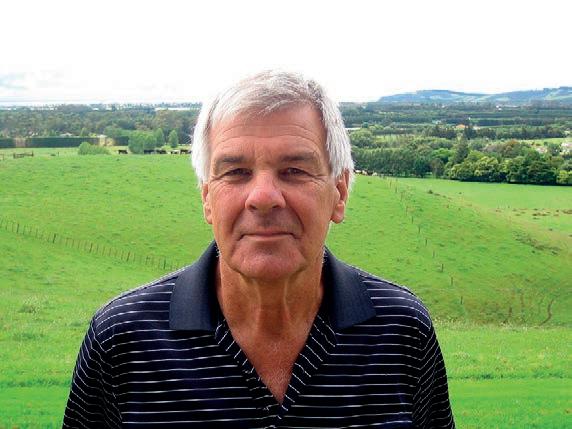
Less satisfying was the need to negotiate the final amount of cost overruns with NZTA; they are rumoured to have amounted to $170 million.
The pleasure of the motorway’s completion is in stark contrast to the reality of the dreadful road
the ACT Party. Its environment spokesperson, Simon Court, told me that the reform options are “largely unnecessary”.
He added that “CO2 emissions can be achieved by supporting the current ETS”. I wouldn’t argue with that, but politicians of all colours like to meddle.
I don’t always agree with the Forest Owners Association (FOA), but I support its position on ETS reform. It maintains that the “options for revising the ETS will cause a shortfall of plantation forests for sequestering carbon in NZ and make meeting our 2050 emissions target impossible”. That makes sense.
further north. The last National government was responsible for initiating the Puhoi-to-Warkworth stretch, which was started in 2016. Its intention to build the next section to Wellsford was scuppered by the 2017 Labour/ NZ First coalition with significant assistance from the Green party and Julie Anne Genter as associate minister of transport. Her solution was to install some median barriers on the extremely unsafe stretch of highway through the Dome Valley between Warkworth and Wellsford.
The fact sheet put out by NZTA (it wasn’t called Waka Kotahi then) in 2017 predicted this stage of the Roads of National Significance would be finished by 2026,
It adds that “this issue is far too important to play politics with. By the time politicians discover they have put forestry into reverse it will be too late. Climate change will not wait for us to catch up.”
So, my preference is for a simple, transparent ETS along with limitations on the amount of offset polluters can use.
As I’ve written often enough I’m not a scientist, but I remain incredibly confused about the entire scientific process around global warming.
In addition, I’d ask the question as to why no one is talking about the global warming effect of volcanoes. I’m not suggesting we can do anything about them but when one eruption 32 years ago can negate all the man-made emissions in history, why are we playing with climate change? Why are we putting NZ farmers through hoops over something about which we have absolutely no control?

and is unlikely to be achieved before 2050 at the earliest because of budget constraints and New Zealand’s notoriously slow delivery of major projects.
five years after the anticipated completion of the Warkworth section.
It forecast a time saving of seven minutes to Te Hana, north of Wellsford, for cars and more than 10 minutes for trucks, while increasing average speeds from 70km/h to 95km/h and reducing heavy vehicle movements through Wellsford by 1400 and cars by 14,000 per day.
At the time the indicative route was predicted to reduce deaths and serious injuries by 80%. The recent run of bad weather has seen the closure of SH1 at Brynderwyn, which only serves to highlight the drastic need for this road.
The latest information on the NZTA website, dated 2021, states work on this section of motorway is not planned to start during the present decade, although the designated route and consents are making their way through the Environment Court.
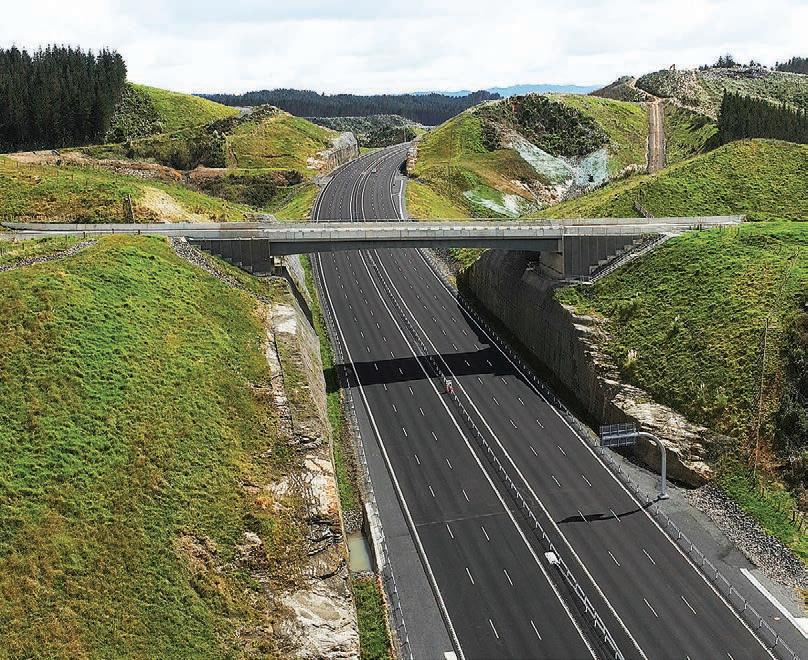
The tragedy of this ridiculously delayed process is the complete lack of any plan to extend the motorway to Whangārei, which would contribute enormous economic benefits to Northland
The distance to Te Hana is 24km compared with 18.6 km from Puhoi to Warkworth, while the remaining portion to Whangārei would be 75km. At the present rate of progress, Northland residents and businesses will be lucky to see the motorway built this century. This total neglect of the Far North is an indictment on successive governments, especially the Labour-dominant ones since 2017, which have ignored the social and economic benefits of connecting regions and communities through investment in decent infrastructure. At the same time there have been port studies suggesting Auckland’s main port should be relocated to Marsden Point when there is not even a viable rail service, let alone a proper highway.
At the 2020 general election the National Party promised to build a four-lane highway to Whangārei including a tolled tunnel through the Brynderwyns by 2040, but has not yet announced whether that undertaking will be part of its regional development plan at this year’s election.
The economic benefit of improving road access to the north is highlighted by a comparison with Otago, where tourism contributes almost twice as high a percentage to the regional GDP as it does in Northland. Admittedly Northland has a greater proportion of heavy industry, while Otago’s tourism is boosted by Queenstown and winter sports, but the contrast is still significant.
The completion of the latest motorway underlines what everyone knows intuitively – large infrastructure projects meet a long overdue need, they are generally delivered late and over budget, and planning for the next stage is already lagging well behind any desirable timeframe.
19 FARMERS WEEKLY – farmersweekly.co.nz – July 3, 2023 Opinion 19
I’m not a scientist, but I remain incredibly confused about the entire scientific process around global warming.
BAFFLED: Alan Emerson says he would like to know ‘why no one is talking about the global warming effect of volcanoes’.
Allan Barber
Meat industry commentator: allan@barberstrategic.co.nz, http:// allanbarber.wordpress.com
OPEN ROAD: After many delays the Puhoi-to-Warkworth section of the Ara Tuhono motorway finally opened early morning a few Mondays ago.
The tragedy of this ridiculously delayed process is the complete lack of any plan to extend the motorway to Whangārei, which would contribute enormous economic benefits to Northland.
New SATE takes his seat at the table
Fifth-generation
HAMISH Marr was humbled to be offered the role of Special Agricultural Trade Envoy but knew he had to seize the opportunity on behalf of his peers.
Marr farms a 500ha mixed arable farm with his family near Methven in Mid Canterbury.
The diverse farm system is managed as two agronomically separate operations with 400ha arable growing peas, wheat, red clover, oats, barley and vegetable seeds, producing and processing high quality seeds for global export.
The 100ha pastoral operation carries replacement dairy heifers year-round with dairy grazing on the side, while also finishing 4000 lambs under contract to be off the farm in June.
It is a diverse operation exposed to many of New Zealand’s key sectors, which gives Marr a experience across the agricultural sector.
As for being offered the role to advocate for farmers and exporters, Marr believes he has a responsibility to “give it a crack”.
“When a farmer gets approached to take the job on and you don’t step up, will we get the outcomes we want?
“If we don’t take these roles on, we can’t criticise and it doesn’t say much for the sector if we don’t get involved.
“I certainly feel it’s an honour and a privilege and I look forward to the challenges and opportunities this role will bring for farmers, exporters and all in the NZ ag sector.”
The role of the Special Agricultural Trade Envoy (SATE) is to work alongside the government to support key objectives, communicating between farmers and growers and international importers to create the best possible relationship between farmers and their international business partners.
“Understanding the needs of our customers offshore so that the farmers are producing products that the people who are purchasing our product want to buy is very specific and critical.
“It’s really about circular economy and ensuring that both sectors are engaged.
“That’s as I understand it at this stage. I still have more to learn about the specifics of the role and that’s scheduled for next week when I head to Wellington,” Marr says.
Meantime Marr sees NZ’s point of difference in that Aotearoa has a great story to tell and a lot to offer the rest of the world.
“Agriculture is our biggest export, we have to get it right, get
the whole supply chain working together and that’s what motivates me to make sure that happens.
“People all round the world want to buy our product, we are a free-of-corruption food-producing nation, we have to do our best to present that and maintain our Made in NZ brand.
“We’re a small island nation in the middle of the Pacific Ocean so we’ve got this lovely temperate maritime climate.
“A lot of competitors are continental countries so in its simplest form, their weather patterns are completely different and the weather patterns dictate what you do.
“Our soils are young because we have only really been at it [farming] for a couple of hundred years and we’re in a production environment where we essentially have got the free-market economy, which means our farmers, by nature, are pretty agile.”
The way NZ produces food in comparison to the rest of the world is the key point of difference for exporters.
“There is a massive market for the way Kiwis farm.
“There’s a market that’s looking for our milk, our seed, our meat, our kiwifruit.
“We’re in a pretty good spot we just have to get it right.”
In his experience overseas, Marr learnt the importance of Made in NZ produce.
“We need to maintain our reputation for high-quality Kiwi products, that is the key to sustainable growth in international markets.
“People will literally jump over themselves to buy our products so it’s very, very important that we look after that brand and realise that brand is very, very precious.”
Understanding what the market wants from NZ produce will create the best opportunity for
We are a free-ofcorruption food-producing nation, we have to do our best to present that and maintain our Made in NZ brand.
NZ farmers to make the most of international export opportunities.
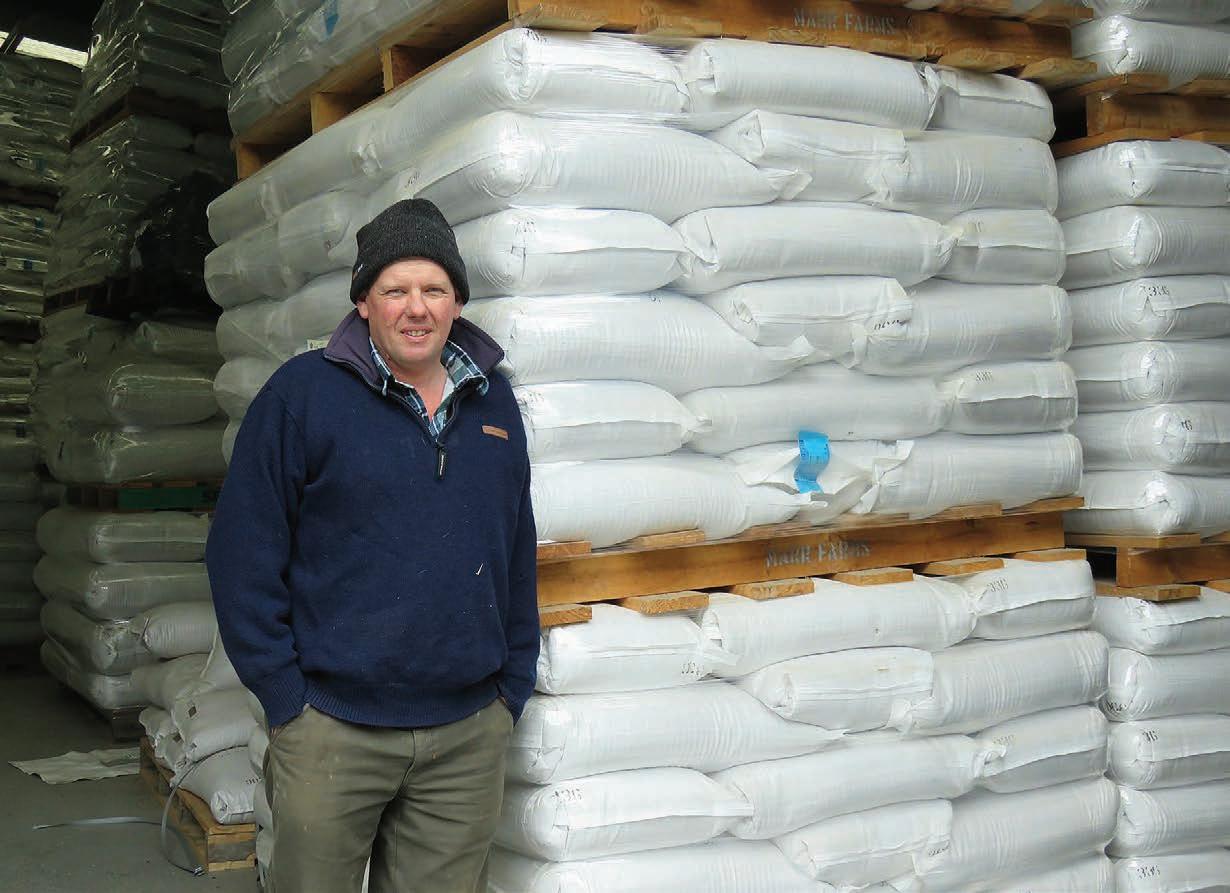
Marr says his Nuffield Scholar experience will be of huge benefit in his SATE role.
“Nuffield gives you a unique perspective of agriculture and the
food system, the way people live and eat and buy food.
“It puts you in a pretty amazing place in perspective to where NZ sits in all that.”
Marr spent a year looking at farming systems around the globe.

“It was a once-in-a-lifetime, life-changing, very humbling, eyeopening year of my life.
“Looking at everything with food production and how we live and farming and politics, it was amazing and I know the experience will be a huge leg up going into this [SATE] job.”
He says he hates the term “conventional farming”, but he “looked at conventional
farming, organics, regen ag and inverted commerce, rice farming, horticulture orchards, vegetable production, indoor agriculture, extensive and intensive farming all round the world”.
“There’s a whole lot of conclusions and the first one is that everywhere you go around the world is different.
“NZ is unique in the way we do things, unique in the fact that we are dominated by animal agriculture, and the fact that our farming systems are pasturebased is, again, another point of difference compared to a lot of other places.”
Marr says it’s not all beer and skittles for NZ farmers, referring specifically to cropping farmers who will face some real challenges in the next two years, not only in profitability but options as well.
“We grow a lot of high-value small seeds, of which 80% go to export and both prices and demand have fallen away over the past 12 months to the extent there are seed sheds full of seed that would have been exported that is not going anywhere in the next 12 months.”
The supply chain issues will affect farmers on the ground.
“There will be challenges with what farmers produce on their farms in the next 12 months, two years, three years because things take a little while to unwind.
“But the world wants plantbased food, so the future in any discussion going forward has to have opportunities for arable farmers because, as they say, it all starts with the seed, so the future viability of farming I see as rosy. We just have to get there.”
On July 1 Marr took over the SATE position from Mel Poulton, who has been in the role since 2020.
20 People FARMERS WEEKLY – farmersweekly.co.nz – July 3, 2023 People 20
farmer, Nuffield Scholar and New Zealand seedgrower of the year in 2022, Hamish Marr has been appointed NZ’s Special Agricultural Trade Envoy. Annette Scott reports.
SEED CAPITAL: Hamish Marr says the export market for high value small seeds has fallen on hard times over the past 12 months ‘to the extent there are seed sheds full of seed’.
RESPONSIBILITY: Humbled to be offered the role, Hamish Marr says he believes he had a responsibility to ‘give it a crack’. Photos: Annette Scott
Hamish Marr Special Agricultural Trade Envoy
Exploring the human appetite for pasture
A new study looks into the potential of New Zealand’s rich pastures to feed people – tapping into a multibillion-dollar global market.
Delwyn Dickey TECHNOLOGY Food



HARVESTING pasture for protein could be a promising option for farmers looking to diversify their income and reduce their environmental footprint, a new report says.
Along with needing no new infrastructure or stand-down time for a new crop to come online, farmers already have proven expertise in growing good quality pasture up and down New Zealand. There’s been progress in technology that can extract protein from pasture to create a plant protein food ingredient for human consumption. While there is currently limited demand and no commercial processing for pasture protein in NZ, both are likely in future.
But will pastoral farmers be interested in integrating protein harvest into their grazing system in the future?
“Not all farmers are innovators, but even so, the farmers we spoke to were open to it and saw it as part of a solution,” dairy consultant Chris Lewis of agricultural consultants BakerAg says. Lewis and his team, with funding from the Our Land and Water National Science Challenge, put three dairy farms from the Hawke’s Bay, Canterbury and Southland regions under the spotlight.
Using Farmax and Overseer they
modelled several scenarios on each farm for an annual rotation of a protein harvest block, and how it might fit into current farming systems.
Overall, the research found the more land set aside for protein harvest, the higher the environmental gains, with lower nitrogen and phosphate losses to water, and reduced greenhouse gas emissions. Setting aside 10–30% of the farm for protein harvest would likely see stocking rates drop 25–40%.
With stock reductions likely to be necessary to meet tightening environmental regulations, diversifying and mixed farming will become more common, Lewis says.
“Expansion of horticulture will fit nicely in some parts of New Zealand, and on some soils, but not others.”
This may see some areas, such as Southland, more suited to pasture harvesting than others.
A prerequisite that harvesting pasture for protein in human foods won’t affect farm profitability was a focal point during the study. Because milk revenue reduces in step with reducing livestock numbers, the payment for harvested protein would have to exceed the lost milk revenue to prove attractive to farmers, the report says.
For farms to retain the same baseline EBIT (earnings before interest and taxes) across the various scenarios tested, protein
There is a growing market for plant proteins. The market is expected to be worth around $65bn globally in the next five years.
Chris Lewis BakerAg
prices between $3/kg and $6/kg to the farmer would be needed, with all harvesting costs falling on the processor.
Reductions in staffing levels – potentially by up to 20% –would contribute to cost savings, although this raised concerns among the case-study farmers over the effect of reduced employment opportunities on family members and the broader rural community.

This was especially true for the Māori Trust owners of the Hawke’s Bay farm, who wanted to keep current levels of people working and training on the land into the future. Retaining higher staffing levels changed the financial outcomes.
How likely is it that humans will eat pasture-based food?
Meat and dairy foods from animals have the full range of essential amino acids, the building blocks of protein needed for human health. Few plants have the complete set – but these include the pasture species perennial ryegrass and alfalfa, along with forage brassica rape.
Plant and Food Research has been working on pasture as a new source of protein for around 10 years. Leaft Foods is also developing technology in Canterbury, having secured

funding from offshore investors. Processed plant protein is usually sold as a water-soluble powder that is mixed with other ingredients for food manufacture or for sports products like highenergy or muscle-building shakes. Market value for protein from whey (dairy) is highest, while pasture protein would be around a mid-range of $4–$8/kg, and the incomplete protein from peas at the lower end.
There is a growing global market for plant proteins, as interest in vegan, vegetarian and flexitarian diets increase. The plant protein market is expected to be worth around $65 billion globally in the next five years. For NZ to break into this market in the next few years, Lewis says, farmers, a processor, and food manufacturers would need to move forward together.
Farmers Weekly connects our community Growers, growing together

Your article has been so good for getting traction with farmers. Thanks so much! Hopefully we can work together to help farmers decarbonise in a non provocative way in the future too!
Mike Casey Otago farmer CEO and Founder, New Zealand Zero
Growing food, fibre, knowledge, people and connections – together.

I give it a fair going over. I like the in-depth articles on the marketplace to see what’s happening in the industry. Keep pumping that paper out!
Geff Cookson
Farming 1000 bulls, Kawakawa, Bay of Islands
LK0115993© 21 Technology FARMERS WEEKLY – farmersweekly.co.nz – July 3, 2023 Technology 21
PROCESS: Chris Lewis of agricultural consultants BakerAg says for NZ to break into the plant protein market in the next few years, farmers, a processor, and food manufacturers would need to move forward together.
Cambridge 555 Wallace Road
All the bells and whistles
With all the bells and whistles, this 79 ha property at 555 Wallace Road in Ohaupo is a remarkable find. With a history of producing between 100,000 and 115,000 kgMS. Notable features include a well-equipped 40 ASHB, a feed pad for 300 cows, PKE/fert bunker, maize pad, and two houses. Effluent management is efficiently handled through a sand trap and sump system, with waste pumped into a bladder for irrigation via a traveling irrigator. The property benefits from the town water supply. House one offers three bedrooms with a renovated kitchen and bathroom, spacious gardens, garage, carport, and sleepout. House two, a modern construction from 2020, boasts six bedrooms, an office and much more.
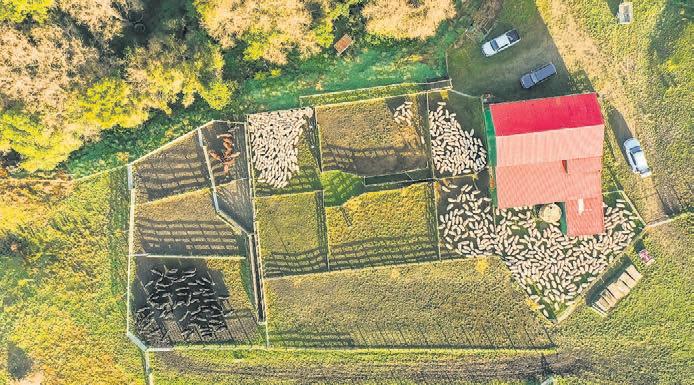
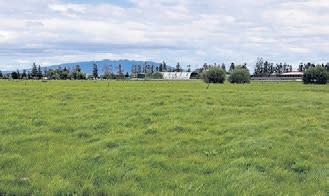
Frasertown, Wairoa 1720 Lake Road


For Sale $4,850,000 + GST (if any)
Rosevears
This is an immaculately presented 37.16 ha property with fantastic contour. The property stretches from fertile river flats to easy rolling hills with some medium hills. The property is currently part of a larger farming business, so it has a solid fertilser history and has been grazed well. It has been cropped, contoured and re grassed with quality Rye grass and Clover cultivars and is clean country with minimal weeds. The current owners fatten cattle and winter lambs, but the options could be endless. It could be used for planting maize and other crops. The property is well supported with its own spring water that is reticulated to troughs.
Tender
Starter package
• 251 ha of Wairoa hill country


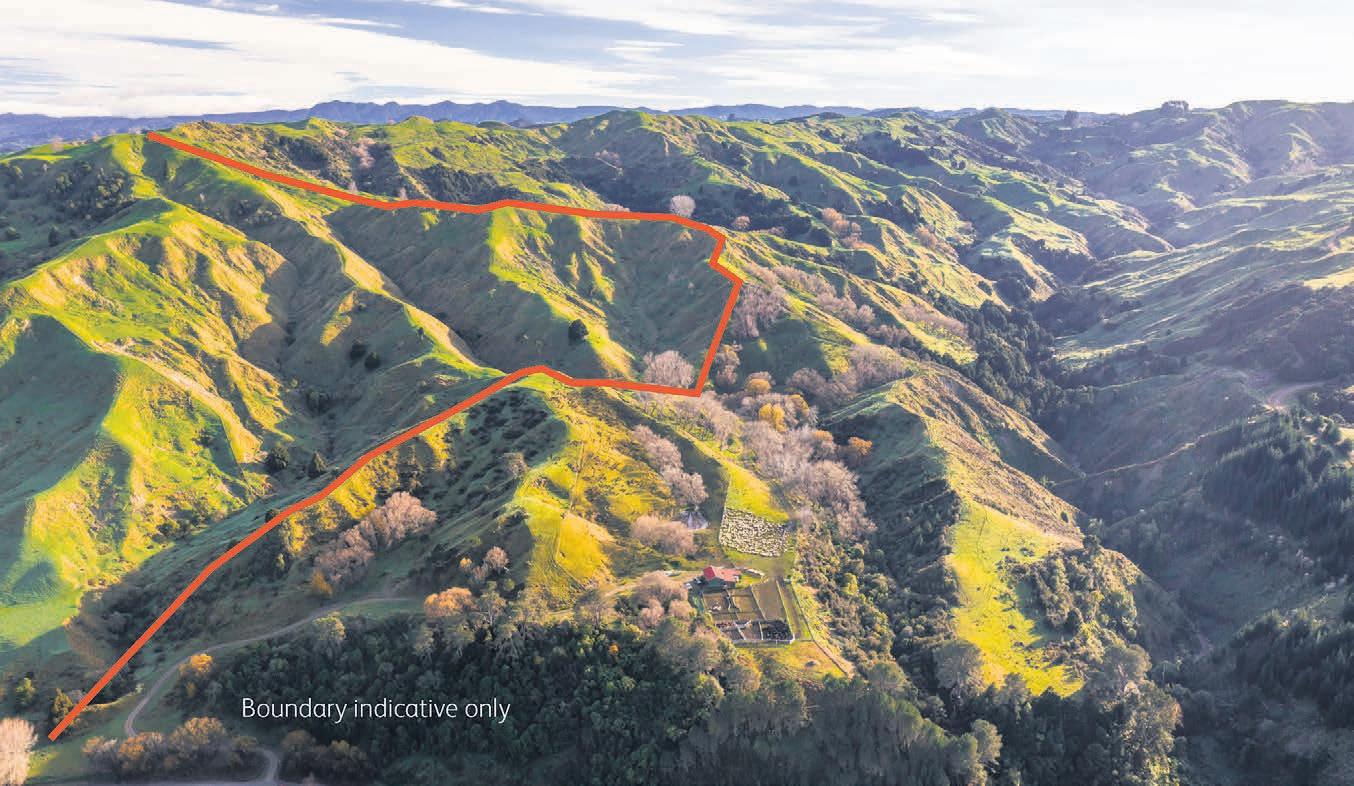


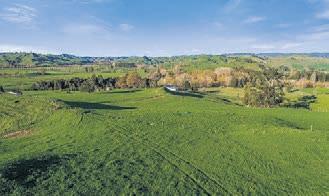


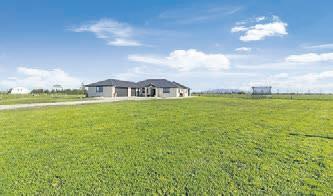

• Three stand raised board woolshed
• Sheep and cattle yards
• Two satellite sheep yards

• 13 main paddocks
• Great stock water
Located only 15 minutes out of Wairoa towards Lake Waikaremoana. This farm offers great opportunity into the world of farm ownership or would make a great addition to any farming operation.
Tender closes 4.00pm, Thu 27th Jul, 2023 (unless sold prior), 66 Reads Quay, Gisborne View By appointment Web pb.co.nz/GIR164610
Tom Lane M 027 866 5263 E toml@pb.co.nz
Fenton Wilson M 027 498 4483 E fenton.wilson@pb.co.nz

View By appointment Web pb.co.nz/CBR165137 John Sisley M 027 475 9808 David McGuire M 027 472 2572
Ohura 17 Waikaka Road
Auction
View
Web
Auction 11.00am, Thu 20th Jul, 2023, Property Brokers, 27 Hakiaha Street, Taumarunui
By appointment
pb.co.nz/TUR163636 Katie Walker M 027 757 7477
Property Brokers Ltd Licensed REAA 2008 | pb.co.nz Proud to be here 22 Property
Norfolk 656 Durham Road
143 ha Dairy farm


Our realistic vendors have instructed Property Brokers to offer for sale this 120 ha (effective) Taranaki dairy farm, well located in the strong farming area of Norfolk, Inglewood. With two titles, this summer safe property will appeal to those either looking to upscale to a slightly bigger operation or looking for their first farm. The contour is flat and the property is well subdivided with excellent laneways. The average production is around 110,000 kgMS from an approximate peak number of 270 cows. The infrastructure is of a good standard and includes three houses, multiple hay/calf sheds, workshop, fert bin, PK shed and a 36 ASHB with cup removers, chilled water system, feed pad and in-shed feed system. Water is sourced from both bore and river. If you are looking for medium sized, flat, well located Taranaki dairy farm, this property needs to be viewed.


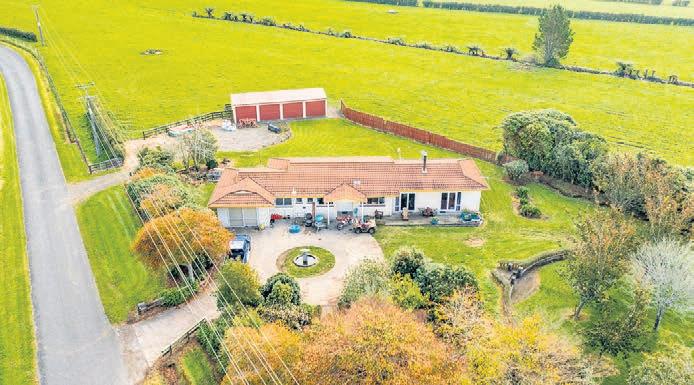
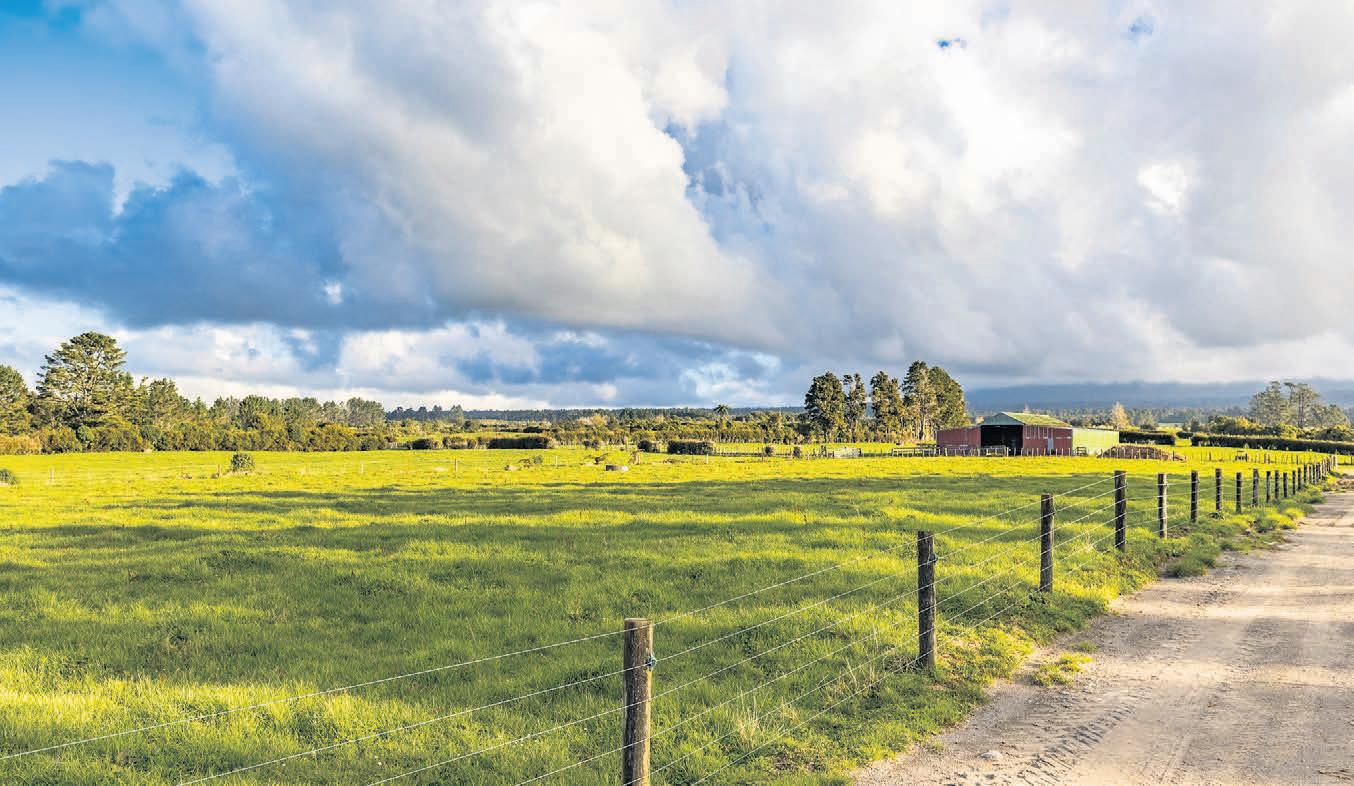
Together Stronger
strengths complement each other, creating

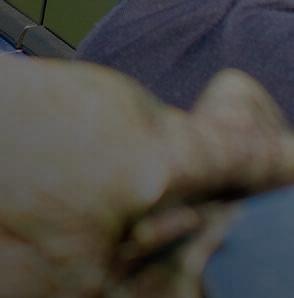









for









For Sale
GST
View By appointment Web pb.co.nz/NPR119656 Greg O'Byrne M 027 598 3000 E greg.obyrne@pb.co.nz
$5,850,000 +
(if any)
Property Brokers Ltd Licensed REAA 2008 PB062743
Bigger networks, more buyers, better results For more information call 0800 367 5263 or visit pb.co.nz/together Property Brokers Ltd Licensed REAA 2008 pb.co.nz Proud to be here 23
Our combined
more opportunity
our customers and Farmlands shareholders across provincial New Zealand. • A nationwide network from Northland to Southland • Sound, trustworthy advice from market-leading experts • Shareholder benefits and preferential commission rates means more money in your pocket
Ohakune 2541 Rangataua Road and Ratamaire Road
Four titles - farming, gardening or lifestyle
This extremely attractive, tidy and well-maintained farm on the Ohakune town boundary offers four titles, which can be purchased individually or together, providing options from dream lifestyle to farming and gardening.
• 120 hectares of flat and easy contoured Ohakune silt loam, includes a tidy and modern five-bedroom home, allweather farm track plus the full range of farm facilities suitable for gardening and sheep and beef finishing
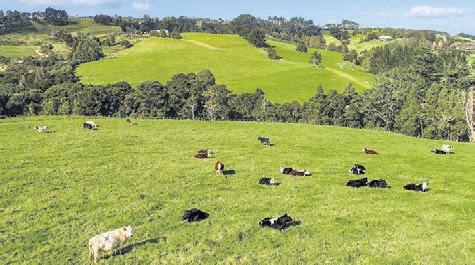



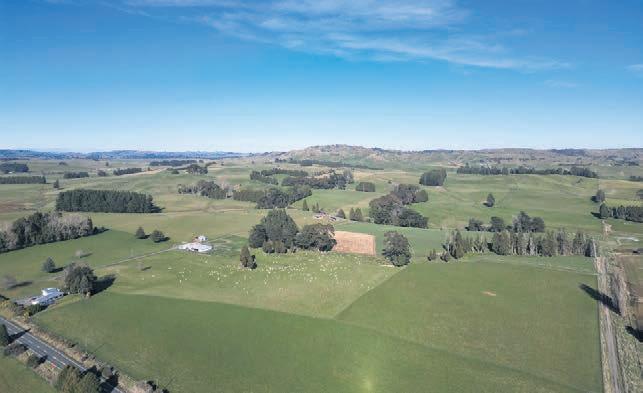
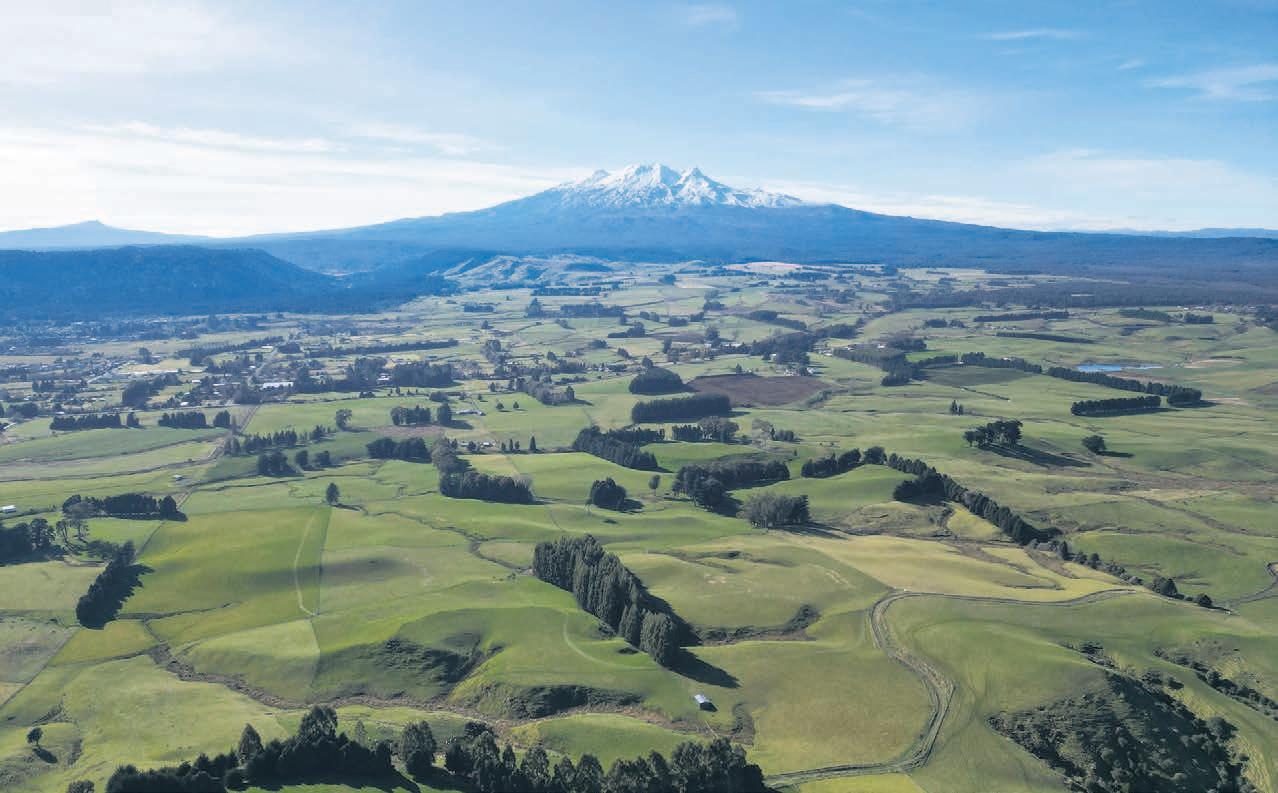
• 82.9 hectares of well-maintained bare land adjacent on Ratamaire Road, boasting superb house sites with stunning mountain views, a native bush backdrop and a balance of easy and medium hills
• The two titles on Rangataua Road, 4 hectares and 2.5 hectares respectively, each being flat, fertile and freedraining land which back onto the Mangateitei Stream allowing for enticing development potential bayleys.co.nz/2900608
209.7479ha
Tender (will not be sold prior)
Closing 2pm, Tue 25 Jul 2023
Bayleys, 16 Goldfinch Street, Ohakune View by appointment
Pete Stratton 027 484 7078 peter.stratton@bayleys.co.nz
BARTLEY REAL ESTATE LTD, BAYLEYS, LICENSED UNDER THE REA ACT 2008
Wellsford Oldfield Road
Welcome to the rock!
Welcome to "Te Toka" ('the rock'), a stunning 249-hectare grazing and lifestyle property. Its landmark rock headland stands tall, overlooking all. With breathtaking 360-degree views as far as the eye can see, from Hen and Chicken islands in the east to the Kaipara Harbour in the west. The farm has a flat to medium hill contour has been subdivided into 25 paddocks, featuring an airstrip, a large four-bay implement shed, and a rustic yet charming 'shepherd’s’ cottage'. Its native bush provides potential for onsite titles, TTR opportunities and ETS income streams, with plenty for the hunter with wild goats and pigs roaming the hills. Take a tour: vimeo.com/838453090 (turn on your sound) bayleys.co.nz/1203522
bayleys.co.nz
249ha
Tender (unless sold prior)
Closing 1pm, Fri 21 Jul 2023
41 Queen Street, Warkworth
View by appointment
John Barnett 021 790 393 john.barnett@bayleys.co.nz
MACKYS REAL ESTATE LTD, BAYLEYS, LICENSED UNDER THE REA ACT 2008
Helensville 419 and 429 Kiwitahi Road
Deceased estate
Step into a world of endless possibilities on this picturesque 90-hectare grazing farm with resource consent already secured for an additional two titles. Nestled amidst landscaped gardens, you'll find a charming three-bedroom family home that provides breathtaking vistas of the farm and the Kaipara Harbour beyond.
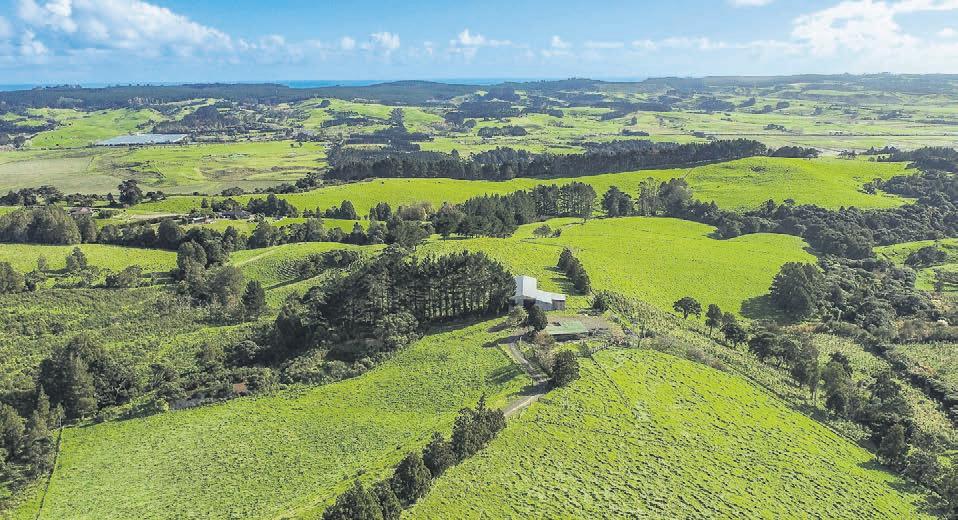

It continues to deliver with two lounges, kitchen and dining areas that seamlessly merge with the outdoor entertaining area. The former dairy farms gentle contour is well subdivided and connected by a central race network system, and spacious barn for storage or conversion into stables for horse enthusiasts.

Take a tour: vimeo.com/838453473 (turn on your sound) bayleys.co.nz/1203512
90.6566ha
Tender (unless sold prior)
Closing 12pm, Fri 21 Jul 2023
41 Queen Street, Warkworth
View by appointment
John Barnett 021 790 393 john.barnett@bayleys.co.nz
Jayne McCall 021 606 969 jayne.mccall@bayleys.co.nz
MACKYS
NEW LISTING
2008
LTD,
LICENSED
REA ACT 2008
REAL ESTATE LTD, BAYLEYS, LICENSED UNDER THE REA ACT
BAYLEYS REAL ESTATE
KUMEU,
UNDER THE
24
Grazing
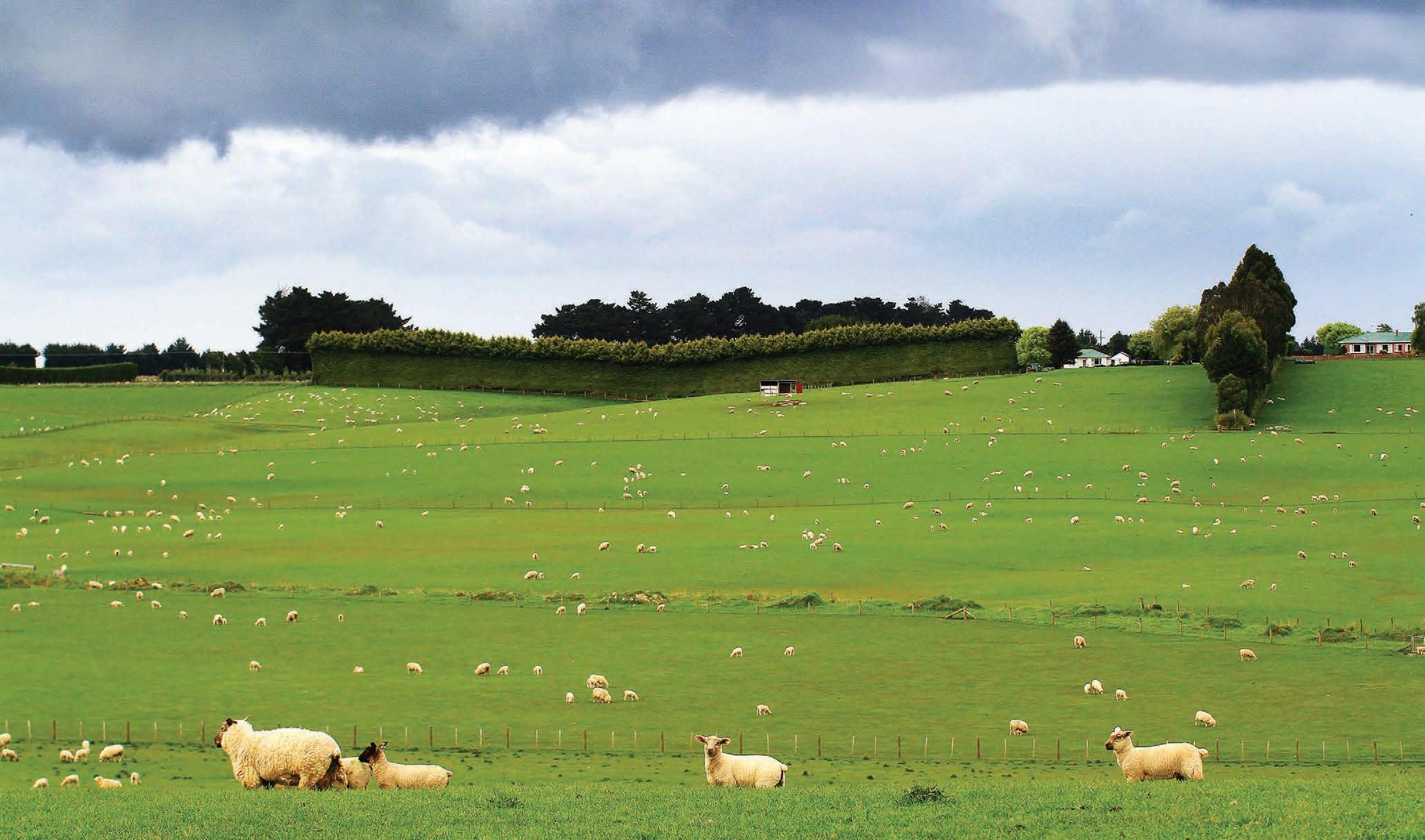
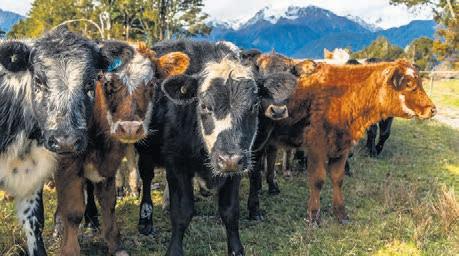


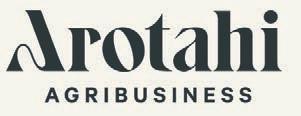
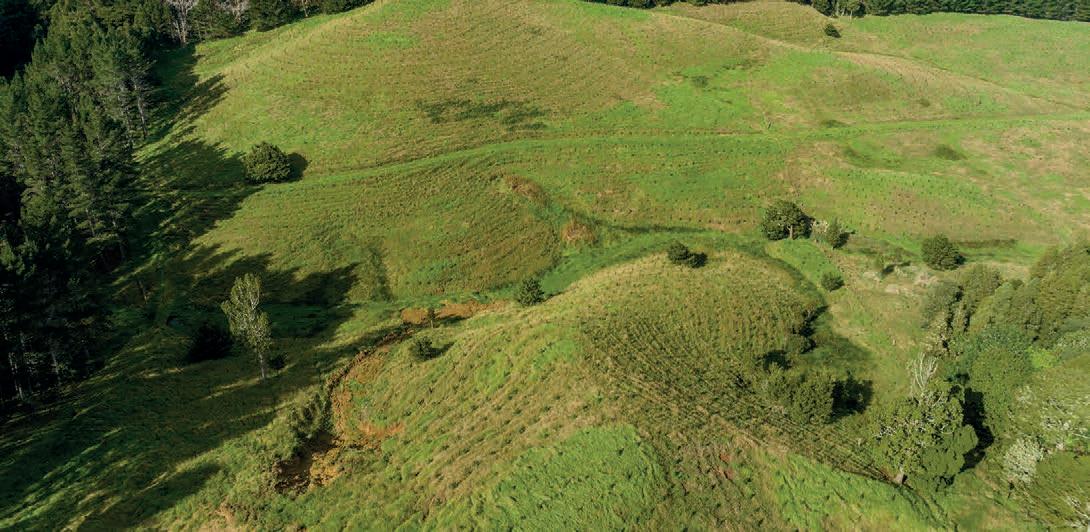
NEW LISTING
Josef 419 Waiho Flat Road 110.6644ha Deadline Sale (unless sold prior) 12pm, Fri 4 Aug 2023 3 Deans Avenue, Christchurch Phone for viewing times Ben Turner 027 530 1400 ben.turner@bayleys.co.nz Craig Blackburn 027 489 7225 craig.blackburn@bayleys.co.nz WHALAN AND PARTNERS LTD, BAYLEYS, LICENSED UNDER THE REA ACT 2008
Franz
property
Franz Josef Discover the unparalleled potential of this exceptional dairy grazing opportunity situated in the heart of Franz Josef! Approximately 110.6644 hectares (more or less) and surrounded by spectacular scenery, the property offers the perfect balance of privacy and convenience, located just a short distance from Franz Josef. This property offers significant potential for growth, currently fenced into approximately 28 paddocks. Under current management, the property has been running 190 heifers, 180 beef cattle and 20 sheep. Additionally, the current vendor undertakes wintering of approximately 180 dairy cows each year. bayleys.co.nz/5521421 25 Advertise with us Reach every farmer in New Zealand every week Call Grant 027 887 5568 FARMERS WEEKLY – farmersweekly.co.nz – July 3, 2023 Real Estate 25
in
are not committed to one buyer that is how we get our customers the most profit we can. Set up to do the smaller, trickier wood lots. No job too big or too small. Buyers of Woodlots and Forest.


ANIMAL HANDLING
FLY OR LICE problem?

Electrodip – the magic eye sheepjetter since 1989 with unique self adjusting sides. Incredible chemical and time savings with proven e ectiveness. Phone 07 573 8512 www.electrodip.com

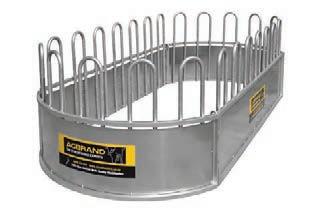
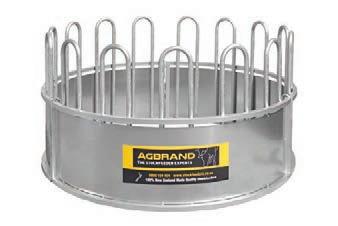
CRAIGCO SHEEP JETTERS. Sensor Jet. Deal to y and Lice now. Guaranteed performance. Unbeatable pricing. Phone 06 835 6863. www.craigcojetters.com
CONTRACTORS

GORSE AND THISTLE SPRAY. We also scrub cut. Four men with all gear in your area. Phone Dave 06 375 8032.
DOGS FOR SALE 30 DOGS UNDER 30
NORTHERN SHEEP SCANNING. Friendly and reliable service. Based in Northern Waikato, servicing surrounding areas and Northland. Phone Natalie 021 109 5884.

BALAGE FOR SALE
EXCELLENT QUALITY, $85 per bale plus GST. Unit loads available. HAY, 5ft rounds, shed stored. $105 per bale plus GST. Unit loads available. Phone 021 455 787.
FORESTRY
PROMOTES QUICK PASTURE growth. Only $6.50+gst per hectare delivered. 0508-GIBBGRO [0508 442 247] www. gibbgro.co.nz. “The Proven One.”

GIBB-GRO GROWTH PROMOTANT GIBBOOST





INCREASE PASTURE growth and dry matter. $5.50 per/ha ex store + GST. Phone 0508 733 343. www.vernado.co.nz


GOATS WANTED
FERAL GOATS WANTED. Pick-up within 24 hours.
Prices based on works schedule. Phone Bill and Vicky Le Feuvre 07 893 8916 / 027 363 2932.



GOATS WANTED. All weights. All breeds. Prompt service. Payment on pick up. My on farm prices will not be beaten. Phone David Hutchings 07 895 8845 or 0274 519 249. Feral goats mustered on a 50/50 share basis.
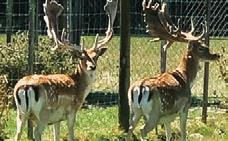

GOATS. 40 YEARS experience mustering feral cattle and feral goats anywhere in NZ. 50% owner (no costs). 50% musterer (all costs). Phone Kerry Coulter 027 494 4194.
GRAZING
AVAILABLE HOGGETS. CATTLE. Location Bulls, Rangitikeifrom Mid Aug. Text 021 224 2119, testimonials available.
HORTICULTURE
NZ KELP. FRESH, wild ocean harvested giant kelp. The world’s richest source of natural iodine. Dried and milled for use in agriculture and horticulture. Growth promotant / stock health food. As seen on Country Calendar. Orders to: 03 322 6115 or info@nzkelp.co.nz
LEASE LAND WANTED



DAIRY OR GRAZING FARM wanted. Open to leasing and/or share farming and developing land in partnership. Rangitīkei, Manawatū or HB areas. Phone Michael 027 223 6156.

LIVESTOCK FOR SALE
RED DEVON BULLS. Well grown, purebred. Feilding. Phone 027 224 3838.
PUMPS
HIGH PRESSURE WATER PUMPS, suitable on high headlifts. Low energy usage for single/3-phase motors, waterwheel and turbine drives. Low maintenance costs and easy to service. Enquiries phone 04 526 4415, email sales@hydra-cell.co.nz
WILTSHIRES-ARVIDSON.
• 1 x 6 foot bale • 2m diameter • 15 feed positions • 15 - 30 animals $1100 Under Woolshed/Covered Yards Cleaning Specialist www.underthewoolshed.kiwi SCOTTY’S CONTRACTORS NOW WORKING IN WHANGANUI / RANGITĪKEI AREAS ✁ Contact Scotty to discuss all that needs to be done Ph 0800 27 26 88 • Mobile 027 26 26 27 2 • scottnewman101@gmail.com ✁ LK0115982© New Zealand’s Number 1 service provider since 2004 We dig out and remetal cattle yards & calf sheds. Also specialising in flood damage silt removal BRIDGE & STRUCTURE MAINTENANCE Farm bridges and structures showing signs of age? Don't let these valuable assets deteriorate any further ! ben@waterhousecc.co.nz 027 559 7168 Providing affordable repair & maintenance solutions for your expensive assets Waterhouse Complex Civil are specialists in repairing & maintaining bridges, stock underpasses, culverts, & waterway remediation. Farmers/Woodlot owner Tired of waiting for someone to
your trees? We
Free quotes • Markets for all species Email: BTZforestry@gmail.com BTZ Forestry Marketing and Harvesting (Obtaining the best profits for our customers) LK0113900© 26 Marketplace FARMERS WEEKLY – farmersweekly.co.nz – July 3, 2023 Marketplace 26 DOLOMITE For a delivered price call .... NZ’s finest BioGro certified Mg fertiliser 0800 436 566 ATTENTION FARMERS CHILLERS & FREEZERS SEE TradeME #2251190054 Ph JC: 021 441 180 E: frigidair@xtra.co.nz When only the best will do! Fix your dairy floor Waterbased epoxy screed for eroded concrete floors. EPOTREAD SL250 REGIS COATINGS phone 0800 542 542 RegisCoatings.co.nz CONCRETE FLOOR REPAIR electro-tek@xtra.co.nz Phone: 06 357 2454 ELECTRO-TEK ENGINEERING Re-sharpening available for all makes USB battery required. www.quantumfarmsolutions.store Heated Vest $99 including GST and shipping FOR SALE 40 years breeding. Manawatū area. Phone 021 886 065 Trophy Genetics FALLOW DOE DISPERSAL SALE
harvest
monthly.
videos
315 5553.
NATIVE FOREST FOR MILLING also Macrocarpa and Red Gum New Zealand wide. We can arrange permits and plans. Also after milled timber to purchase. NEW ZEALAND NATIVE TIMBER SUPPLIERS (WGTN) LIMITED 027 688 2954 Richard.
hundred. Deliver NZ wide twice
www.youtube.com/user/ mikehughesworkingdog/
07
WANTED
Self shearing sheep. No1 for Facial Eczema. David 027 2771 556. RAMS FOR SALE RURAL MASSAGE WANTED TO BUY RELAXING FULL BODY massage in rural Ohaupo. Unwind. De-stress. www. ruralmassage.co.nz or call 027 529 5540. HOUSES AND SHEDS for removal. Phone 021 455 787. FOR ONLY $2.30 + gst per word you can book a word only ad in Farmers Weekly Classi eds. Phone 0800 85 25 80. FOR ONLY $2.30 + gst per word you can book a word only ad in Farmers Weekly Classi eds. Phone 0800 85 25 80. BOOK AN AD. For only $2.30 + gst per word you can book a word only ad in Farmers Weekly Classi eds section. Phone 0800 85 25 80 to book in or email wordads@agrihq.co.nz WORD ONLY ADVERTISING. Phone 0800 85 25 80. Find primary sector vacancies at: farmersweeklyjobs.co.nz To advertise phone Debbie 06 323 0765
Livestock
SALE TALK
It has been a long week in the greengrocers but it nally gets to Friday night and three best mates –Lemon, Potato and Pea – decide to have a couple of beers after work and, as so often happens, they’re soon on a full on pub crawl.
They have a great night, hitting pub after pub, knocking back drinks, doing shots and all that but being so genetically di erent, the alcohol a ects them each in di erent ways.
Lemon got very acidic and re uxy; Potato, being a big starchy chap, took the booze in his stride; while little Pea reacted to all the sugar and started to get a bit hyper.
At the end of the night, the three friends found themselves leaving a bar at the top of a tall hill – Pea started bouncing up and down excitedly: “Lads! Lads,” he yells, “I’ve got a great idea! We’re all vaguely round in shape, let’s not get a cab home, let’s just roll down the hill!”. Before the others could protest he was o –shooting down the hill at a rate of knots.
Lemon lurched after him, but due to his shape he’s rolling violently from side to side as he went, which did nothing for his unsettled stomach.
Potato has a few more lumps and bumps, and so he’s much slower trundling down behind the other two. By the time poor Potato bounces his way to the bottom of the hill, Lemon is laying there- spewing lemon juice all over the pavement, but Pea is still full on – already jumping up and down, telling the others.
“Come on lads that was great, that was great, lets do it again!”
Lemon wants none of it – more lime coloured than lemon now but Pea doesn’t care. “Come on! Let’s go again, that was great!”
Potato wearily turns to him and says, “Easy peasy, Lemon’s queasy.”
Here at Farmers Weekly we get some pretty funny contributions to our Sale Talk joke from you avid readers, and we’re keen to hear more! If you’ve got a joke you want to share with the farming community (it must be something you’d share with your grandmother...) then email us at: saletalk@agrihq.co.nz with Sale Talk in the subject line and we’ll print it and credit it to you.
Conditions apply
STOCK REQUIRED
R1YR
R2YR ANG BULLS 450kg
R2YR ANG & AX STEERS 450-480kg

2YR BEEF HEIFERS 350-400kg

E info@rdlfinance.co.nz
Upcoming Auctions

Do you have bull sale results to share? The end of the autumn sale season will soon be here ... 027 602 4925, livestock@agrihq.co.nz Contact Andrea to have your results published in our bull sales e-newsletter and the Farmers Weekly end of season review. Deadline Monday July 10th Subscribe today: agrihq.co.nz/bull-sale-results LK0116001© Helping grow the country Key: Dairy Cattle Sheep Other MATAWHERO CATTLE SALE, GISBORNE NZ’s Virtual Saleyard bidr.co.nz TUESDAY, 11th JULY 2023 | 11am Offering approx 725 cattle comprising: Capital Stock with more entries to follow • 60 R3yr Hfrs VIC 15/11 Angus 20 R3yr Hfrs VIC 10/11 Angus 135 MA Cows VIC 15/12 Angus 110 MA Cows VIC 10/12 Angus • 60 MA Cows VIC 8/12 Angus • 80 8yr Cows VIC 15/11 Angus • 50 2yr Heifers • 70 1yr Heifers • 70 1yr Steers • 70 1yr Bulls Grand opportunity to purchase exceptional well-bred lines of hill country station bred Cattle. Jamie Hayward 027 434 7586 Chris Hurlstone 027 598 6542 www.agonline.co.nz
TUESDAY, 4 JULY: 12pm: Whangara Angus Bull Sale 1pm:
Melior Hind Sale 3.30pm: Turihaua Angus Bull Sale
2pm:
Sale
WEDNESDAY, 5 JULY: 10.30am: Kenhardt Angus Bull Sale
Turiroa Angus Bull
Crowley
Combined Hind Sale Regular livestream coverage from ten saleyards nationally. NZ’s Virtual Saleyard bidr.co.nz TE KUITI EWE FAIR 7th July 2023 AG & CS DONALDSON Kirikau, Taumarunui 700 x Shn 4/6th Romney Ewes SIL P/Dor Suff 20/3 - 29/4 174% 1100 x Shn 4/5Yr Romney Ewes SIL Eczema Tol. Hinenui Romney Ram 20/3 - 29/4 175% Capital Stock Hill Country Ewes Farm Sold Contact: Alan Hiscox 0274 428 434 SPECIAL ENTRY LK0115981© www.dyerlivestock.co.nz Ross Dyer 0274 333 381
THURSDAY, 6 JULY: 7pm: Tower Farms &
Deer
FRSN BULLS
400-480kg R2YR FRSN
180-220kg
BULLS
27 Livestock FARMERS WEEKLY – farmersweekly.co.nz – July 3, 2023
A Financing Solution For Your Farm
27
When a Speckle Park is not a Speckle Park
 Suz Bremner MARKETS
Suz Bremner MARKETS
Livestock

QUESTION: When is a Speckle Park not a Speckle Park?

Answer: When it is a Speckle Park-cross.






All too often at saleyards around the country they are referred to simply as Speckle Park, but that is like calling a Hereford-Friesian a Hereford, or an Angus-Friesian an Angus, which we all know are very different animals despite some breed similarities.
The Speckle Park breed originates in Canada and is a cross of Shorthorn, White Park and Angus. Unlike many purebred breeds, one Speckle Park can look very different to another and they tend to stamp their offspring that way. They vary from a white Speckle Park which is mostly white with black points to others that look like black cattle that have weathered a snowstorm. Some can even have red through them, if the sire bull carries the red factor gene. Most of the Speckle Park-cross are farmed for their growth ability, marbling and good temperament, but it does depend what they are crossed with, as purebred Speckle Parks are not often seen at the yards. And therein lies the confusion
for many – what is actually coming into the saleyards? One person who is well-placed to answer that question is Mark
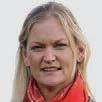
McKenzie from Maungahina Stud in Masterton, the original birthplace of New Zealand’s Speckle Park cattle and one of the largest Speckle Park studs in the country.

Maungahina Stud was established in 1907 by Donald
McKenzie, and four generations later the stud now breeds Hereford and Speckle Park. The Speckle Park breeding programme started in 2008 with 120 imported embryos and semen from Canada and at present 120 cows are calved to purebred Speckle Park bulls.
Last year, well over 50,000 straws of Speckle Park semen went into the dairy industry and Mark McKenzie says that is where most of the offspring are coming from that are filtering into the saleyards.
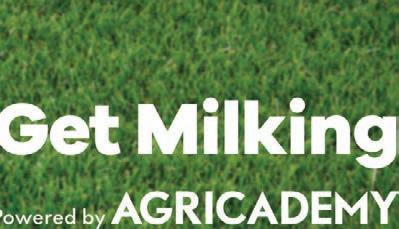
“It is very rare to get purebred Speckle Park cattle at the saleyards, unless they are ex-sire bulls. It is frustrating – they’re calling the crosses Speckle Park, when in fact they are a first or second cross and they are very different to a purebred Speckle Park.
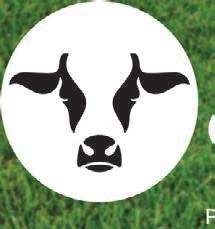
“When 50% of the genetics are coming from a dairy cow you are obviously not going to get the muscle pattern of a straight Speckle Park, which are known for high marbling and yield.”
McKenzie has been on the Speckle Park International Board for 10 years and says it is time to put people straight on what is being offered, especially as the breed has grown in popularity.
“It’s time we got the point across that what is coming into the yards are mostly first or second cross dairy and it’s up to the vendors to state what they are for sellers. White Speckle Parks will colour mark over any breed, so for example if they are crossed with a Jersey, they can have the colouring of a Speckle Park but the growth rates and frame of a Jersey. The Speckles get the blame
SHADES OF GREY: Speckle Park stud bulls and their offspring can be a variety of colour patterns from white with black points to leopardcoloured or black with speckled hips and back.



because they haven’t grown out, but it is because they are out of a Jersey.”


A Speckle Park-cross does stand on its own merits and will often carry through the traits of the bulls, but buyers do need to take into consideration what they are crossed with and how that breed grows out, just as they would for any beef-dairy crosses.


“Speckle Park-Friesian are a fantastic cross that marble very well and are sought after by various butchers and restaurants,” McKenzie says.
Differentiating between a dairy and a beef-cross Speckle Park is another layer of the onion to peel back, and really comes down to muscle definition and characteristics, much like the difference between a straight Hereford and a Hereford-Dairy.

just Calving & Calf Rearing training No Sweat! Newonline training agricademy.co.nz Calving $95 Calf Rearing $95 Combo $145 28 Markets
Markets
Proudly sponsored by
Having a speckled coat is no guarantee that the cattlebeast is a fast-growing, well-marbled, sweet-tempered Speckle Park.
Photo: Maungahina Stud
It is very rare to get purebred Speckle Park cattle at the saleyards, unless they are ex-sire bulls. It is frustrating.
Mark McKenzie Maungahina Stud, Masterton
Weekly saleyards
North Island store lamb values continued to head south over the past week and recent results at Stortford Lodge for a small yarding of 2800-head were down a further $10 per head. Male lambs averaged $114 and ewe lambs, $93.50. Ewe lamb values have been steadily decreasing since the end of May, though they have potentially reached a floor as extra buyers are coming into the market at the lower levels. The Feilding market on Friday, June 23 also came back $8 per head on average.
21
Wellsford | June 26 | 487 cattle $/kg or $/hd Mixed-age beef, dairy-beef cows, VIC & RWB, 527-646kg 1.89-1.91 R3 dairy-beef steers, 491-573kg 2.88-2.97 R2 traditional steers, 430-488kg 2.70-2.81 R2 Hereford-Friesian steers, 381-492kg 2.80-2.89 R2 Angus bulls, 268-347kg 3.00-3.17 R2 Hereford-Friesian heifers, 370-444kg 2.54-2.73 R1 Hereford-Friesian steers, 211-236kg 3.36-3.37 R1 Hereford-Friesian heifers, 150-230kg 500-615 Aut-born weaner beef-cross, dairy-beef steers, 111-207kg 400-540 Aut-born weaner heifers, 119-130kg 325-345 Pukekohe | June 24 $/kg or $/hd Store steers 2.78-2.90 Store heifers 2.45-2.70 R1 steers 442-690 R1 heifers 435-550 Prime steers 2.94-3.00 Prime bulls 2.50-2.80 Prime heifers 2.90-2.92 Boner cows 1.61-2.23 Store ewes 137-152 Store ram hoggets 80-154 Store lambs 68-110 Tuakau | June 22 | 520 cattle $/kg or $/hd R3 dairy-beef steers, 524-600kg 2.95-3.02 R2 Hereford-Friesian steers, 460-500kg 2.88-3.01 R2 Angus steers, 390-440kg 3.09-3.29 R2 dairy-beef heifers, 380-430kg 2.77-2.90 R1 dairy-beef steers, 175-265kg 680-800 R1 dairy-beef heifers, 273-311kg 690-765 Rangiuru | June 27 | 347 cattle, 127 sheep $/kg or $/hd R3 dairy-beef heifers, 411-455kg 2.75-2.87 R2 Angus steers, 414-448kg 2.88-2.96 R2 Hereford-Friesian steers, 397-402kg 2.96-3.05 R2 dairy-beef heifers, 355-383kg 2.50-2.72 Prime beef, dairy-beef steers, 690-696kg 3.12-3.33 Boner Friesian, Friesian-cross cows, 423-577kg 1.99-2.11 Mixed-age ewes, RWR Coopworth, Suffolk 134 Prime lambs, all 114-133 Frankton | June 27 | 519 cattle $/kg or $/hd R2 Angus-cross, dairy-beef steers, 401-464kg 3.12-3.26 R2 dairy-beef steers, 470-517kg 2.94-3.02 R2 dairy-beef heifers, 383-455kg 2.84-2.92 Aut-born yearling Hereford-Friesian steers, 299-344kg 2.98-3.11 R1 beef, dairy-beef steers, 146-299kg 670-950 R1 traditional heifers, 226-245kg 680-710 R1 beef-cross heifers, 137-210kg 450-600 Aut-born weaner Friesian, Hereford-dairy bulls, 102-109kg 505-520 Prime Jersey, Jersey-cross bulls, 453-543kg 2.78-2.99 Prime Hereford-Friesian heifers, 505-571kg 2.87-2.90 Boner Friesian, Friesian-cross cows, 455-596kg 2.11-2.24 Frankton | June 28 | 678 cattle $/kg or $/hd Mixed-age Murray Grey cows, in-calf, 412-648kg 1140-1540 R3 Murray Grey-Friesian heifers, 422-494kg 2.55-2.77 R2 dairy-beef steers, 412-480kg 2.98-3.15 R2 dairy-beef heifers, 348-448kg 2.61-2.76 R2 Speckle Park-Friesian heifers, 412-442kg 2.77-2.87 R1 Angus steers, 204-221kg 670-740 R1 Murray Grey heifers, 165-206kg 560-690 R1 Friesian bulls, 162-229kg 570-700 Aut-born weaner Friesian bulls, 101-107kg 580-630 Prime steers, 535-640kg 3.01-3.08 Prime heifers, 440-523kg 2.80-3.00 Boner Friesian cows, 497-527kg 2.00-2.13 Boner Friesian-cross cows, 417-458kg 1.78-1.97 Te Kuiti | June 23 | 225 cattle $/kg or $/hd Mixed-age beef cows, 487-647kg 2.20-2.40 Mixed-age dairy-beef cows, 382-603kg 2.01-2.15 3-year plus Angus bulls, 780-950kg 2160-2320 R2 beef, dairy-beef steers, 417-447kg 1200-1460 R2 beef, dairy-beef heifers, 383-443kg 2.83-2.95 R1 traditional steers, 274-370kg 1020-1140 R1 beef bulls, 210-325kg 700-1040 R1 Hereford heifers, 254-362kg 740-970 Taranaki | June 28 | 239 cattle $/kg or $/hd Mixed-age dairy-beef cows, 501-585kg 2.14-2.22 R2 dairy-beef steers, 350-463kg 1050-1380 R2 exotic-cross, dairy-beef heifers, 362-463kg 2.61-2.87 R1 beef, dairy-beef steers, 172-283kg 550-890 R1 bulls, 211-335kg 650-835 R1 beef, dairy-beef heifers, 180-285kg 590-940 Prime dairy-beef steers, 613-615kg 3.03-3.06 Prime heifers,
2.81-2.87
Lodge
$/kg or $/hd Prime 2-tooth ewes, light-medium to heavy 93-127 Prime ewes, heavy 131-133 Prime ewes, good to very good 111-126 Prime ewes, light-medium to medium 85-104 Prime ewes, light 52-60 Prime lambs, heavy 160-169 Prime lambs, good to very good 125-146 FARMERS WEEKLY – farmersweekly.co.nz – July 3, 2023 Markets 29
442-572kg
Stortford
| June 26 | 782 sheep
Feilding | June 26 | 336 cattle, 3119 sheep
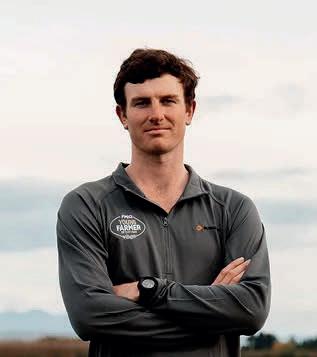

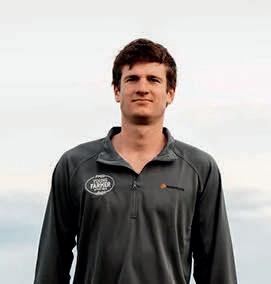
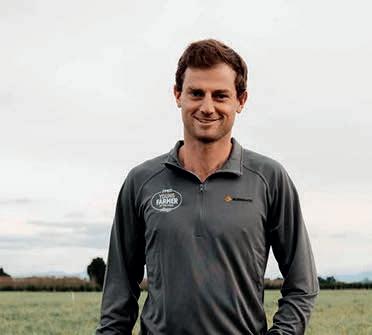


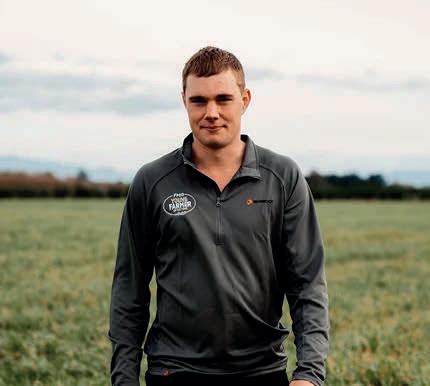
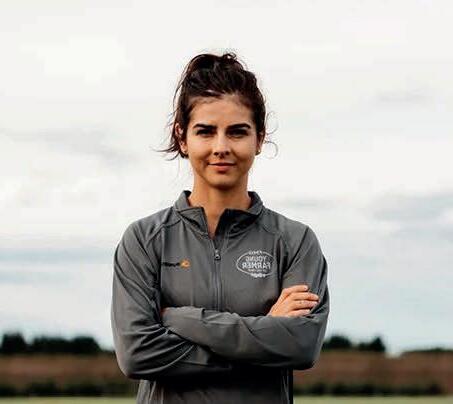

Take 5 with Farmers Weekly Proudly supported by 30 FARMERS WEEKLY – farmersweekly.co.nz – July 3, 2023 Markets 30 Stortford Lodge | June 28 | 239 cattle, 4092 sheep $/kg or $/hd R8, R9 Hereford cows, in-calf Hereford 10/12, 552-598kg 1320-1390 R2, R3 Angus & Angus-Hereford steers, 583-711kg 3.12-3.14 R2 Angus heifers, 368-405kg 2.96-3.05 R1 Angus-Hereford heifers, 188-213kg 725-750 Mixed-age Perendale ewes, SIL Poll Dorset, Suffolk 12/03 147% 128 5-6-year Romney ewes, RWR Romdale 12/03 80-123 4-tooth Romdale ewes, SIL Poll Dorset 10/02 157% 168.50-175 2-tooth Romney ewes, SIL Romney, Poll Dorset 147%-157% 150 Store ram, cryptorchid lambs, heavy 112-129.50 Store male lambs, good 110-120 Store ewe lambs, good to heavy 85-113 Store ewe lambs, medium 84-103 Dannevirke | June 22 | 660 sheep $/kg or $/hd Store cryptorchid lambs 100-129 Store ewe lambs 40-116 Store mixed-sex lambs 40-133 Prime ewes, all 100-140 Prime lambs, all 135-175 Feilding | June 23 | 837 cattle, 10,314 sheep $/kg or $/hd Mixed-age Hereford cows, VIC Hereford 11/11, one line, 499kg 1150 R3 traditional steers, 694-717kg 3.17-3.21 R2 Angus steers, 367-470kg 3.28-3.35 R2 traditional heifers, VIC Angus 10/12, 343-394kg 930-1210 R2 traditional heifers, 323-447kg 3.05-3.26 R2 exotic heifers, 403-462kg 3.09-3.15 R1 beef steers, 224-322kg 865-960 R1 Angus heifers, 156-212kg 590-650 Mixed-age Romney ewes, SIL Terminal 01/03 165%-214% 155-161 5-year Romney ewes, SIL Suffolk 01/03 177%-180% 135-156 Store male lambs, heavy 135-147 Store whiteface male lambs, woolly, good 115-133 Store whiteface ewe lambs, woolly, good 91-111 Store ewe lambs, woolly, medium 86-100 Store whiteface ewe lambs, shorn, medium 115
$/kg
$/hd Prime Angus & Angus-Hereford cows, 600-820kg 2.30-2.36 Prime Angus cows, 524-549kg 2.13-2.21 Prime dairy-beef steers, 610-690kg 3.12-3.18 Prime beef-cross heifers, 668kg 3.15 Boner Friesian cows, 574-618kg 1.97-2.07 Boner Friesian cows, 523-547kg 2.04-2.12 Boner Friesian cows, 448-519kg 1.93-1.99 Prime ewes, good 99-130 Prime male lambs, very heavy 166-179 Prime male lambs, heavy 141-165 Prime ewe lambs, heavy to very heavy 140-158 Prime mixed-sex lambs, very heavy 166-184 Prime mixed-sex lambs, heavy 156-161 Rongotea
June 27 | 74 cattle $/kg or $/hd R2 Hereford-Friesian steers, 370-358kg 2.87-2.92 R2 Hereford-Friesian heifers, 395-463kg 2.51-2.79 R2 exotic-cross heifers, 367-440kg 2.66-2.92 R1 dairy-beef steers, 170-257kg 550-850 R1 Hereford-Friesian heifers, 138kg 550 R1 exotic heifers, 215-260kg 500-730 Coalgate | June 22 | 191 cattle, 2039 sheep $/kg or $/hd R2 dairy-beef steers, 383-445kg 2.79-2.90 R2 Hereford bulls, 555-627kg 3.03-3.10 R2 dairy-beef heifers, 362-368kg 920-980 Prime beef, dairy-beef cows, 595-640kg 2.30-2.33 Prime traditional steers, 457-640kg 3.00-3.18 Prime dairy-beef heifers, 454-498kg 2.85-3.00 Mixed-age whiteface ewes, RWR 150-172 Store Corriedale male lambs, woolly, good 128-145 Store Corriedale ewe lambs, woolly, good 124-141 Store whiteface lambs, shorn, good to heavy 133-150 Prime ewes, medium-good 121-140 Prime lambs, most 152-191
or
|
Hear from farming’s future.
Hear from farming’s future.
On the latest Take 5 with Farmers Weekly podcasts we asked the seven FMG Young Farmer of the Year Grand Finalists for their opinion on how to overcome farming’s biggest challenges.
On the latest Take 5 with Farmers Weekly podcasts we asked the seven FMG Young Farmer of the Year Grand Finalists for their opinion on how to overcome farming’s biggest challenges.



Listen now
Listen now 31
FARMERS WEEKLY – farmersweekly.co.nz – July 3, 2023 Markets 31 Canterbury Park | June 27 | 314 cattle, 2611 sheep $/kg or $/hd R2 beef heifers, 305-384kg 2.85-2.95 R1 traditional steers, 212-254kg 4.02-4.17 R1 traditional heifers, 200-257kg 2.96-3.07 Prime beef steers, 550-686kg 2.97-3.28 Prime traditional bulls, 965-1080 2.20 Prime beef heifers, 485-760kg 2.91-3.15 Hogget whiteface ewes, SIL Romney due 31/08, good 151 Store whiteface mixed-sex lambs, medium-good 101-128 Store Halfbred wether lambs, light-medium 81-83 Prime ewes, medium-good 99-120 Prime lambs, good 135-157 Temuka | June 26 | 421 cattle, 3012 sheep $/kg or $/hd Prime Angus cows, 531-723kg 2.22-2.42 Prime Hereford-Friesian steers, 451-598kg 2.95-3.13 Prime Angus heifers, 452-553kg 2.97-3.10 Boner Friesian cows, 556-610kg 2.06-2.18 Mixed-age blackface ewes, SIL, all 166 Store Halfbred mixed-sex lambs, all 85-103 Store male lambs, medium-good 124-138 Store mixed-sex lambs, medium-good 93-108 Prime ewes, most 100-137 Prime mixed-sex lambs, most 120-158 Balclutha | June 28 | 1110 sheep $/kg or $/hd Store lambs, all 30-121 Prime ewes, all 40-142 Prime lambs, all 132-192 Charlton | June 22 | 363 sheep $/kg or $/hd Store lambs, all 65-130 Prime ewes, all 90-148 Prime lambs, all 125-186 Lorneville | June 27 | 208 cattle, 811 sheep $/kg or $/hd Store steers, 121-250kg 2.85-3.21 Store steers, 251-400kg 1.86-2.62 Store bulls, 151-350kg 2.32-2.88 Store heifers, 151-350kg 2.26-2.79 Store lambs, all 55-117 Prime ewes, all 65-156 Prime lambs, all 130-198 Breeding Ewe Fair | June 22 Te Kuiti | June 22 | approximately 7400 sheep $/kg or $/hd 5-year ewes 151-169 6-tooth ewes, one line 185 4-year ewes, one line 170 4-tooth ewes 150-202 2-tooth ewes 140-190
IN FROM THE COLD: Speckle Park dairy cattle are a popular choice for buyers. Most that are yarded look like black cattle that have weathered a snow storm.
Cattle Sheep Deer
NOTE: Slaughter values are weighted average gross operating prices including premiums but excluding breed premiums for cattle.



Fertiliser Forestry

Farmers Weekly fits perfectly in your pocket – save it to your Stay in touch with LK0115992© 32 FARMERS WEEKLY – farmersweekly.co.nz – July 3, 2023 Markets 32
trends Sheep Meat Slaughter price (NZ$/kgCW) Last week Last year North Island lamb (18kg) 7.55 8.90 North Island mutton (25kg) 4.15 6.05 South Island lamb (18kg) 7.60 8.95 South Island mutton (25kg) 4.25 6.00 Export markets (NZ$/kg) China lamb aps 9.42 13.58 Wool (NZ$/kg clean) 15-Jun Last year Crossbred eece 3.15 2.80 Crossbred second shear 2.72 2.49 Courtesy of www.fusca.co.nz Beef Slaughter price (NZ$/kgCW) Last week Last year North Island P2 steer (300kg) 6.00 6.10 North Island M2 bull (300kg) 5.90 6.05 North Island M cow (200kg) 4.00 3.90 South Island P2 steer (300kg) 5.75 6.00 South Island M2 bull (300kg) 5.55 5.90 South Island M cow (200kg) 4.15 4.00 Export markets (NZ$/kg) US imported 95CL bull 9.13 9.72 US domestic 90CL cow 10.42 9.85 Venison Slaughter price (NZ$/kgCW) Last week Last year North Island AP stag (60kg) 8.85 8.05 South Island AP stag (60kg) 8.85 8.05 Fertiliser NZ average (NZ$/tonne) Last week Last year DAP 1297 1794 Super 447 495 Urea 885 1340 Urea (Coated) 934Exports NZ Log Exports (tonnes) May Last year China 1,891,280 1,656,760 Rest of world 160,935 190,116 Carbon price (NZ$/tonne) Last week Last year NZU 42.5 76.0
AgriHQ market
Steer slaughter price ($/kgCW) Lamb slaughter price ($/kgCW) NZ lamb average export value (NZ$/kg) Stag Slaughter price ($/kgCW) NZ beef average export value (NZ$/kg) Data provided by
5.0 5.5 6.0 6.5 7.0 Jun Aug Oct Dec Feb Apr North Island South Island 6.0 7.0 8.0 9.0 10.0 Jun Aug Oct Dec Feb Apr North Island South Island 7.5 8.0 8.5 9.0 9.5 Jun Aug Oct Dec Feb Apr North Island South Island 6.0 7.0 8.0 9.0 10.0 11.0 Dec Feb Apr Jun Aug Oct 5-yr ave Last year This year 8.0 9.0 10.0 11.0 12.0 13.0 14.0 Dec Feb Apr Jun Aug Oct 5-yr ave Last year This year
NZX market trends
Dairy
price futures ($/kgMS)
provided by
Grain
feed wheat ($/tonne)
Close of market
Listed Agri shares
Canterbury feed barley ($/tonne)
WMP futures - vs four weeks ago (US$/tonne)
Waikato palm kernel ($/tonne)
one touch
iPhone or iPad
• Open Safari. Other browsers, such as Chrome, won’t work for this.
• Navigate to farmersweekly.co.nz. Tap “Go.”

• Tap the Share button on the bottom of the page. It looks like a square with an arrow pointing out of the top.
• In the list of options that appear, scroll down until you see Add to Home Screen. Tap this. The Add to Home Screen dialog box will appear.
• Choose a name for the website shortcut. You’ll see the link so you can confirm it. Click Add when you’re done.
Android
• Open your web browser eg Chrome.
• Navigate to farmersweekly.co.nz.
• Tap the menu icon (3 dots in the upper right-hand corner) and tap Add to home screen.
• Choose a name for the website shortcut, then your browser will add it to your home screen.
homescreen
33 FARMERS WEEKLY – farmersweekly.co.nz – July 3, 2023 Markets 33
Company Close YTD High YTD Low ArborGen Holdings Limited 0.195 0.23 0.18 The a2 Milk Company Limited 5.21 7.83 5.15 Cannasouth Limited 0.27 0.32 0.25 Comvita Limited 2.82 3.48 2.75 Delegat Group Limited 8.65 10.2 8.2 Fonterra Shareholders' Fund (NS) 3.45 3.79 2.95 Foley Wines Limited 1.18 1.42 1.18 Greenfern Industries Limited 0.059 0.113 0.044 Livestock Improvement Corporation Ltd (NS) 1.15 1.25 1.15 Marlborough Wine Estates Group Limited 0.179 0.19 0.15 NZ King Salmon Investments Limited 0.205 0.24 0.191 PGG Wrightson Limited 4.12 4.67 4 Rua Bioscience Limited 0.155 0.22 0.147 Sanford Limited (NS) 4.11 4.39 3.91 Scales Corporation Limited 3.1 4.25 2.75 Seeka Limited 2.56 3.72 2.25 Synlait Milk Limited (NS) 1.63 3.65 1.38 T&G Global Limited 2.03 2.37 1.97 S&P/NZX Primary Sector Equity Index 10644 12870 10614 S&P/NZX 50 Index 11733 12212 11531 S&P/NZX 10 Index 11941 12411 11486
Dairy
Nearest contract Last price* Prior week 4 weeks prior WMP 3010 3005 3310 SMP 2740 2820 2880 AMF 4900 4910 4970 Butter 5250 5020 5130 Milk Price 8.24 8.24 8.30 * price as at close of business on Wednesday Data
Canterbury
5pm, Wednesday Milk
Futures (US$/t)
S&P/NZX 10 INDEX 11941 S&P/FW PRIMARY SECTOR EQUITY 10644 S&P/NZX 50 INDEX 11733 7.0 8.0 9.0 10.0 11.0 Jun Aug Oct Dec Feb Apr Jun Sep-2023 Sep-2024 400 450 500 550 600 650 700 Jun Aug Oct Dec Feb Apr Jun 400 450 500 550 600 650 700 Jun Aug Oct Dec Feb Apr Jun 2700 2800 2900 3000 3100 3200 3300 3400 3500 Jul Aug Sep Oct Nov Dec Latest price 4 weeks ago 300 350 400 450 500 Jun Aug Oct Dec Feb Apr Jun
Why Aus weather patterns matter to Kiwis

the weekend (which also nipped Tasmania and Victoria) we now have a high pressure zone exiting Aussie and heading our way.
AUSTRALIA’S weather pattern matters to us here in New Zealand.
Over the past year WeatherWatch has expanded our daily weather coverage to mention the southeastern corner of Australia on a more frequent basis. Why? Because so often our weather comes from there.
I’ve often said that understanding why you’re getting the weather you’re getting makes up half of the forecast accuracy. If it’s a big southerly and you live in Bay of Plenty then chances are you aren’t going to get a lot of rain –even if the rain icon is showing up.
So understanding where your weather is coming from – and why it is happening – will lift the accuracy of your local forecast.

When you zoom out on the weather maps with all the highs, lows and isobars, you’ll frequently notice something – our weather is usually connected to Australia. A good example is the weather this week.
Following the wintry blast over
Once it first starts to reach NZ it will bring clearer skies then frosts but at the same time it’s likely to bring down warm northerlies to eastern Australia.
Once you appreciate the connection to Australia’s weather (in particular from Sydney to Hobart, Melbourne to Adelaide) you’ll find yourself looking at their weather patterns maybe as much as you do New Zealand’s.
As El Niño continues to build, we’re likely to get more of our weather pattern from the Aussie and Southern Ocean areas (to NZ’s southwest).
For now, we’re still in a neutral, chaotic, anything-can-happen weather pattern – which explains why eastern areas of the North Island have had so much rain lately, but hopefully that drier pattern out of Australia is already bringing a positive change.
Coming up we have more westerlies too, and classic cold fronts.
July is shaping up to still be quite messy – it is, after all, the peak of



winter – but with the messiness comes a chaotic weather set-up, which means those in the floodand slip-affected east of the North Island may not be entirely out of the woods just yet, but the latest IBM long range outlook for July and August shows a trend of wetter weather sliding further down NZ and (hopefully) giving the North Island some chances to dry out a little in the north and east in particular.
For the South Island the unsettled pattern continues on with variety – bringing varying windflows and rain into most regions at some point.
Highlights this week
• Stormy southerly weather finally eases this week
• High pressure expected to move in from the Tasman Sea and last a short time nationwide
• Frosty weather likely inland this weekend, possibly heavy

• As high pressure departs later this week, milder northerlies develop
• Cold fronts and more low pressure affect NZ this weekend and into the start of next week
THE SET-UP: Seven-day rainfall from Sunday July 2 to Sunday July 9 shows rainfall leaning more to the west and south (traditional set-up) while eastern areas are driest – especially in the North Island. Graphic: WeatherWatch.co.nz
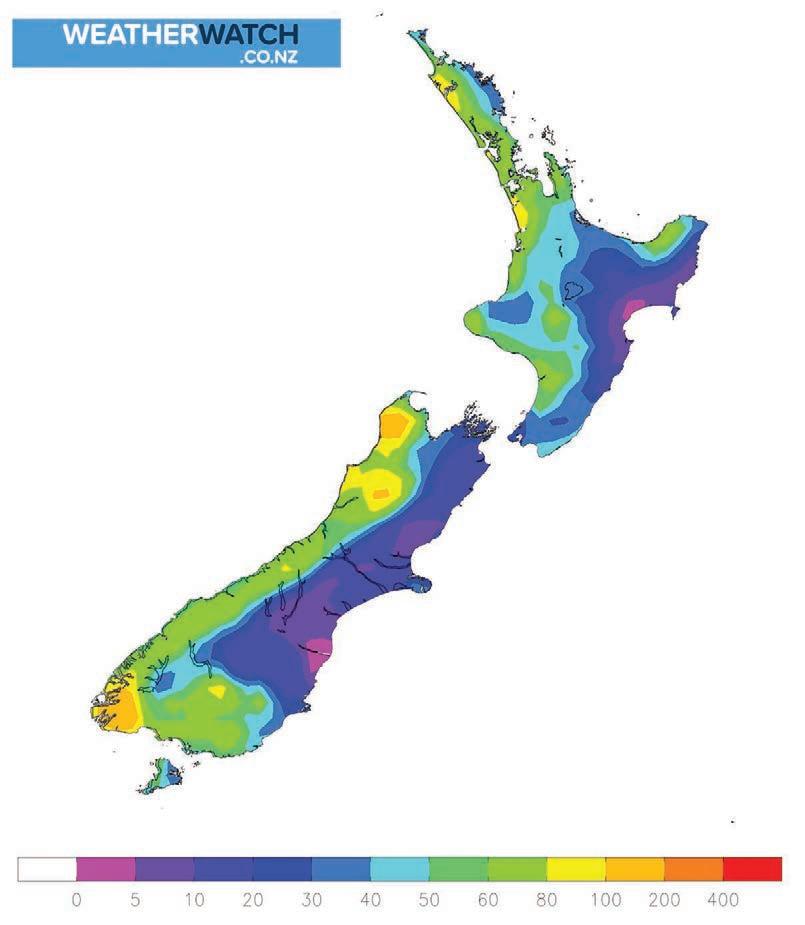
Grab your Maize

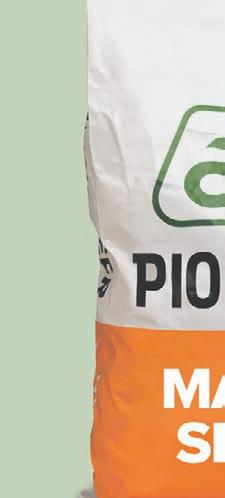

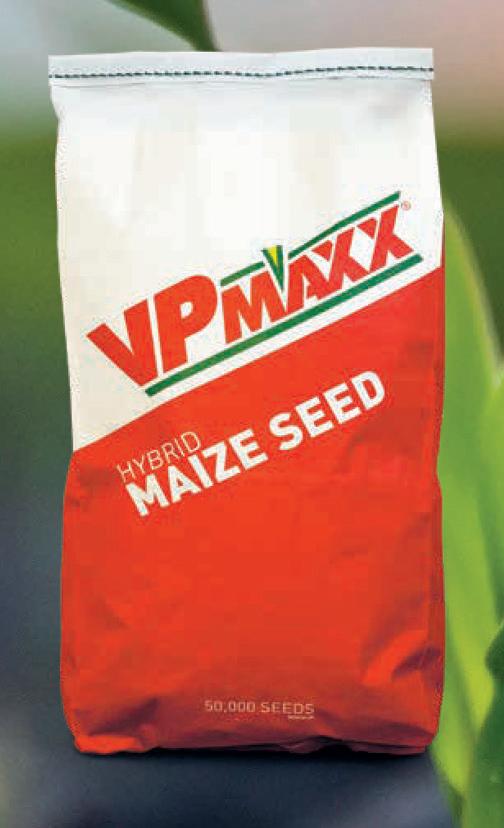
& Bag A Bonus
Order your Pioneer or VPMaxx Maize through Farmlands this winter, and get a $50 Farmlands Chem Card for every 10 Bags of Pioneer or 16 Bags of VPMaxx maize seed you buy PLUS you’ll be covered by the 100% replant policy. This deal only lasts until July 31st so strike while the offer is hot. *Terms and Conditions apply. Must be on one transaction, max of 5 Chem Cards per Shareholder. Only available for Seed ordered May–July 2023. Find out more by visiting farmlands.co.nz. Talk to your TFO or agronomist today, or head into your local Farmlands store.
FAR_10906 34 Weather ruralweather.co.nz
Philip Duncan NEWS Weather
Make your sheep farming easier and more profitable

Wool
Be our guest…
The Wairere team will be on the road in July. Bringing you ideas to make your sheep farming easier and more profitable. All welcome, come and enjoy our hospitality.
July 6 Thursday 4pm Gladstone Inn near Masterton
July 7 Friday 4pm The Gretna, Taihape
July 10 Monday 4pm Otane Hotel, Hawkes Bay
July 11 Tuesday 4pm Wairoa Golf Club
July 12 Wed 4pm Rusty Nail Pub, Taumarunui
July 13 Thursday 4pm Cosmopolitan Club Pio Pio
July 14 Friday 4pm TET Sports Centre, Stratford
July 17 Monday 3pm Culverden Hotel
July 18 Tuesday 10am Willesden Farm Office, Banks Peninsula
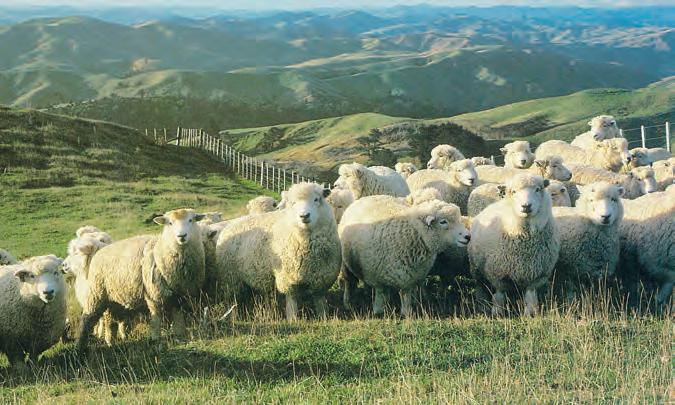
July 18 Tuesday 3pm Oxford Working Men’s Club
July 19 Wednesday 3pm Pleasant Point Hotel
July 20 Thursday 3pm Lawrence Golf Club
July 21 Friday 3pm Wyndham Hotel
July 22 Saturday 3pm Lumsden Hotel
0800 Wairere (0800 924 7373)
Romney ewes with ram lamb sire, 1986 (above left) and purebred Nudie and first-cross Nudie hoggets at Wairere, May 2023
you? Won’t you?
Success breeds Success
What’s most important to you? More lambs? Faster growth? Parasite resilience? Less work?
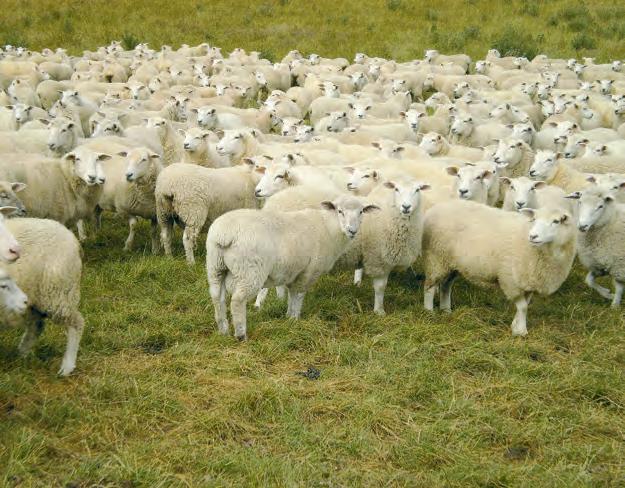
Presentations will include global sheep meat supply/demand, accessing premiums, profit per hectare/your sweet spot, the future of wool, Nudies, ways to reduce costs, future technology, drench resistance, the Wairere high productivity index, client commentary, and the latest news from our biggest sheep farming competitors and markets.
Wairere’s breeding base of 22,000 ewes and hoggets has expanded from Romney to East Friesian Romneys to composite, to Dominator terminals, to FE resilient, to Romney / Merino, and now Nudies.

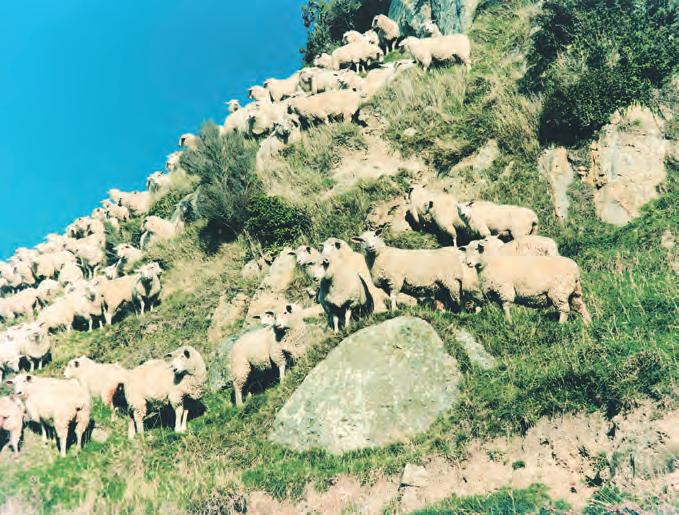
0800 Wairere (0800 924 7373)
Wairere composite ewe hoggets with lambs.
East Friesian ewe hoggets, 1997.
Two tooth ewes at White Rock Station, April 2023. Wairere sources twin ram lambs from White Rock.




















































 Richard Rennie MARKETS Emissions
Richard Rennie MARKETS Emissions



























 Wallace NEWS
Wallace NEWS











































































































































































 Suz Bremner MARKETS
Suz Bremner MARKETS



















































